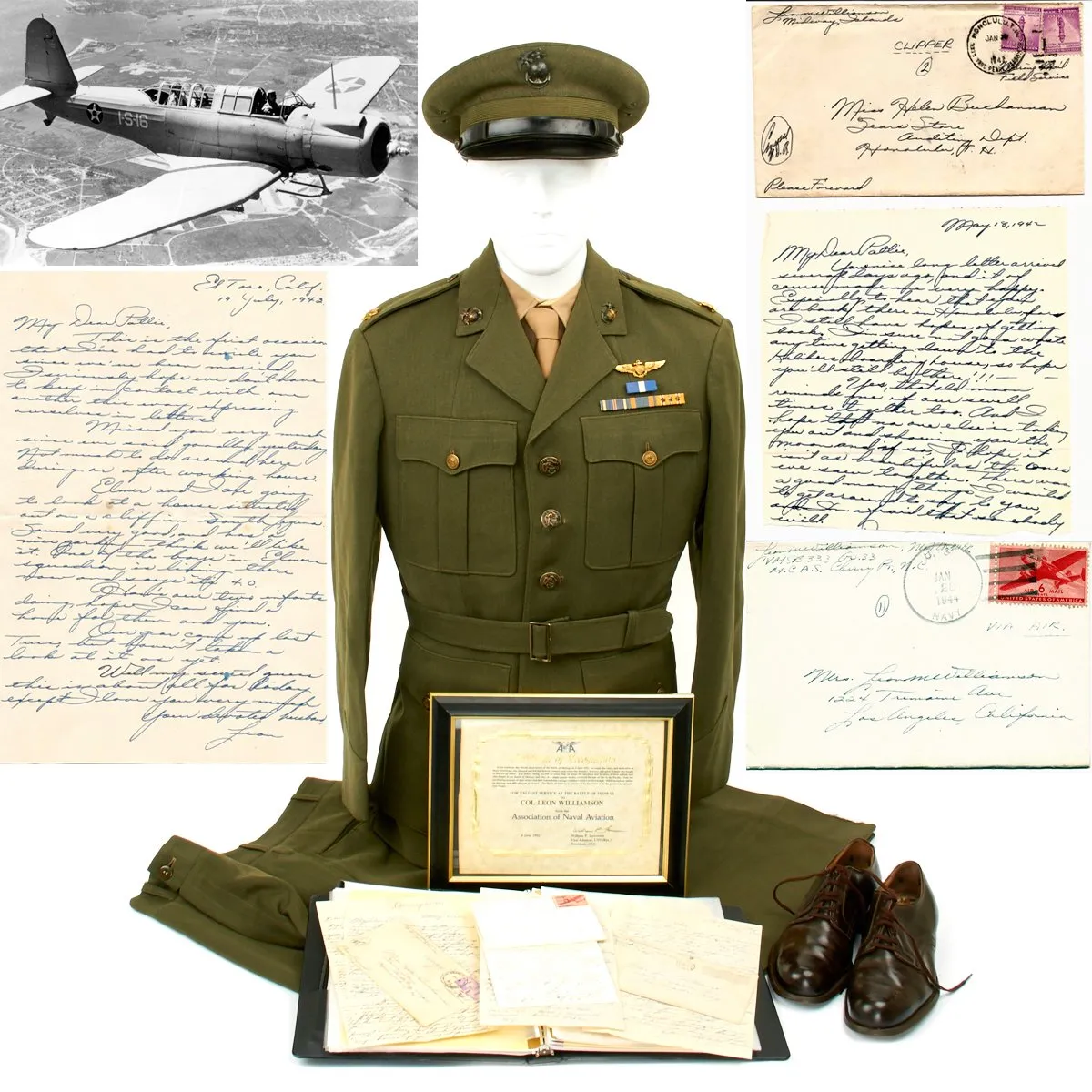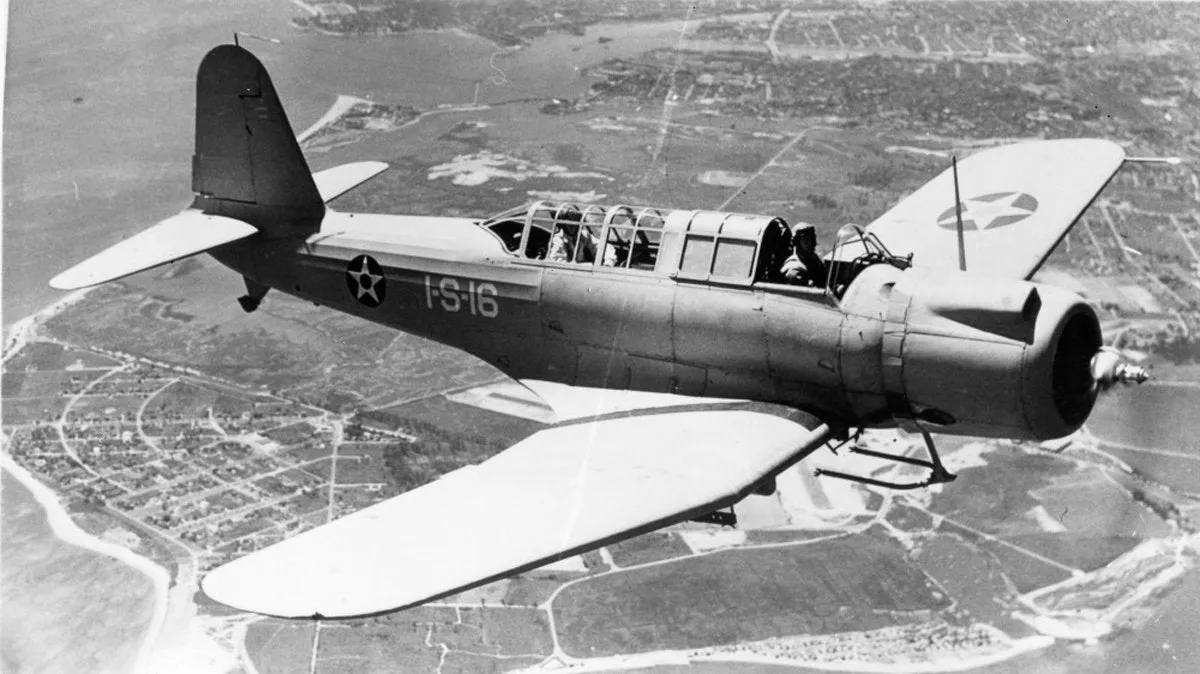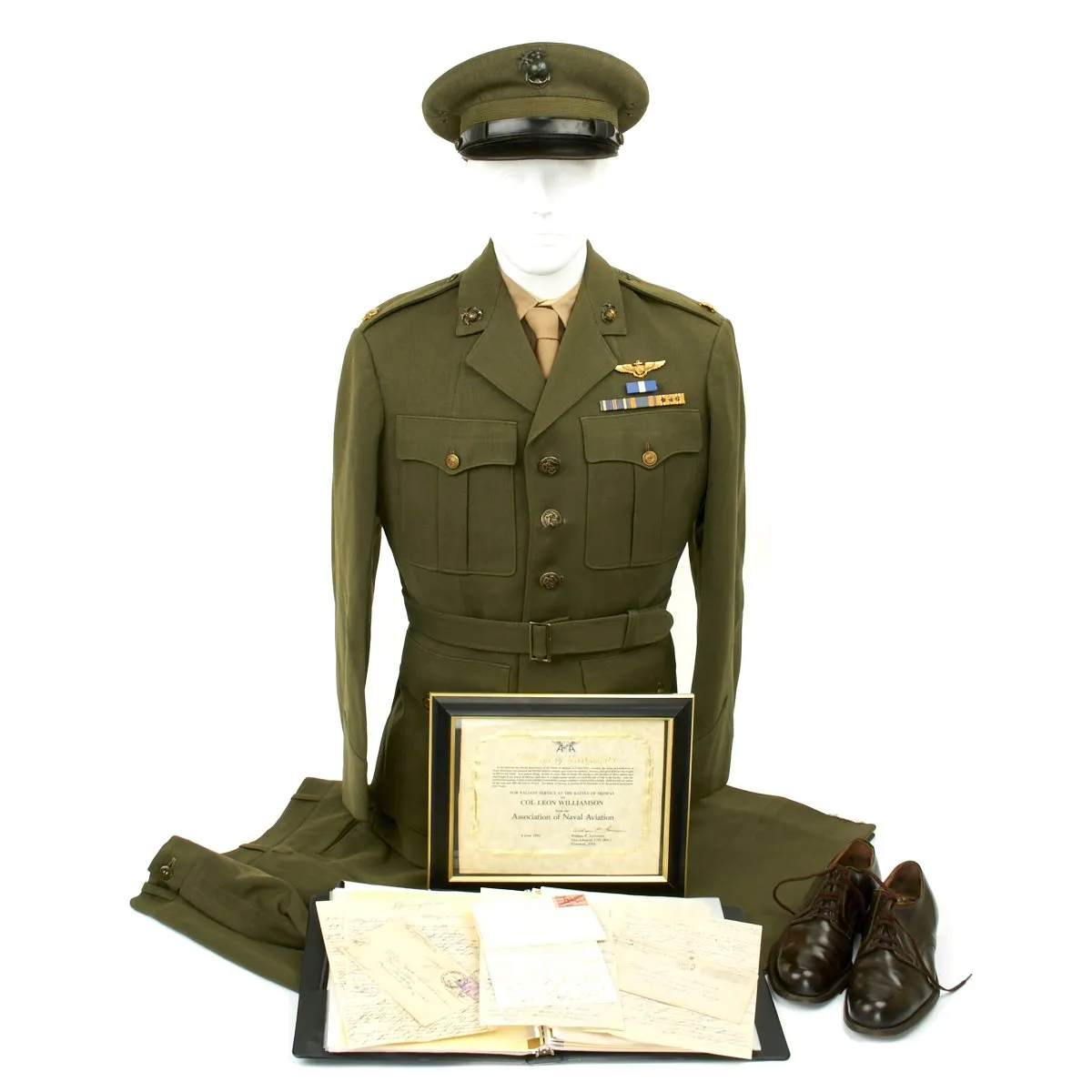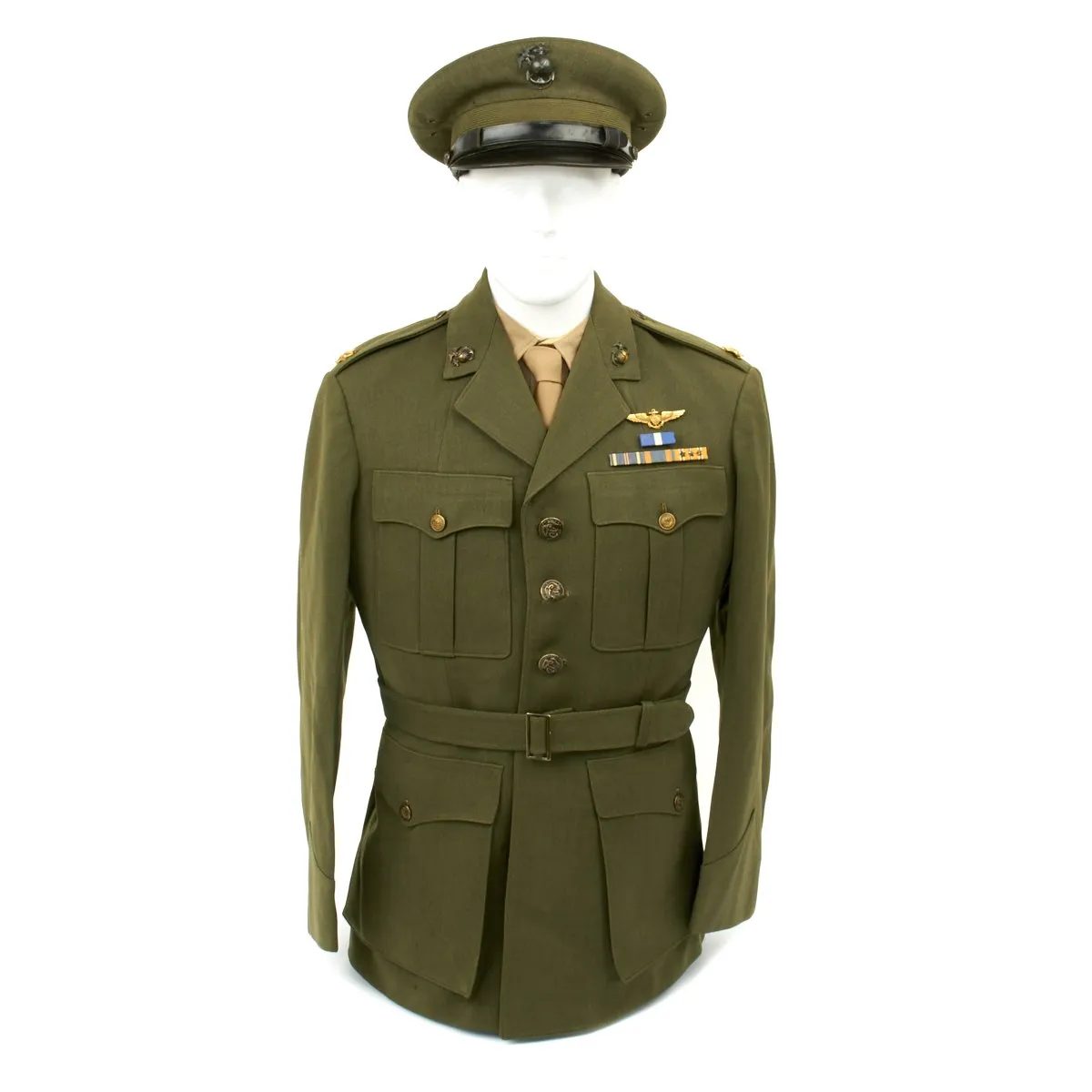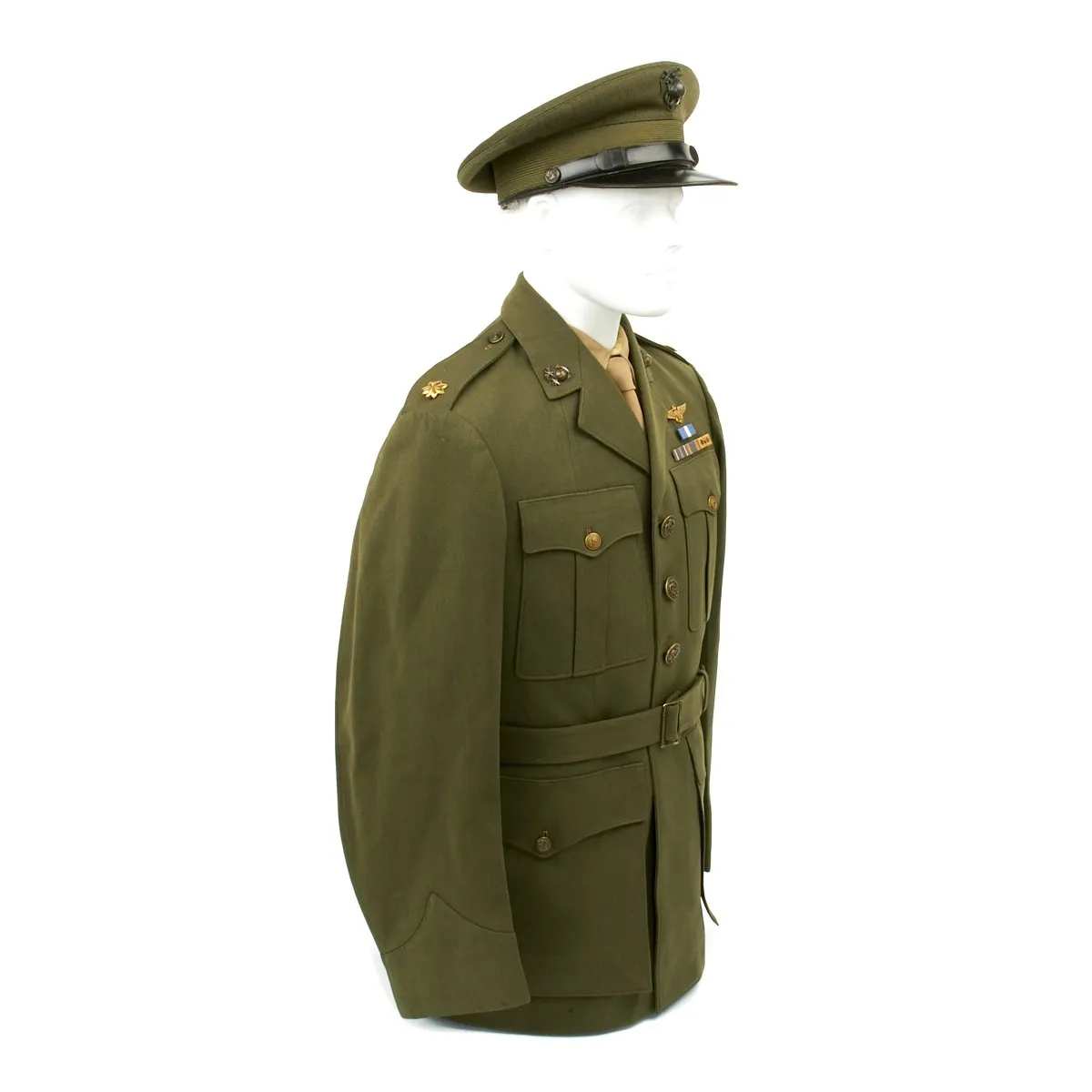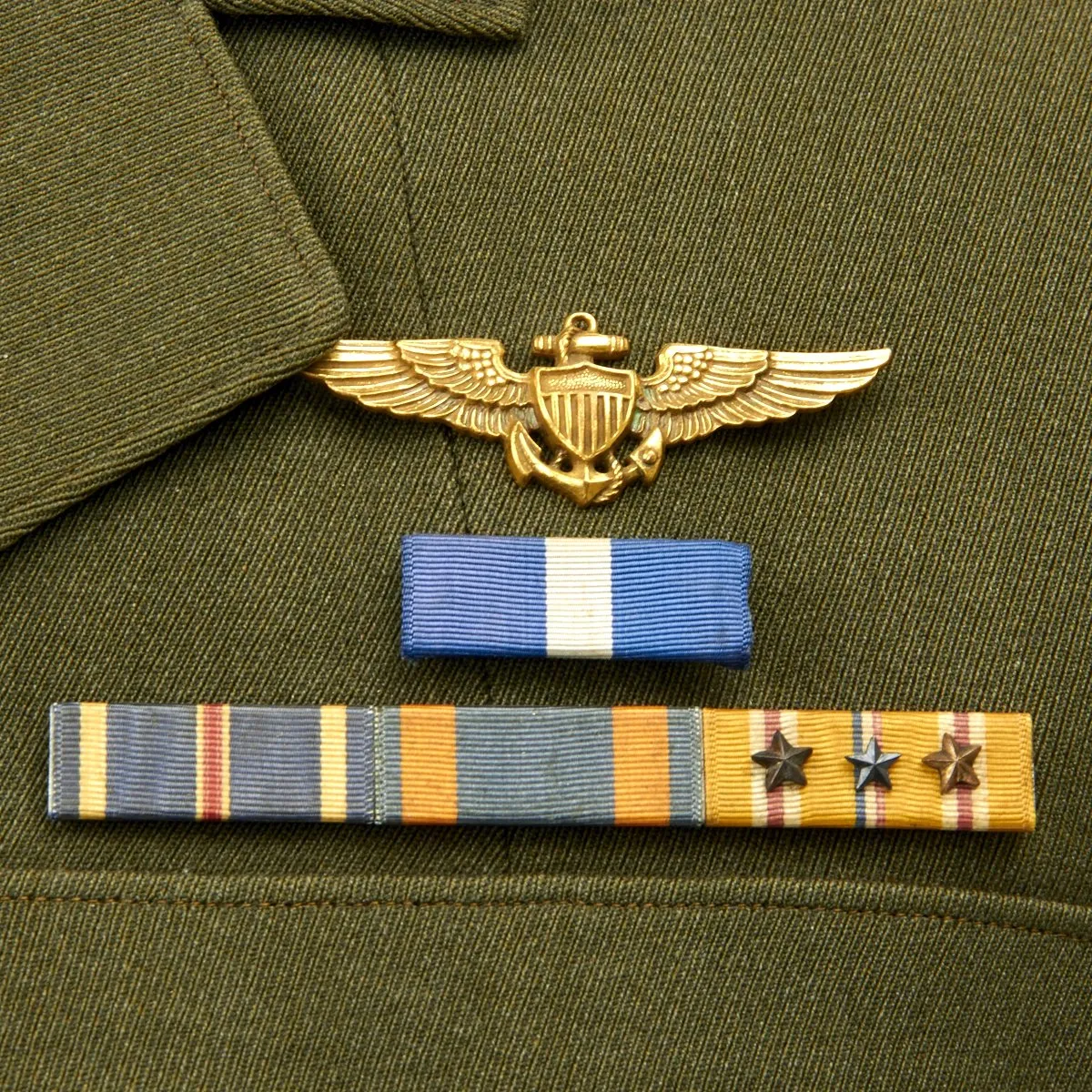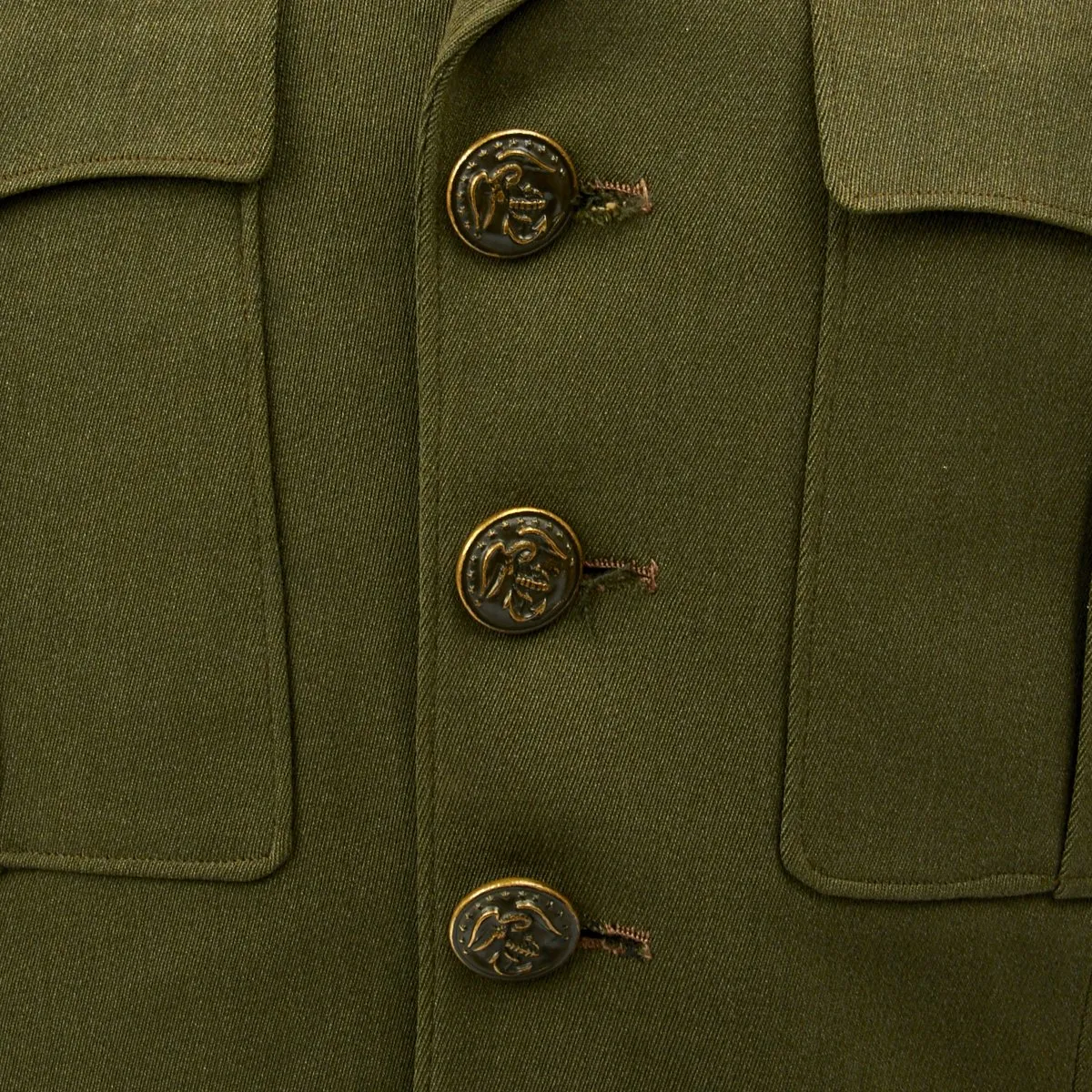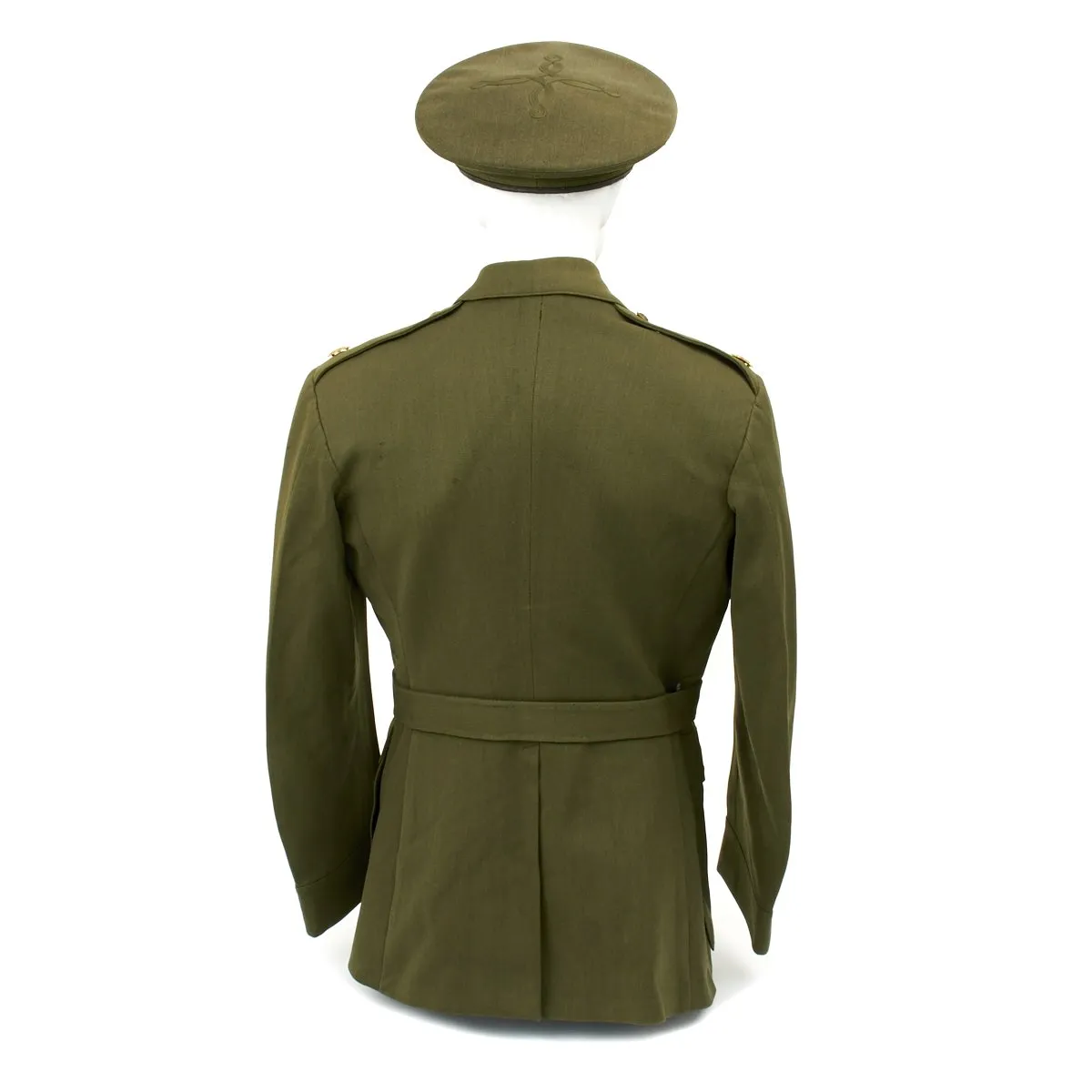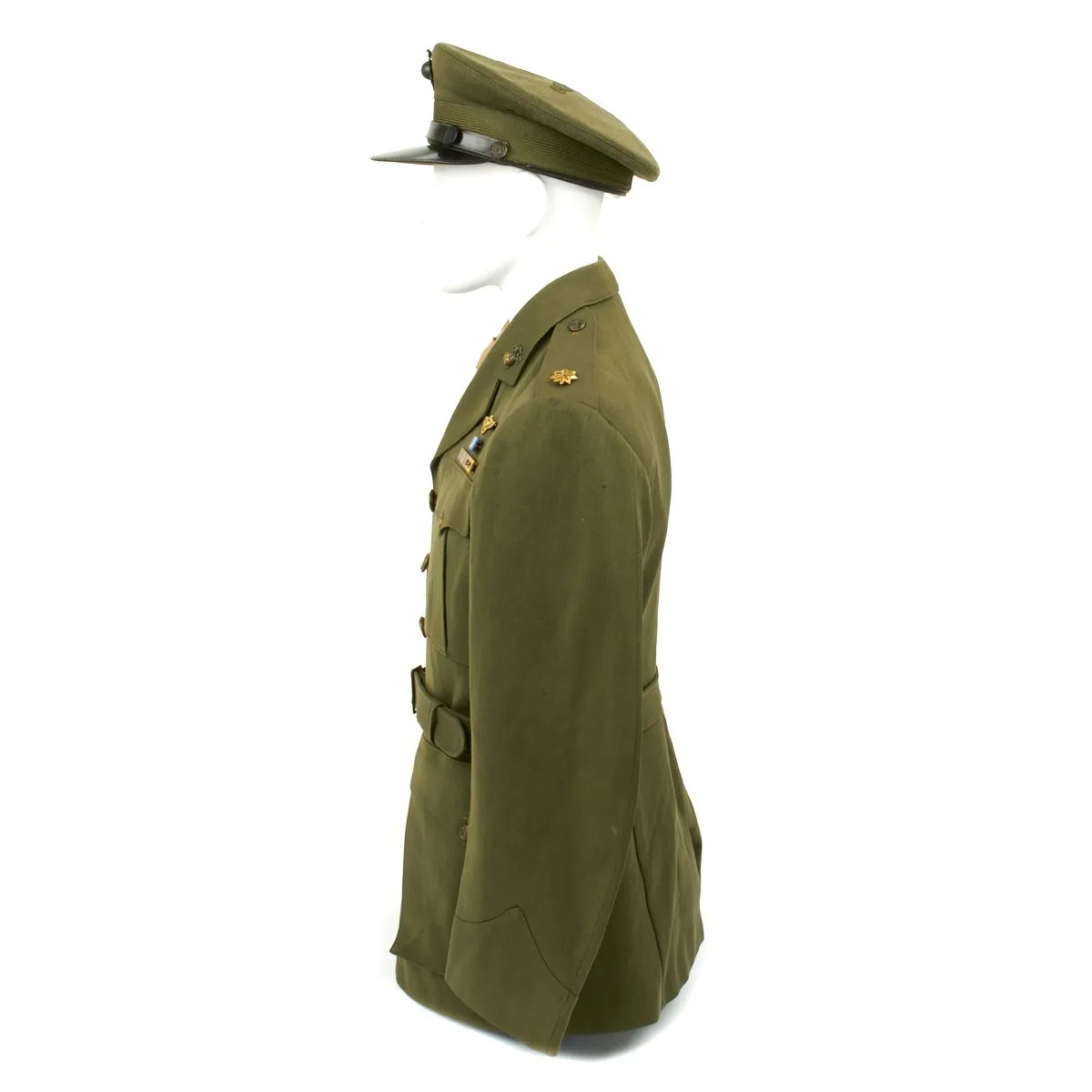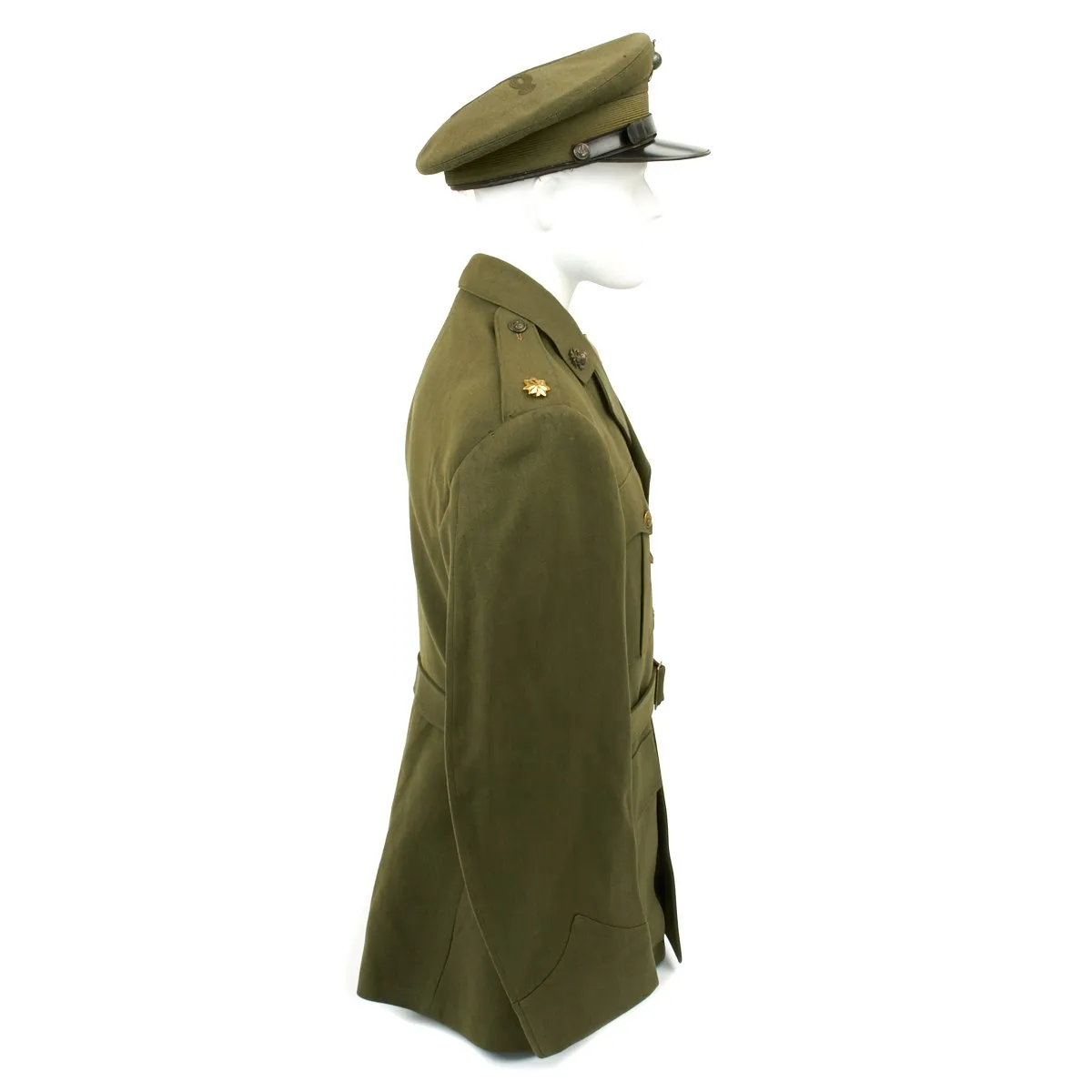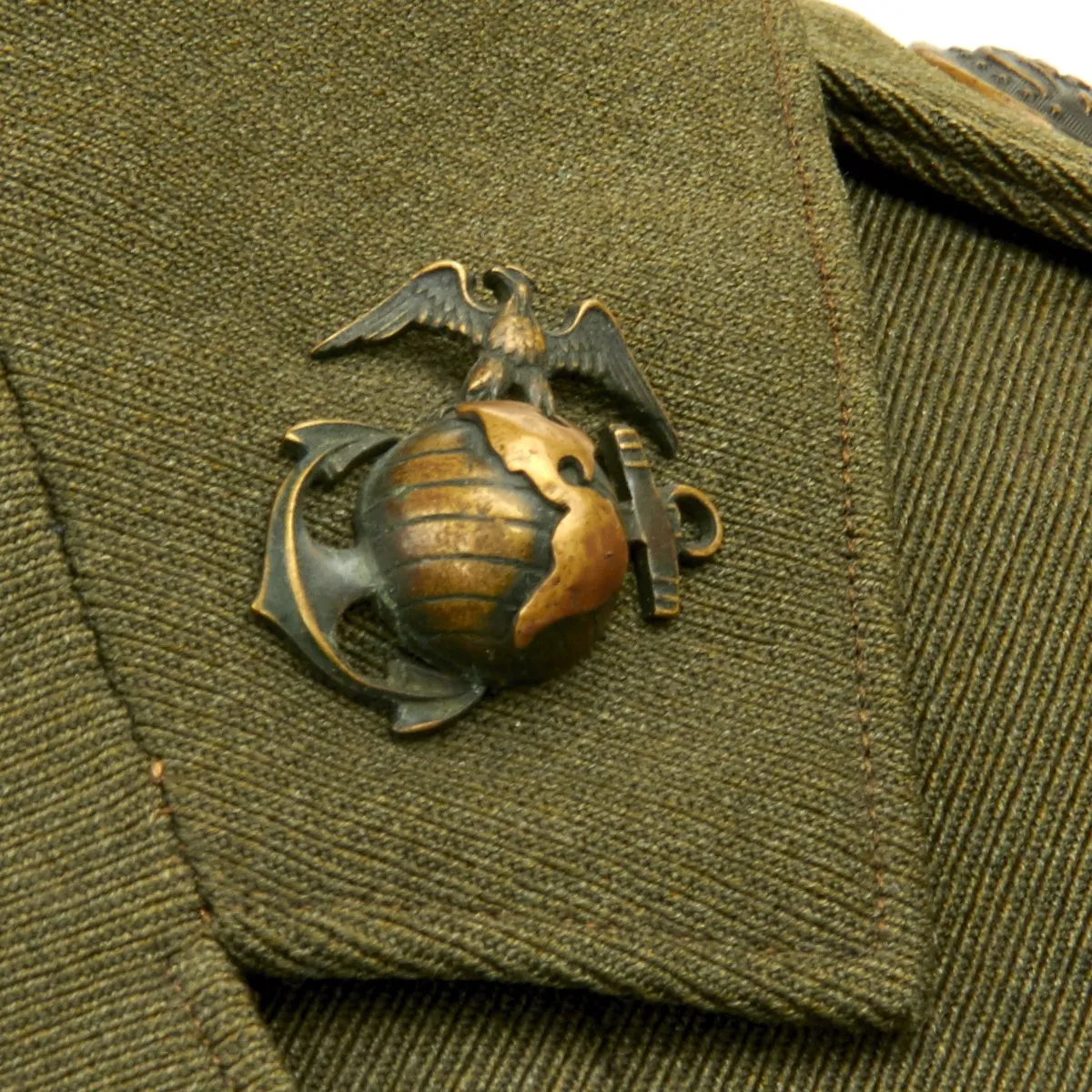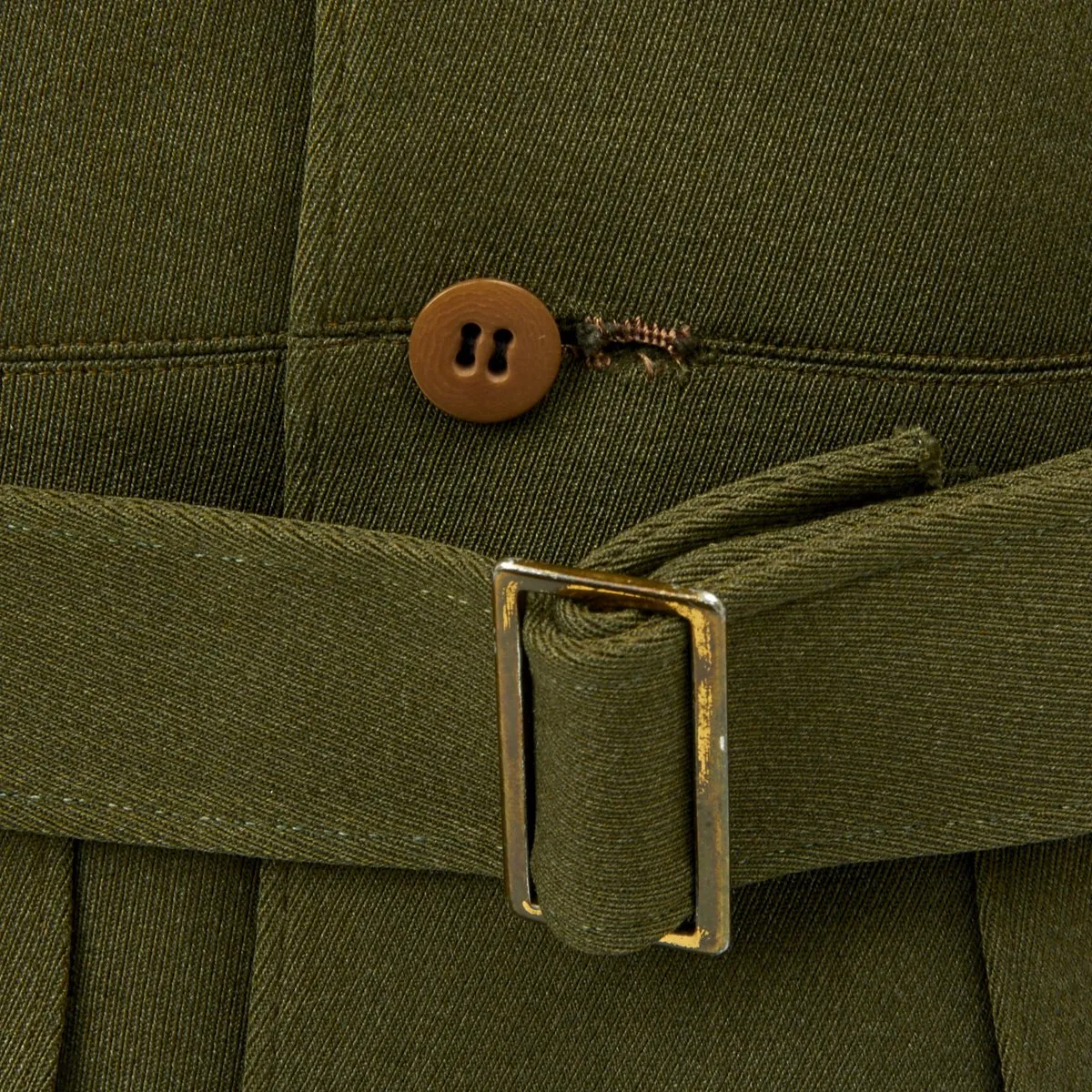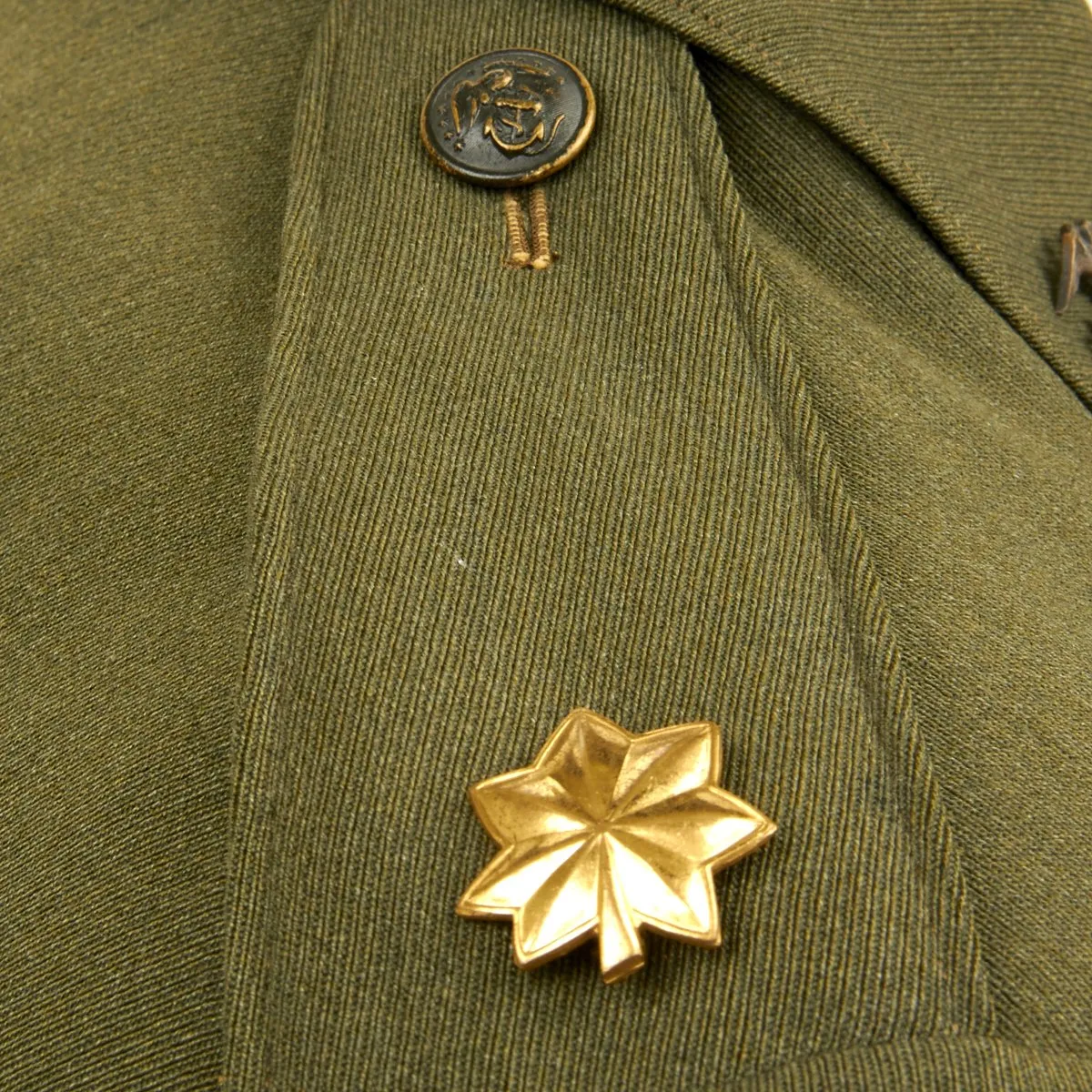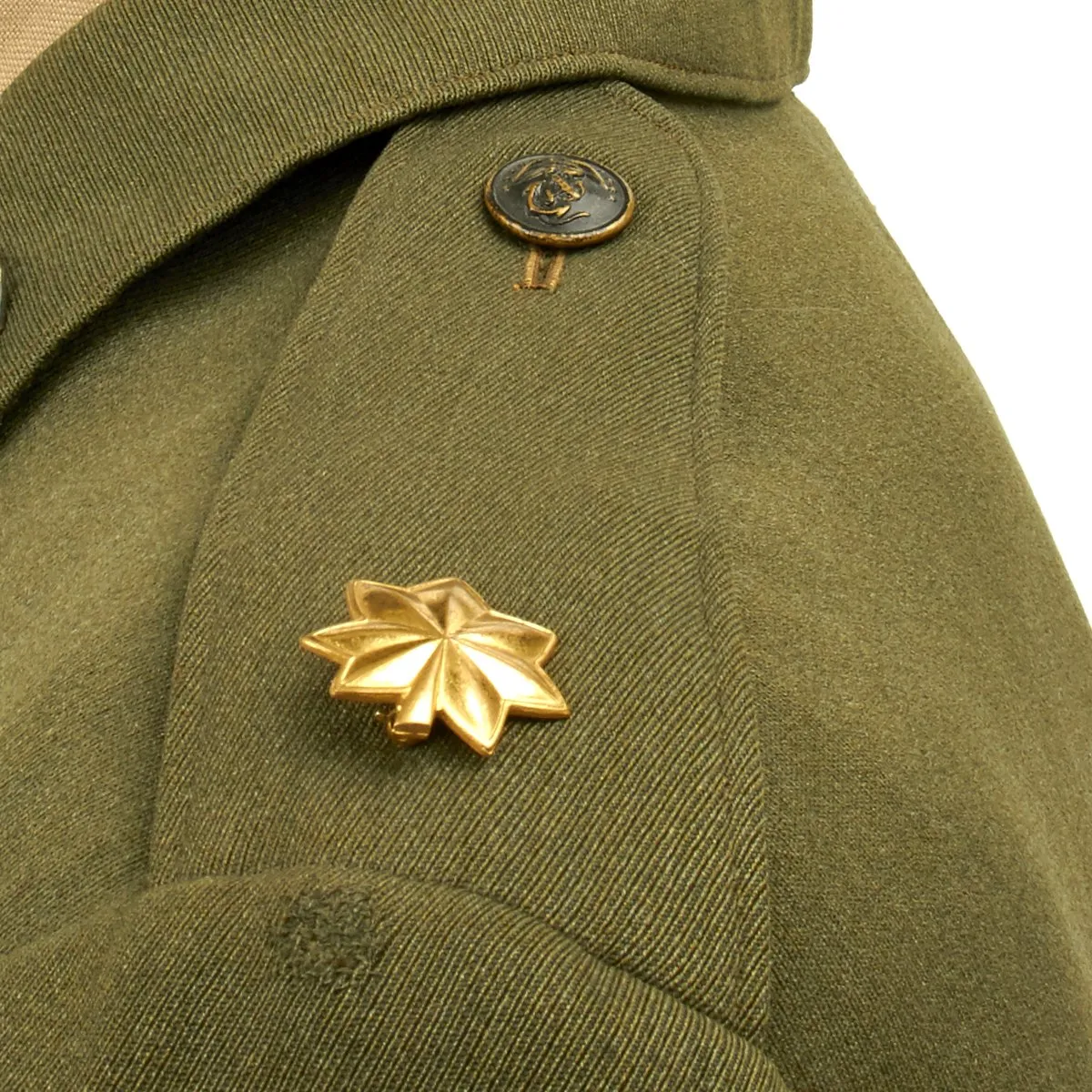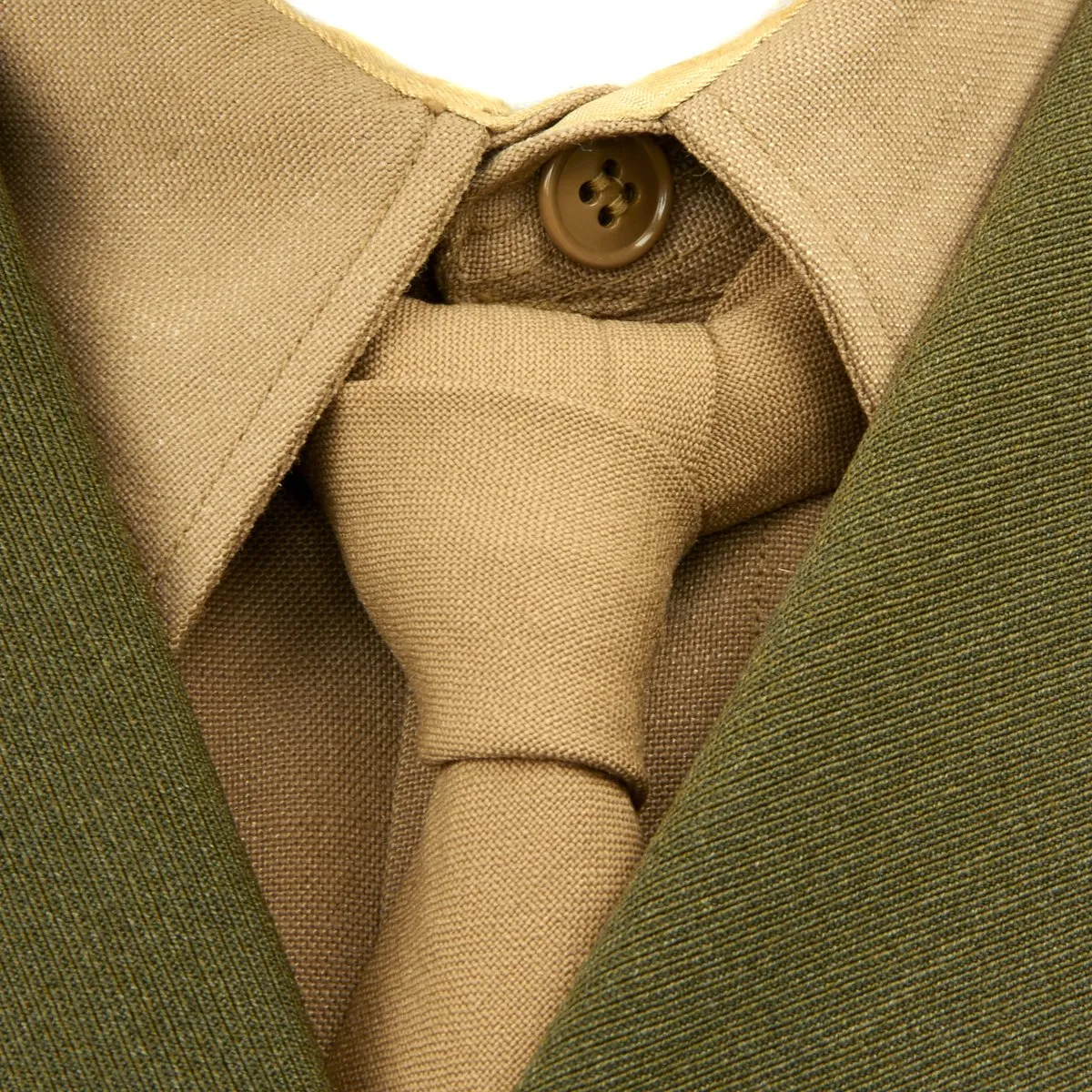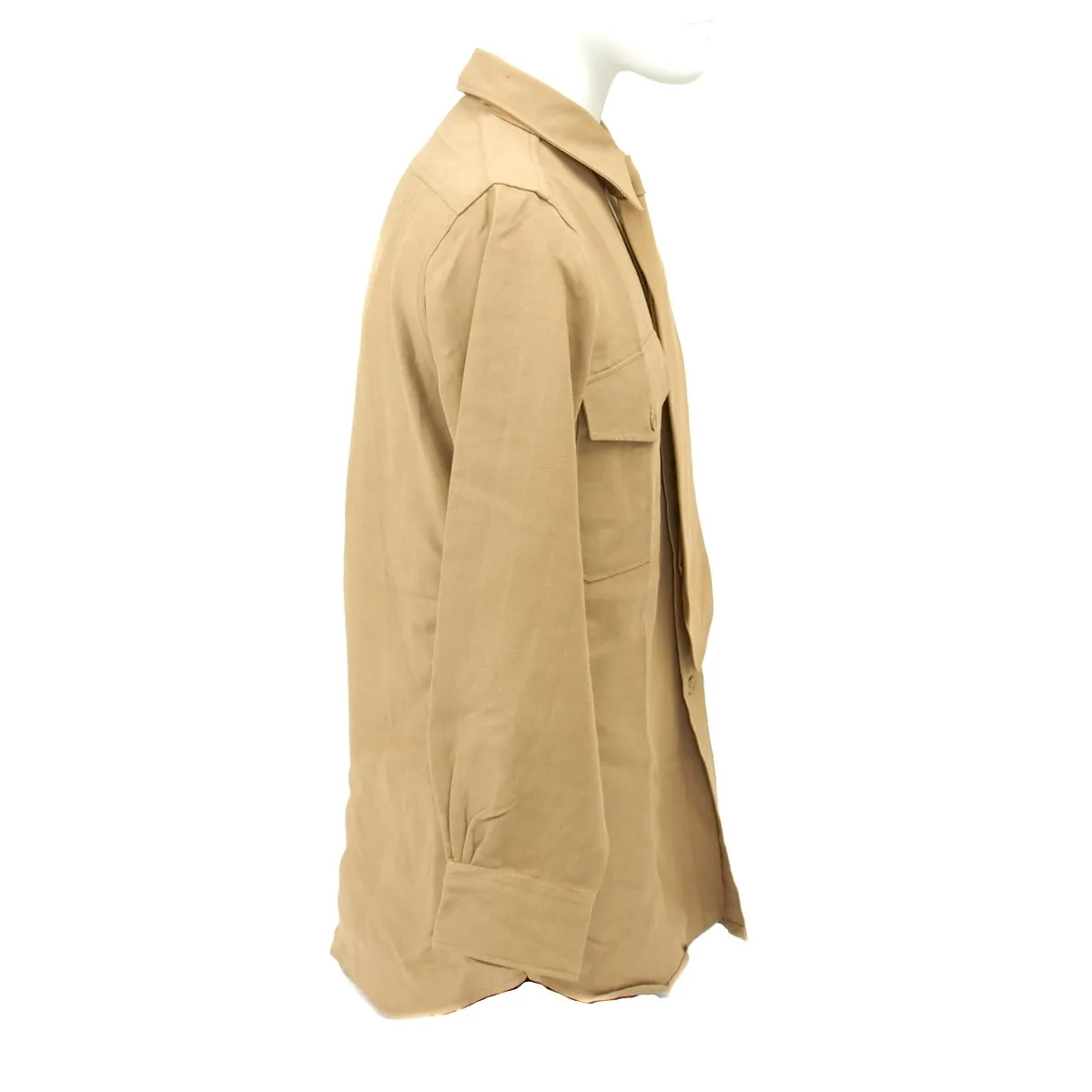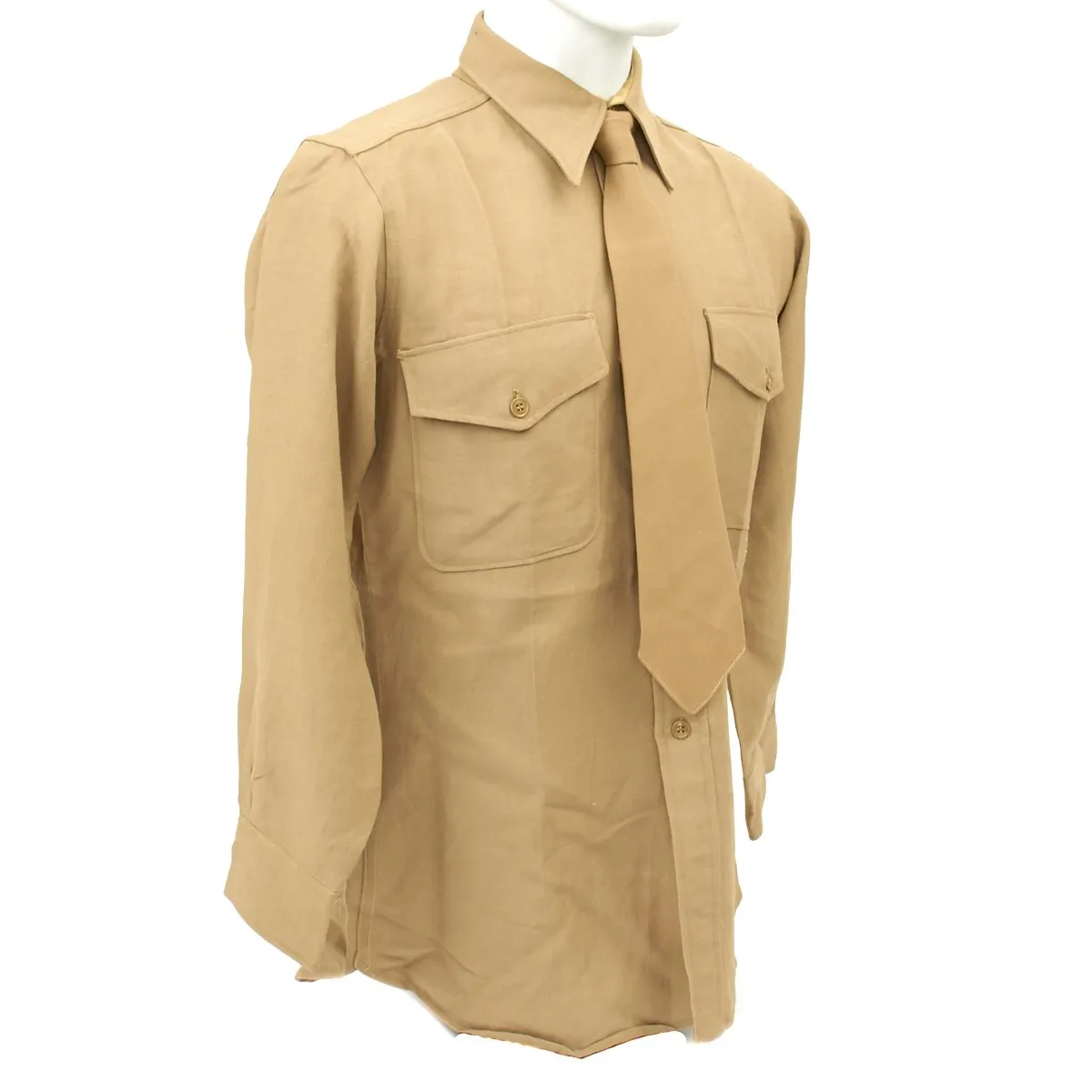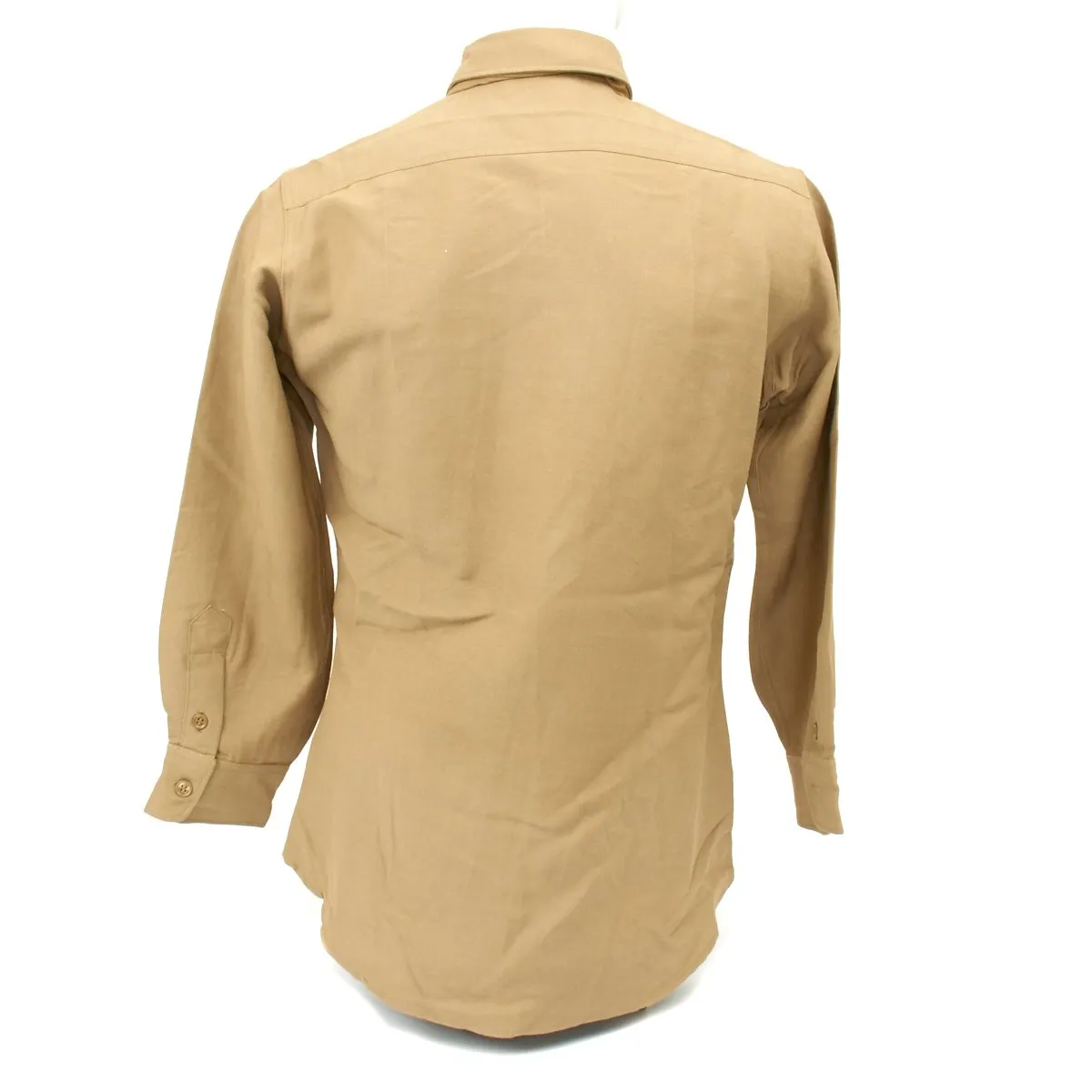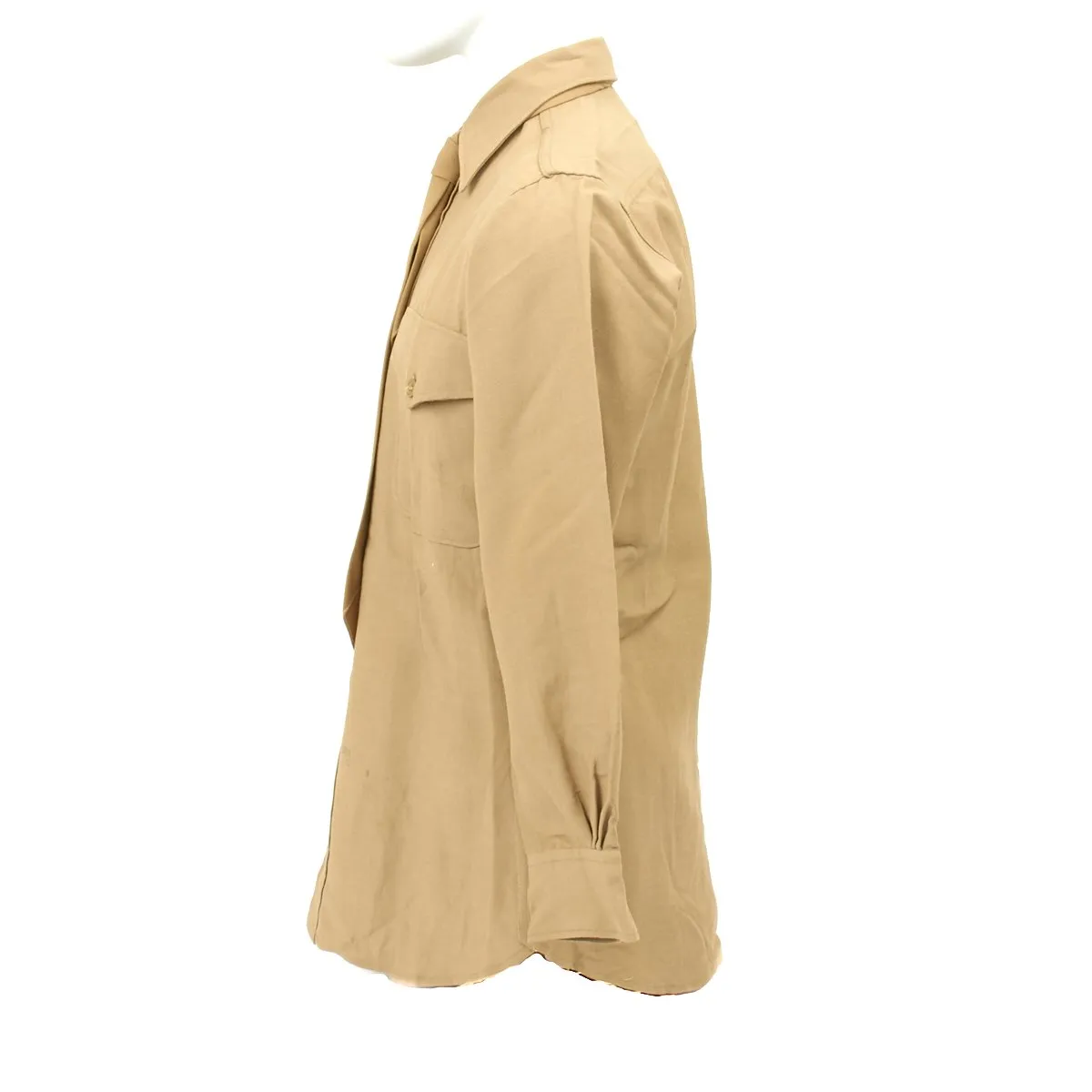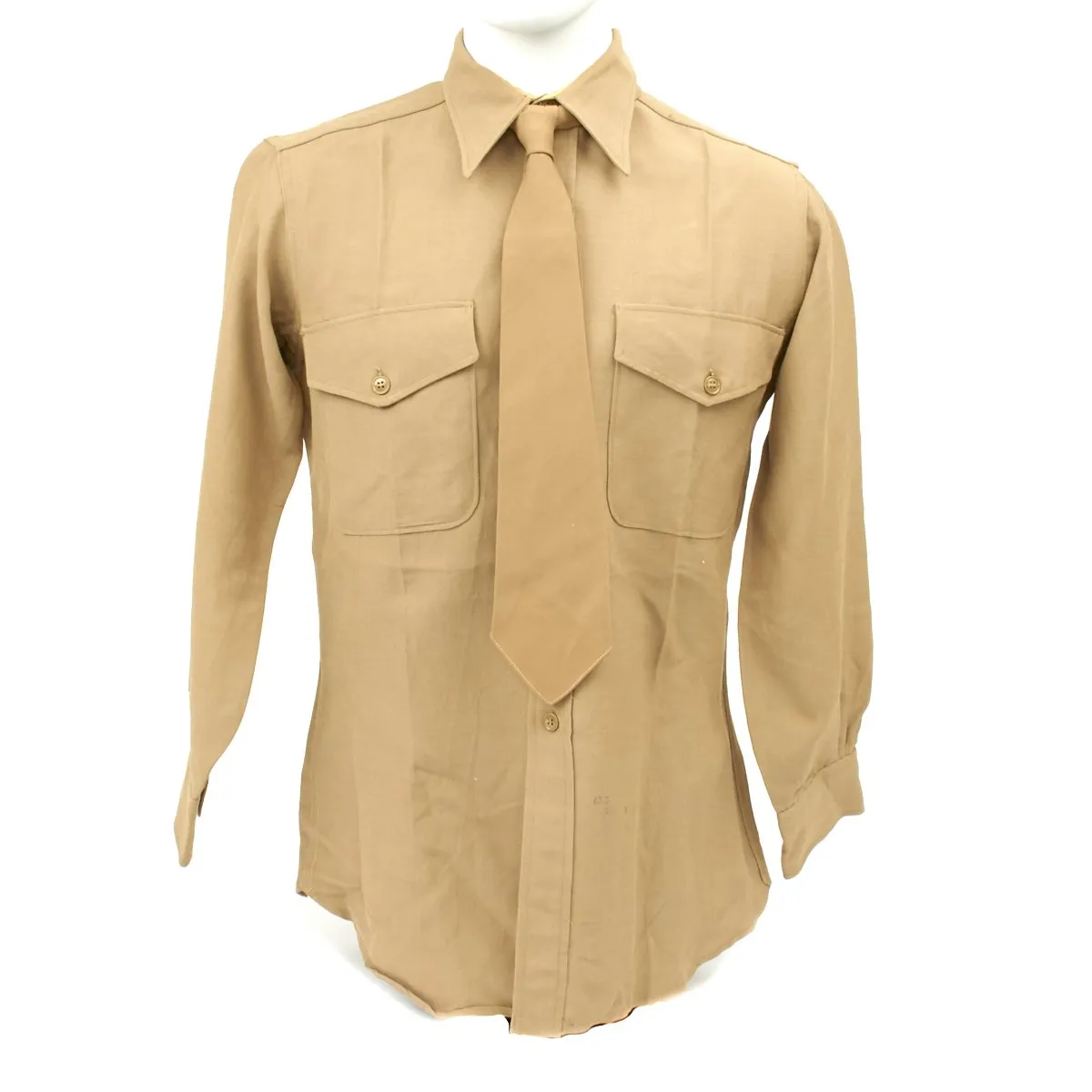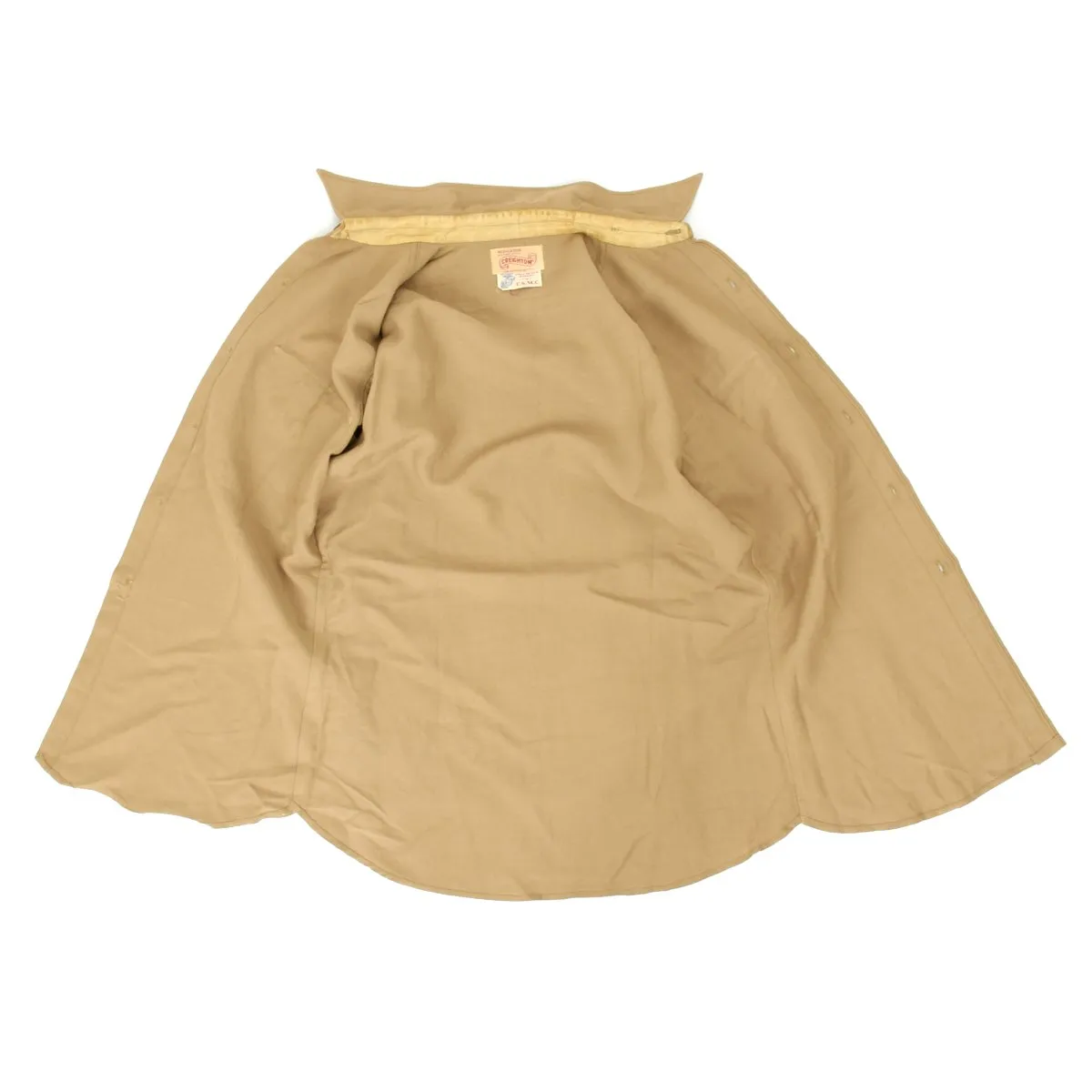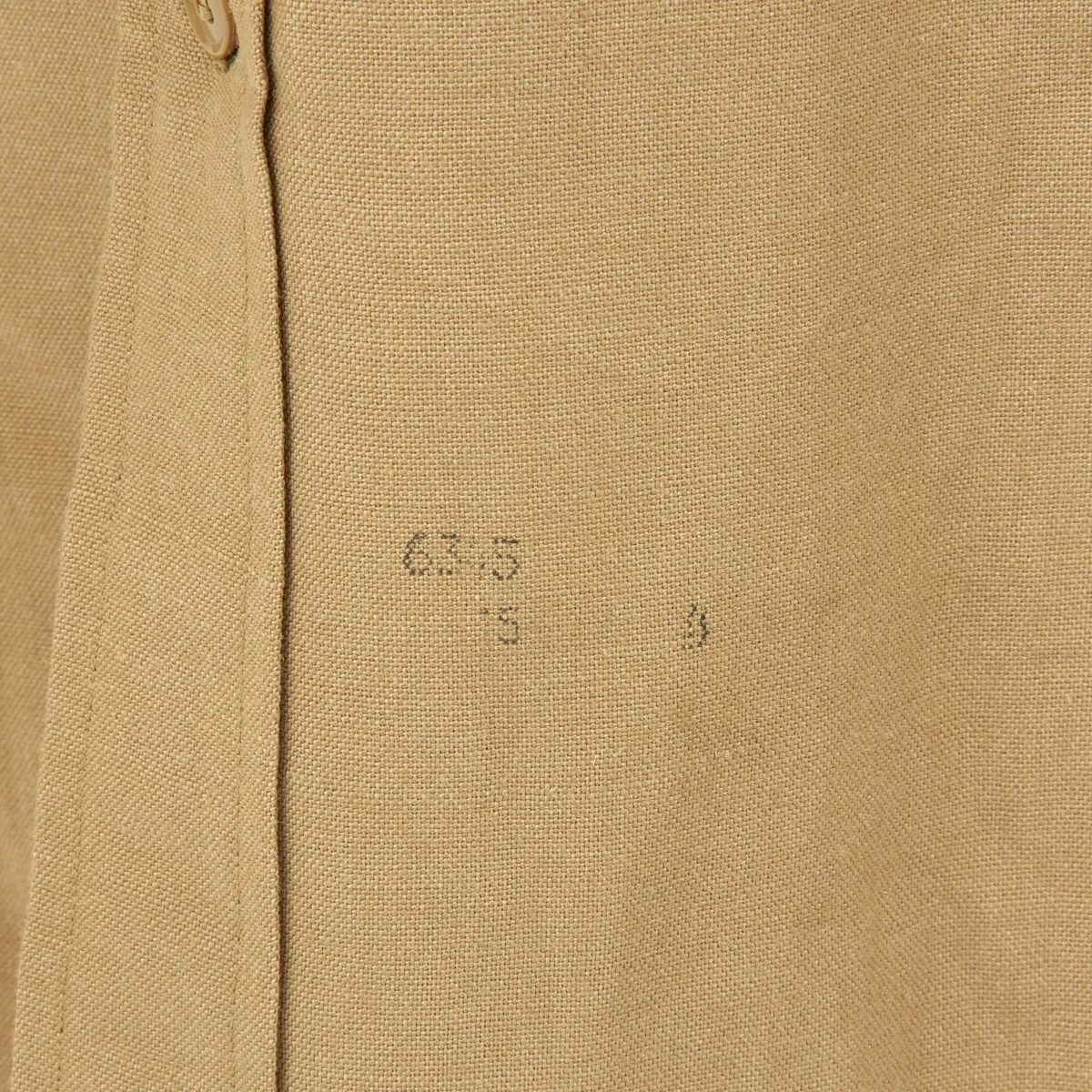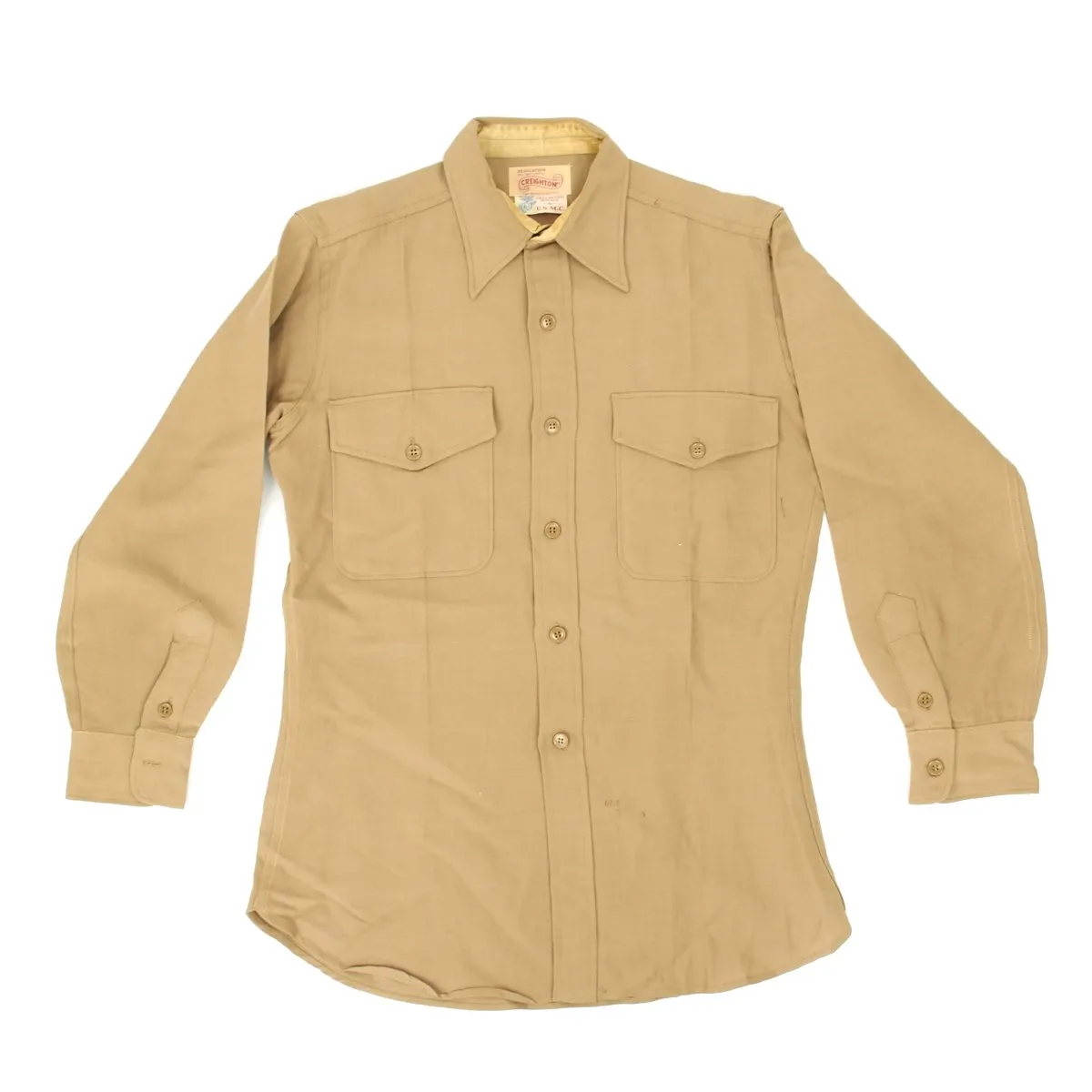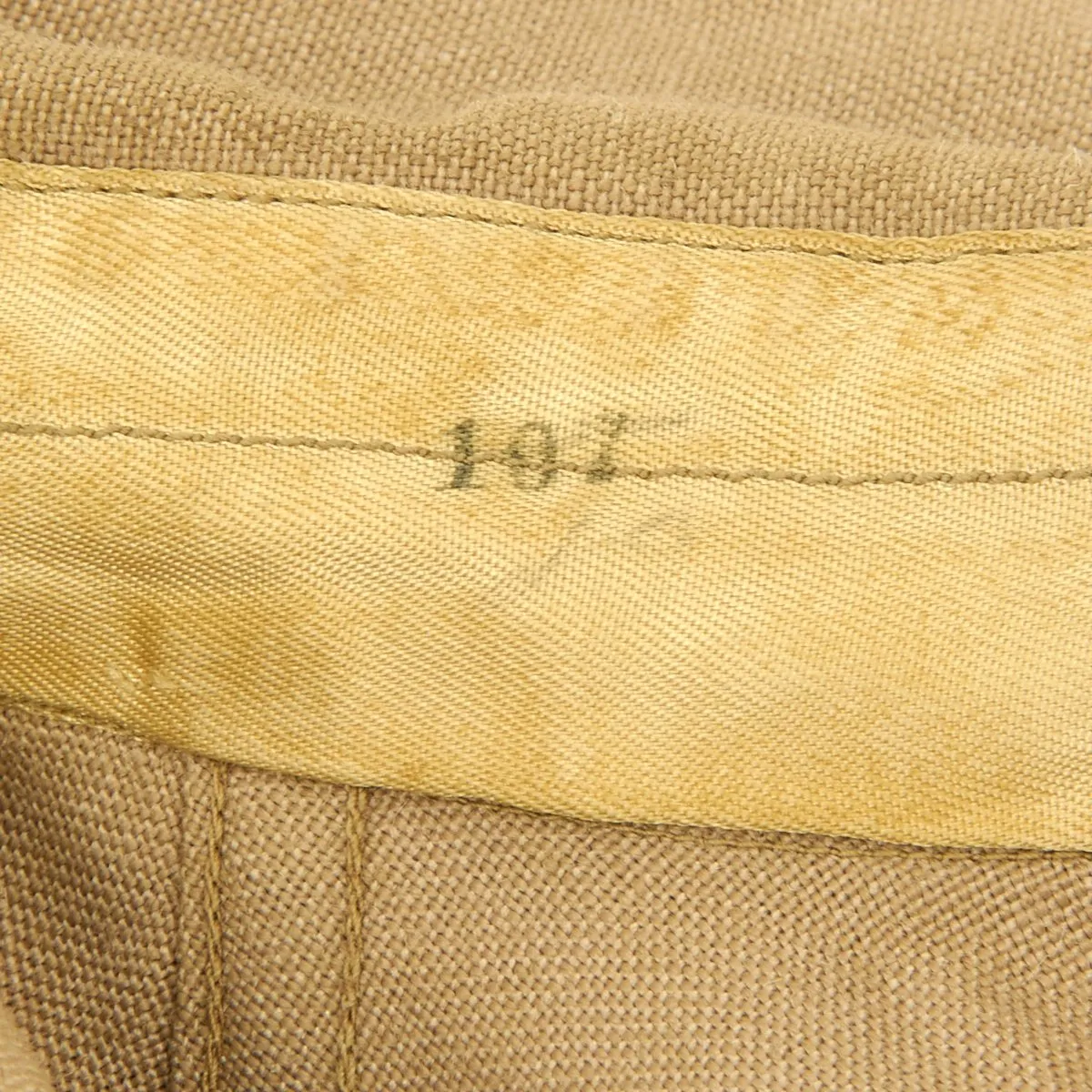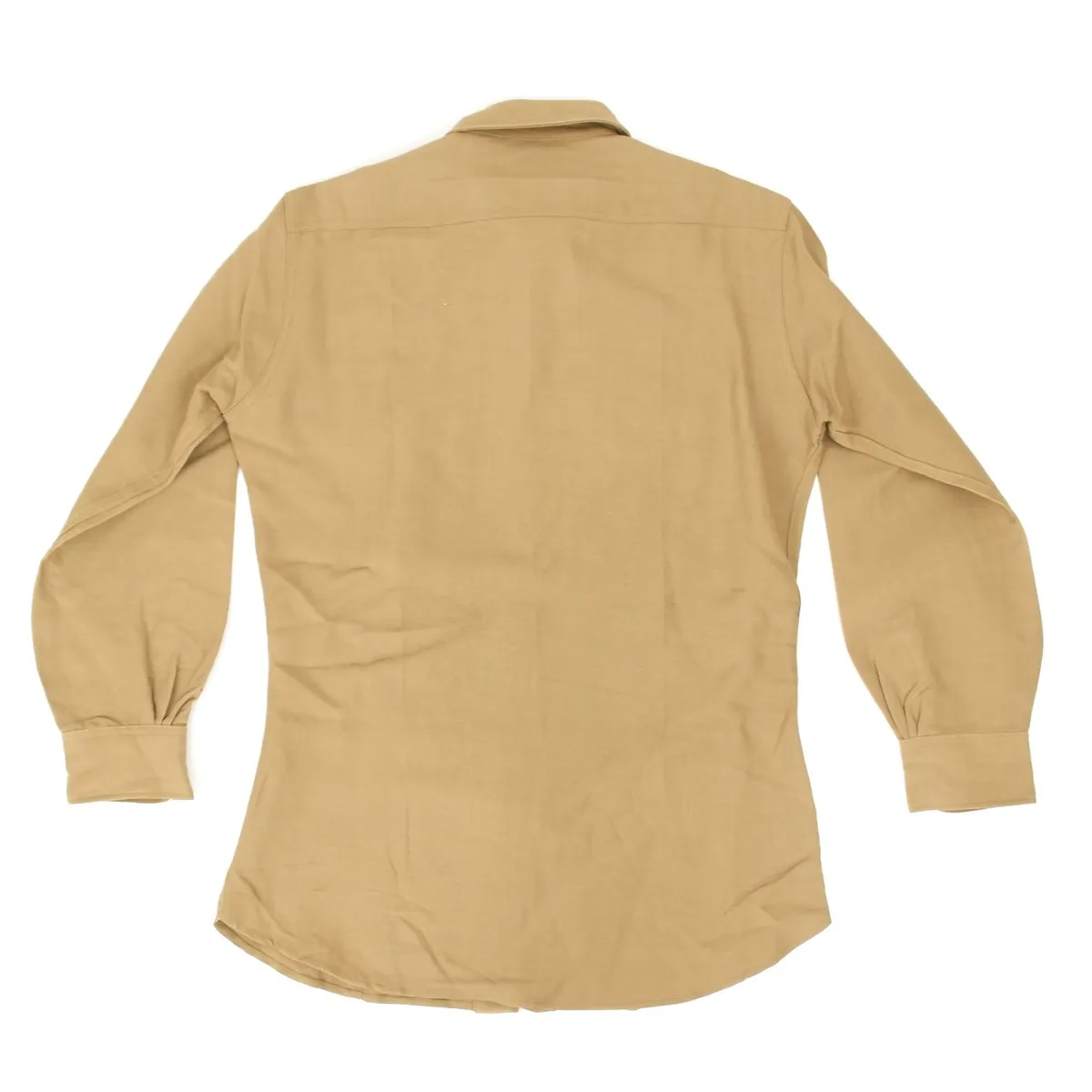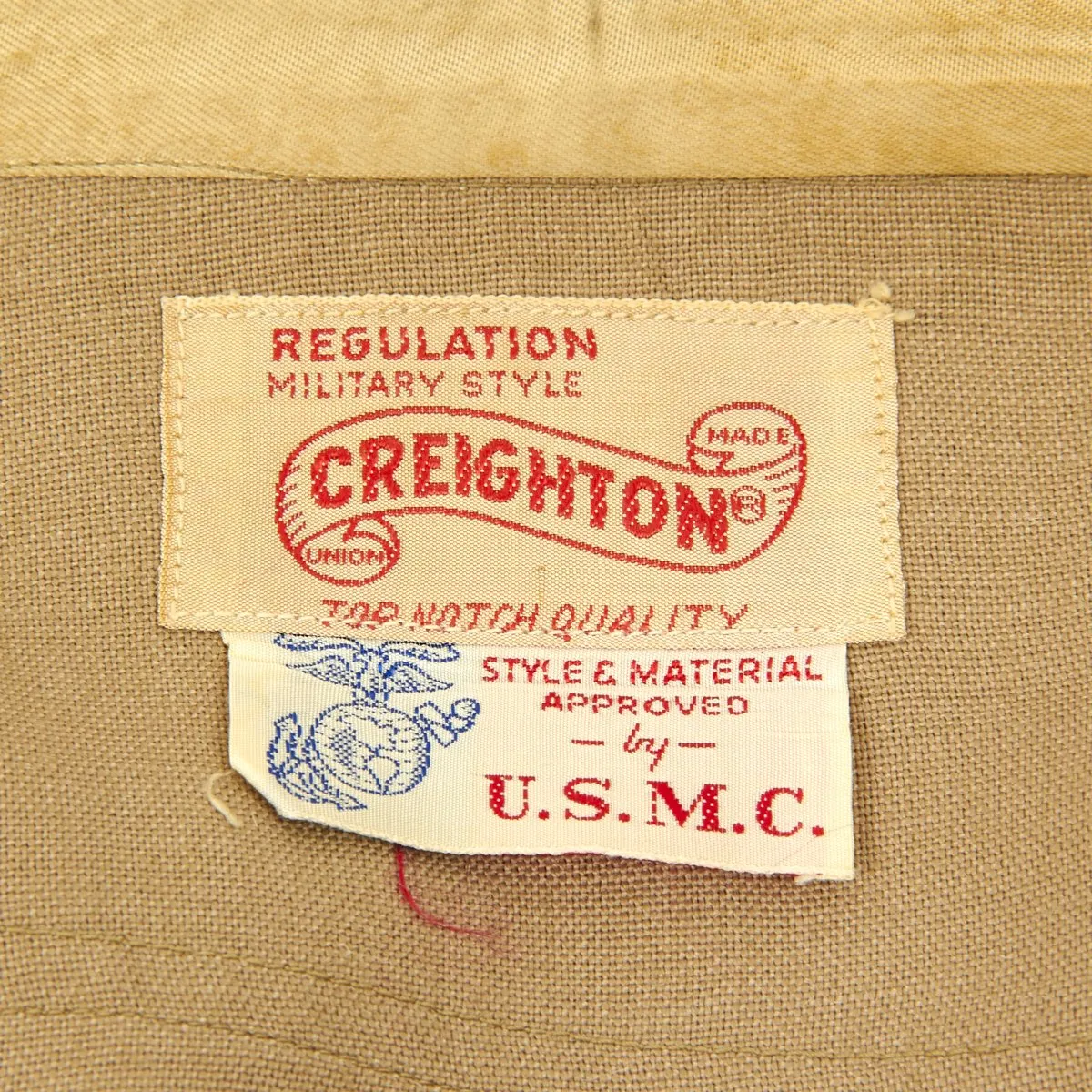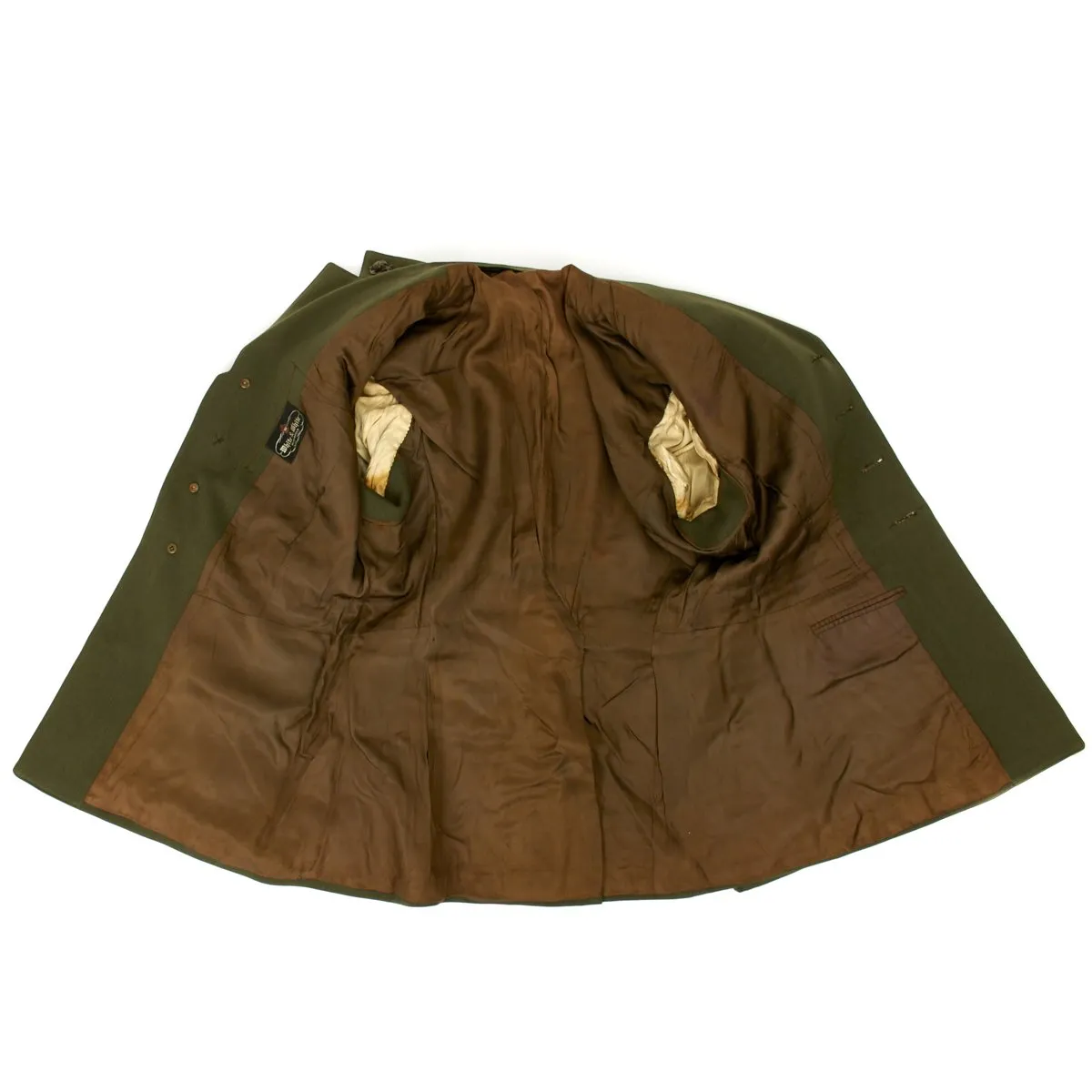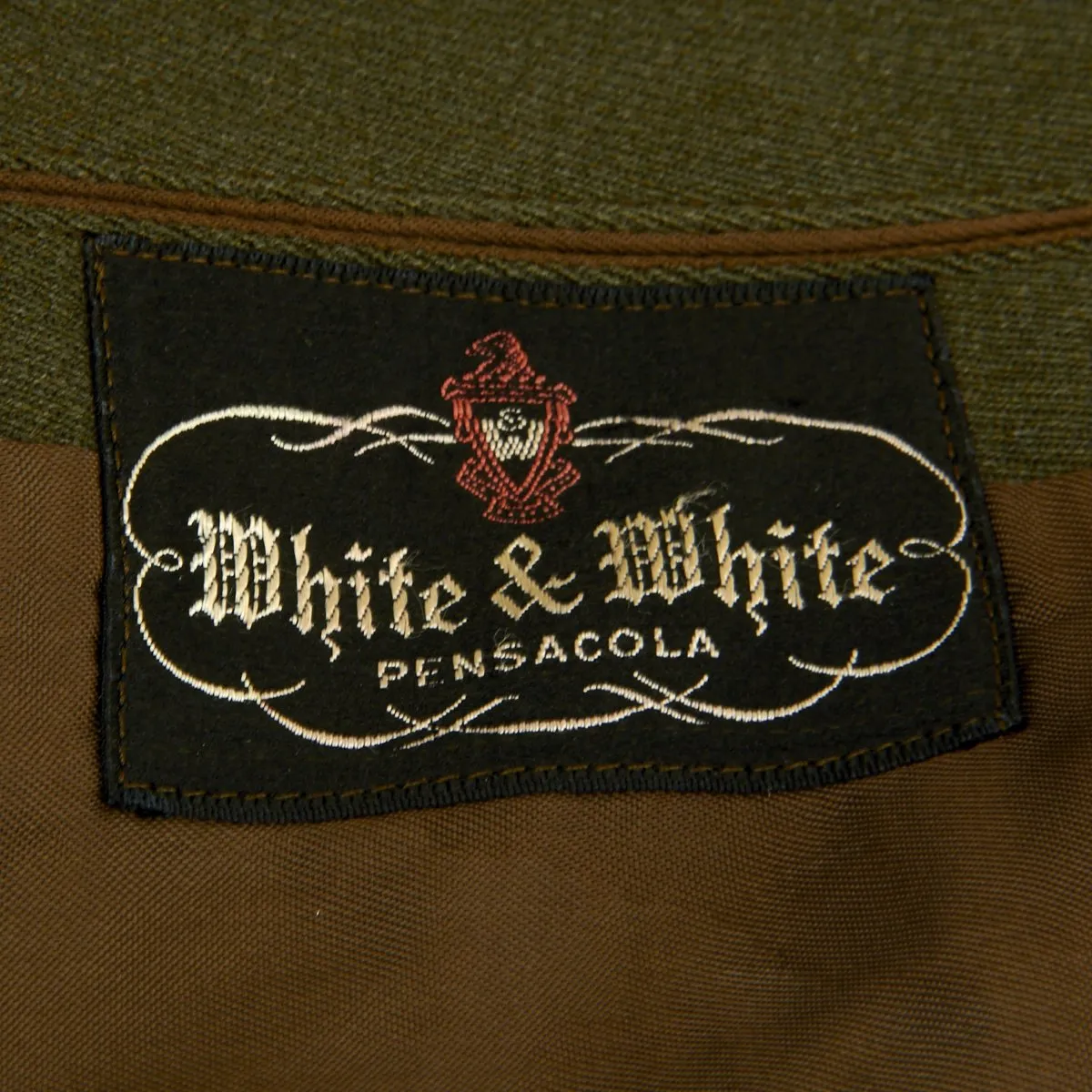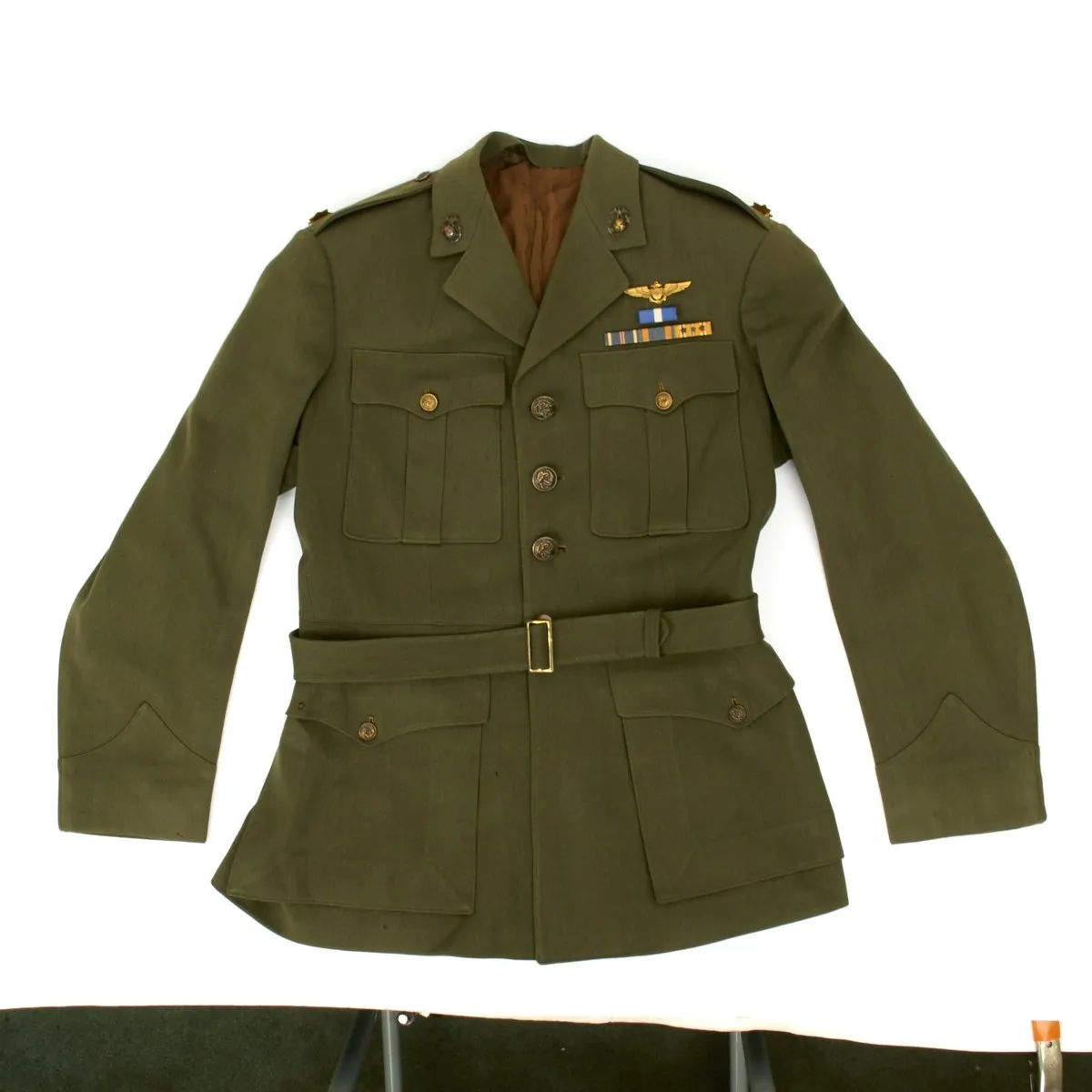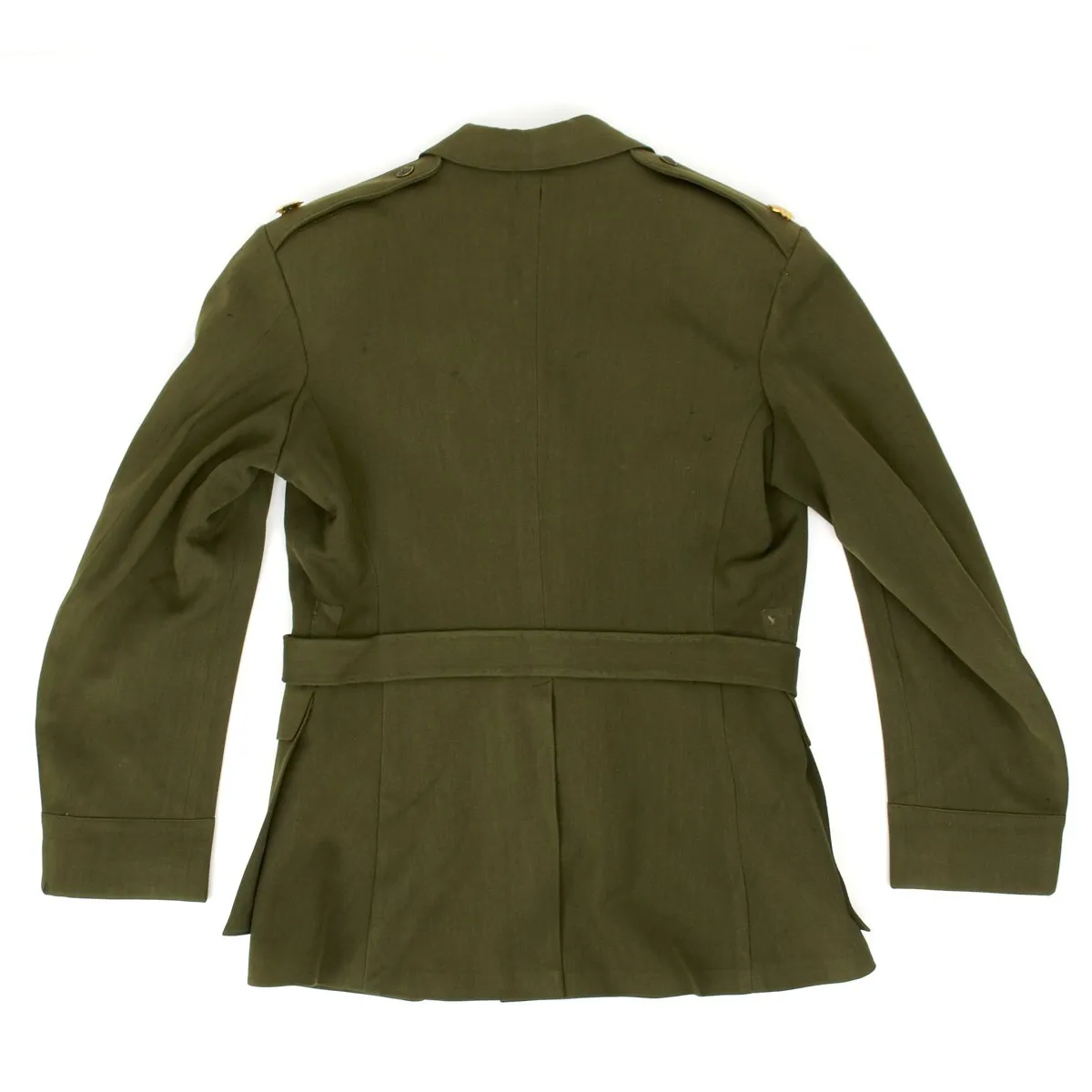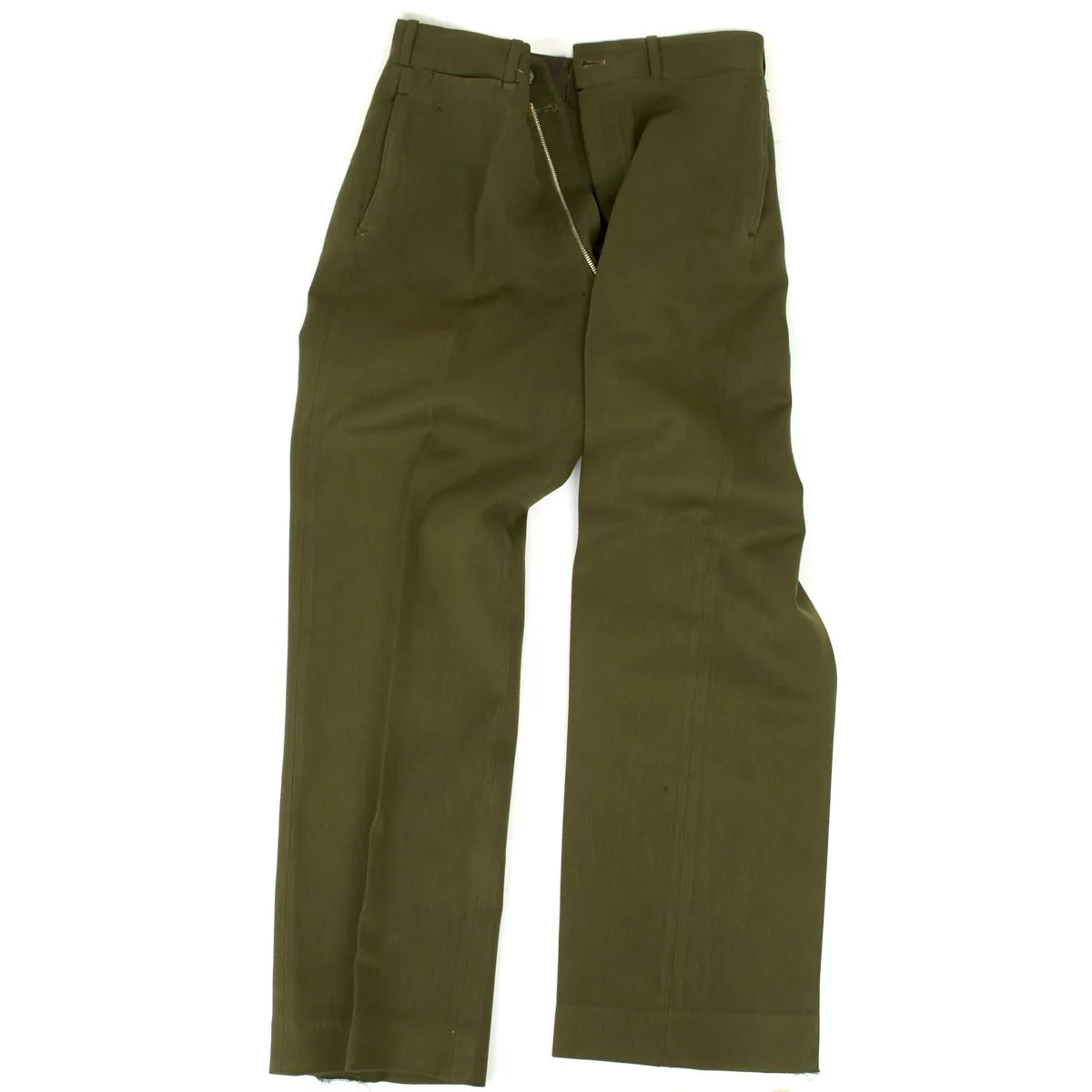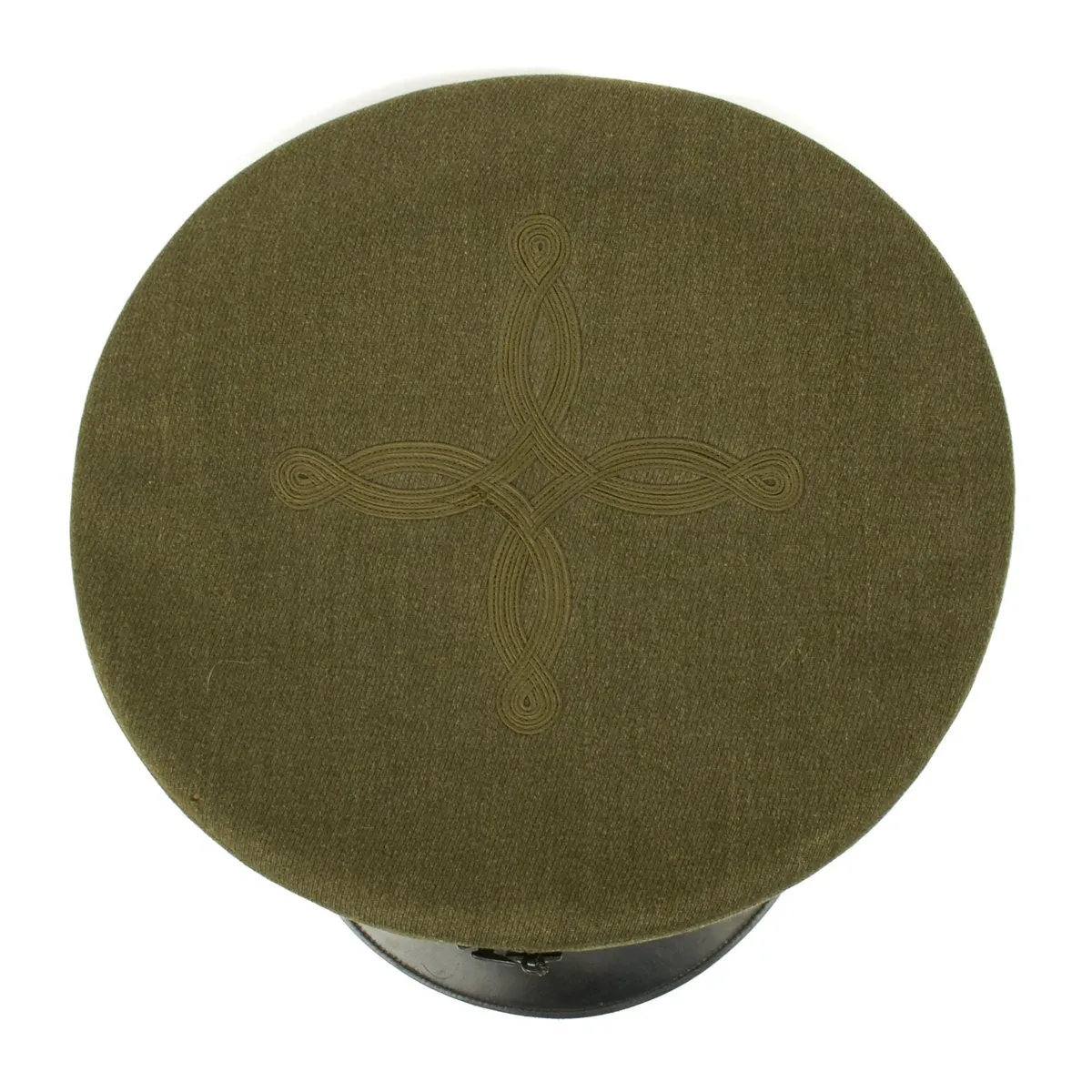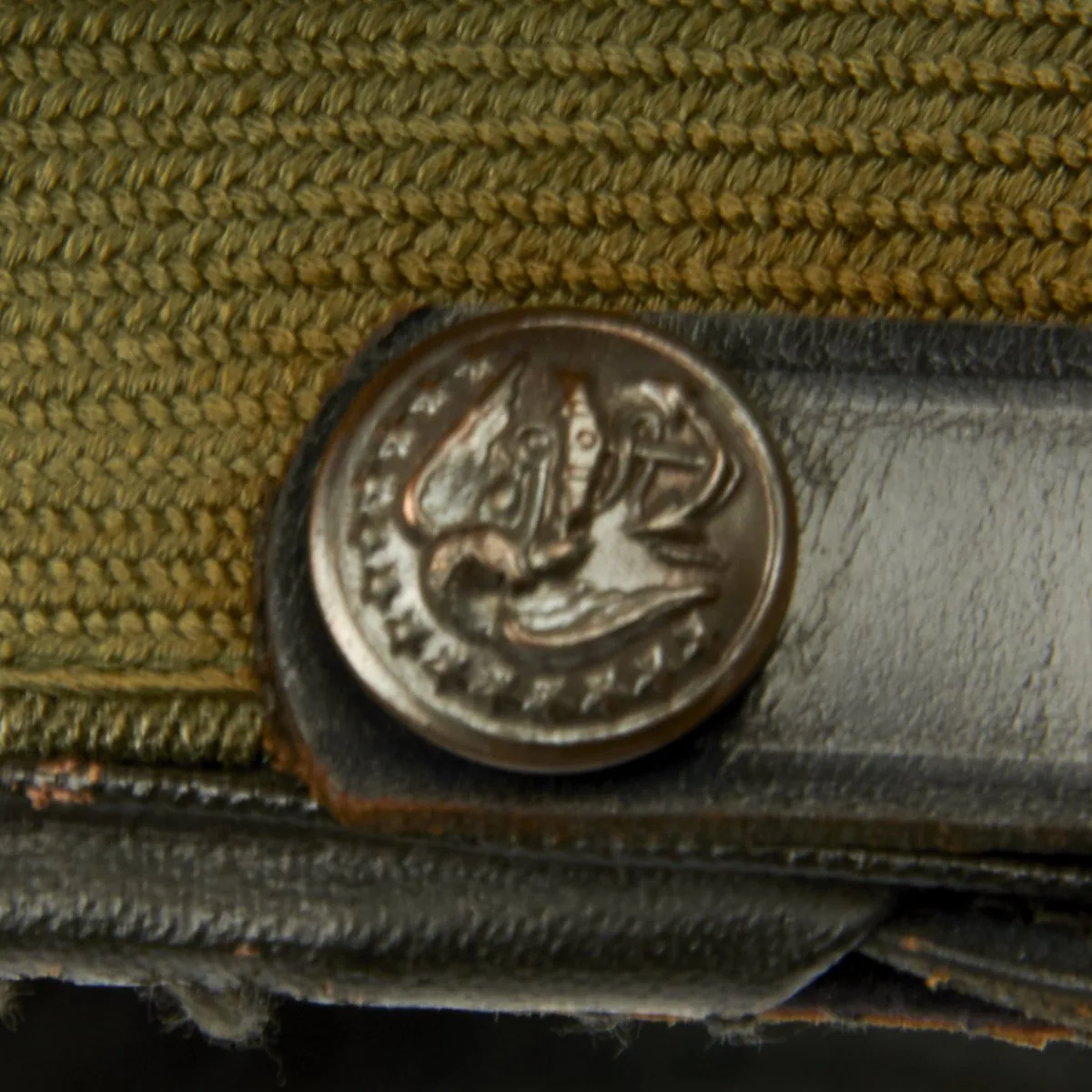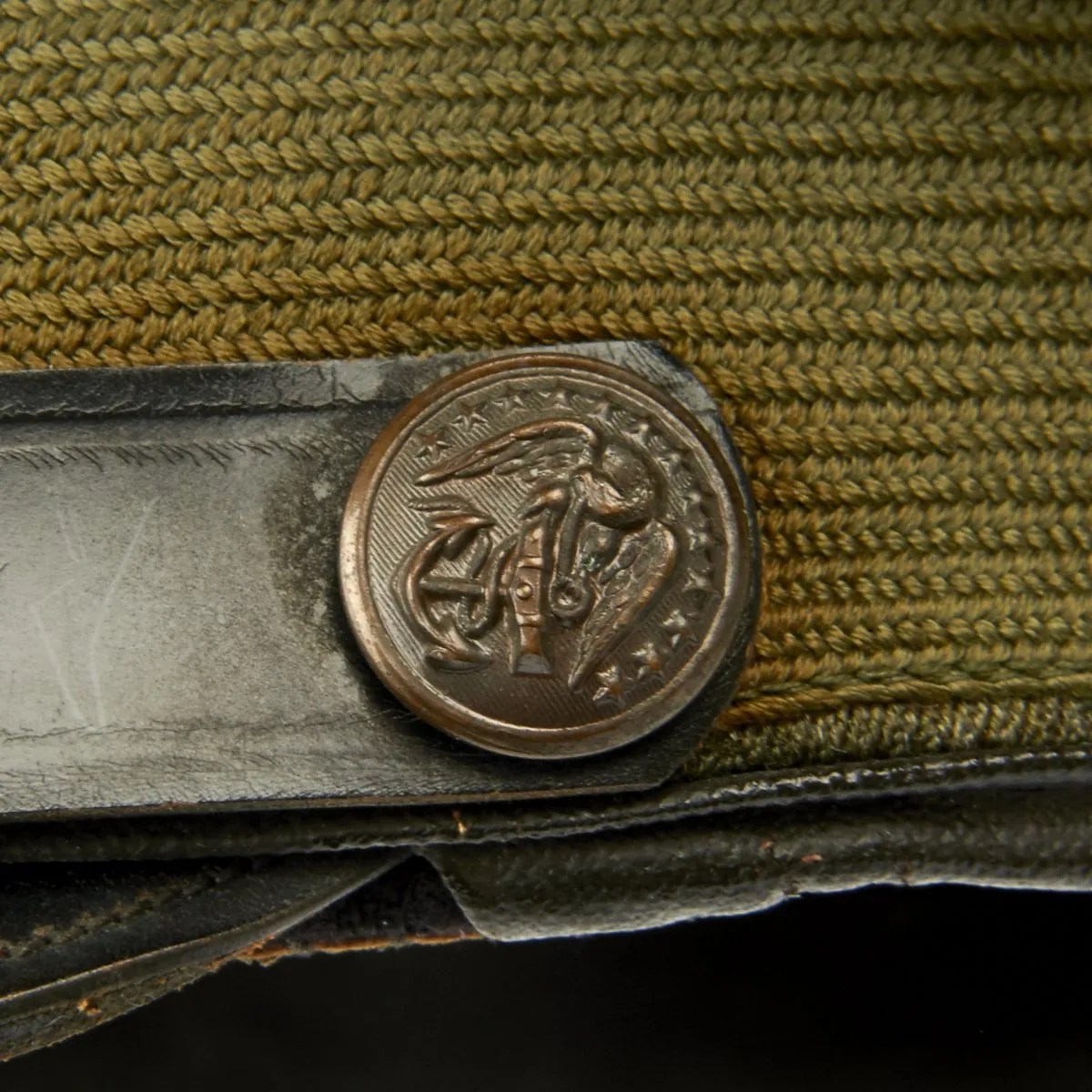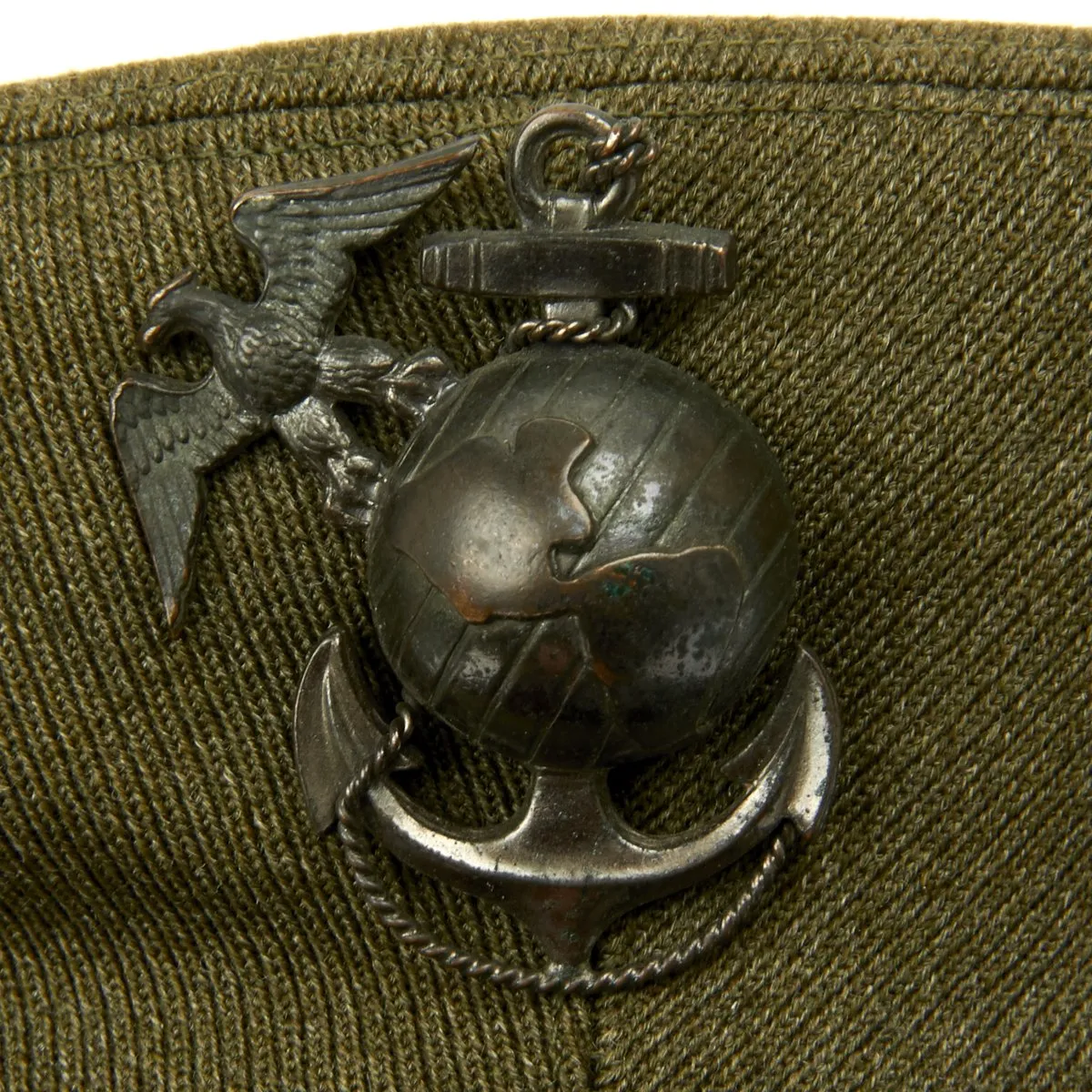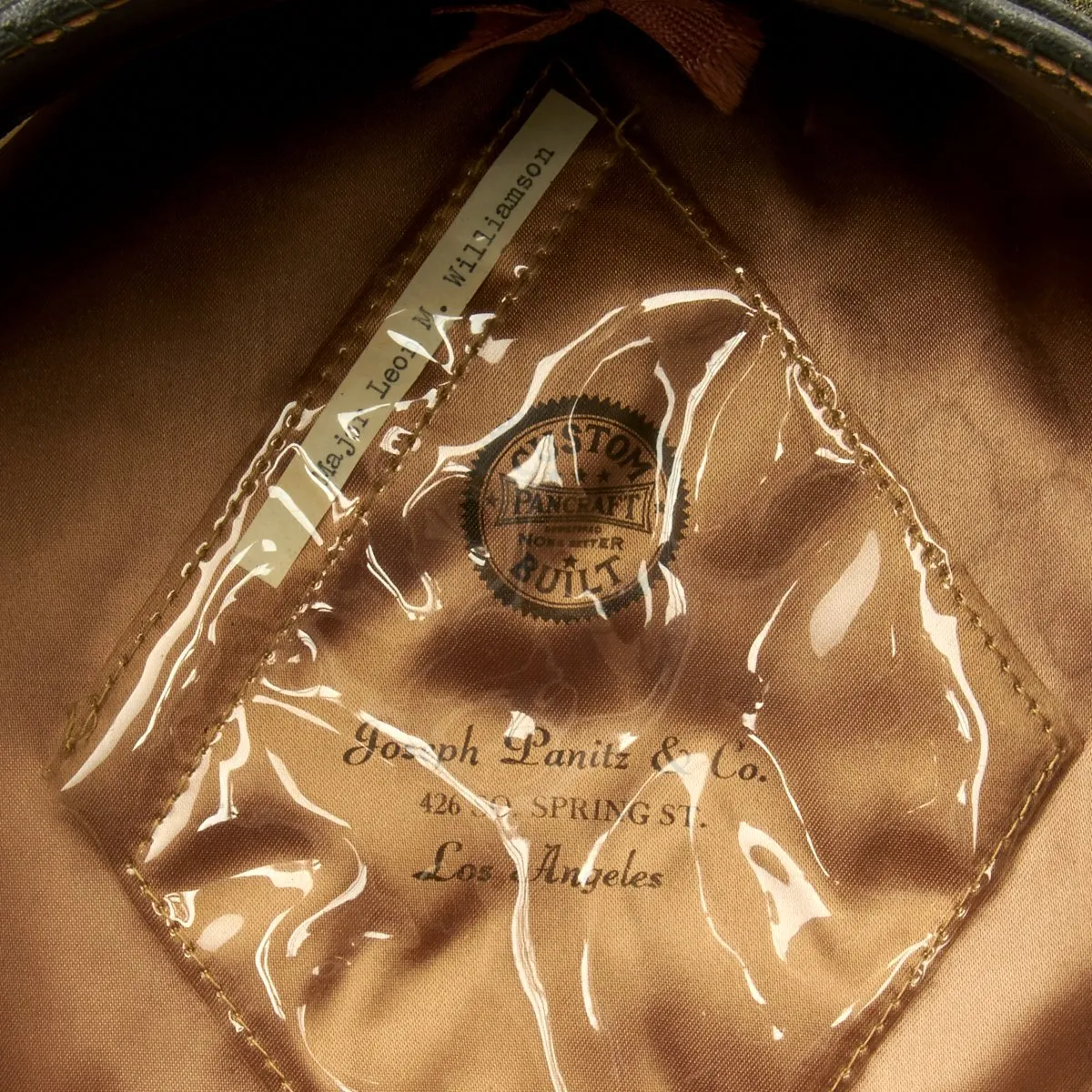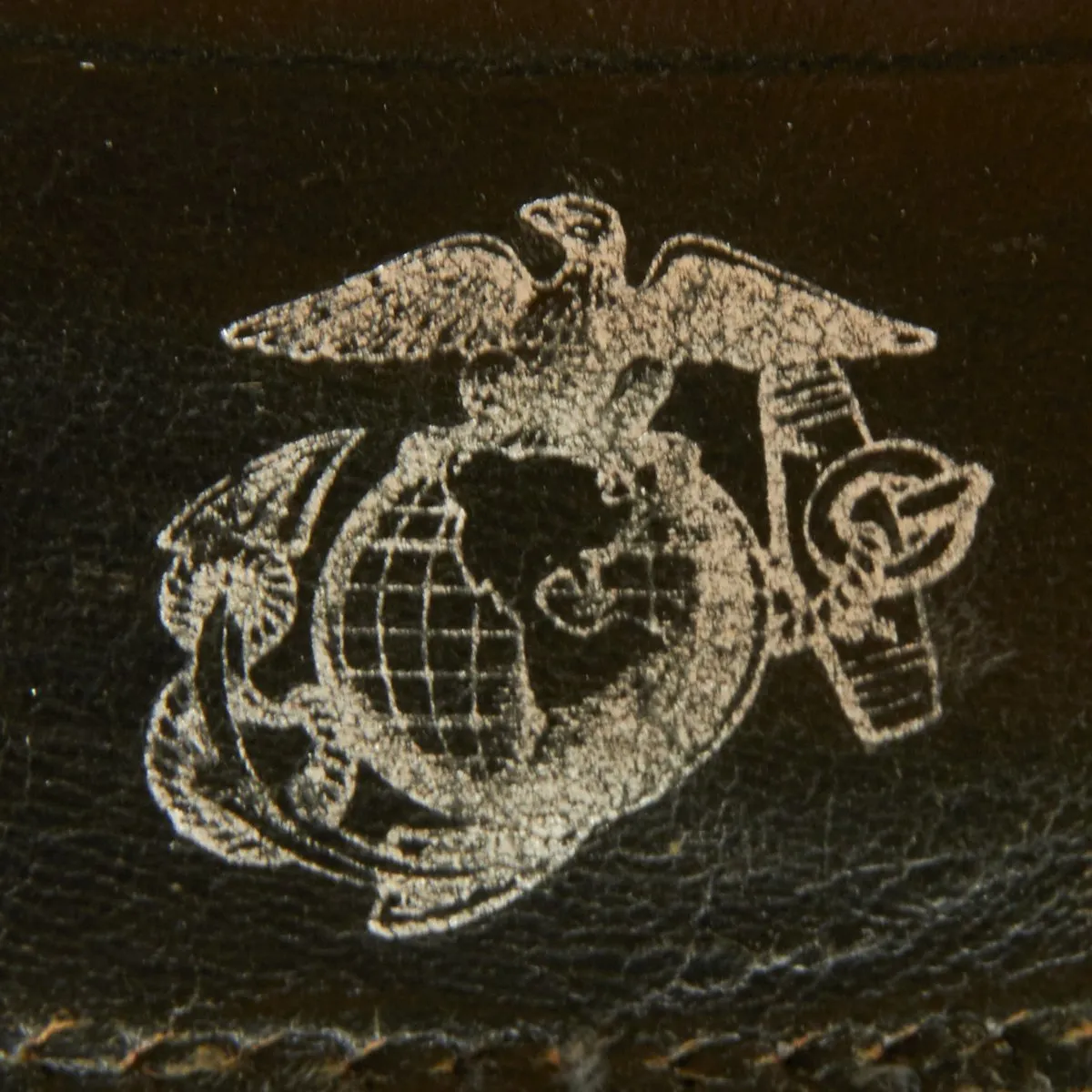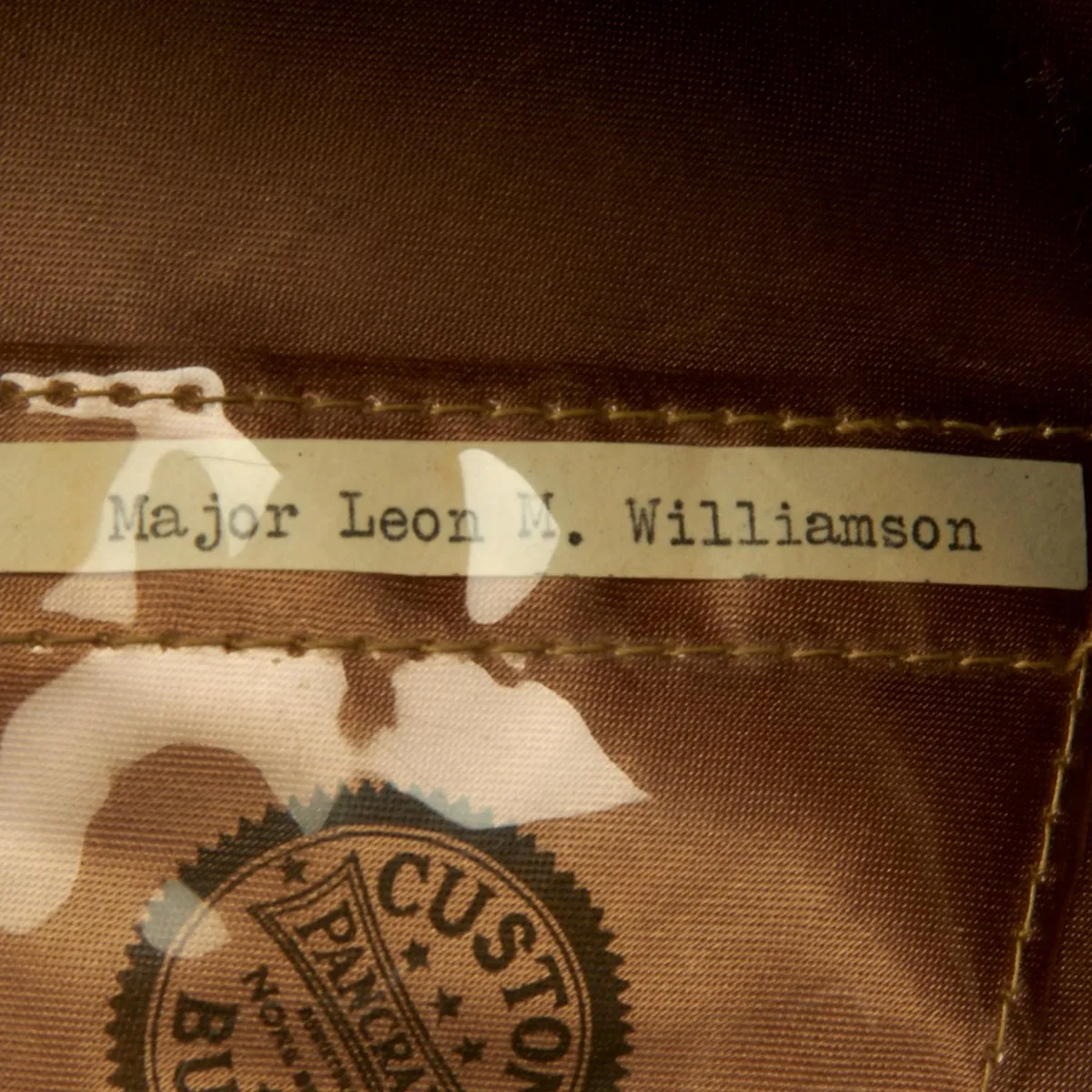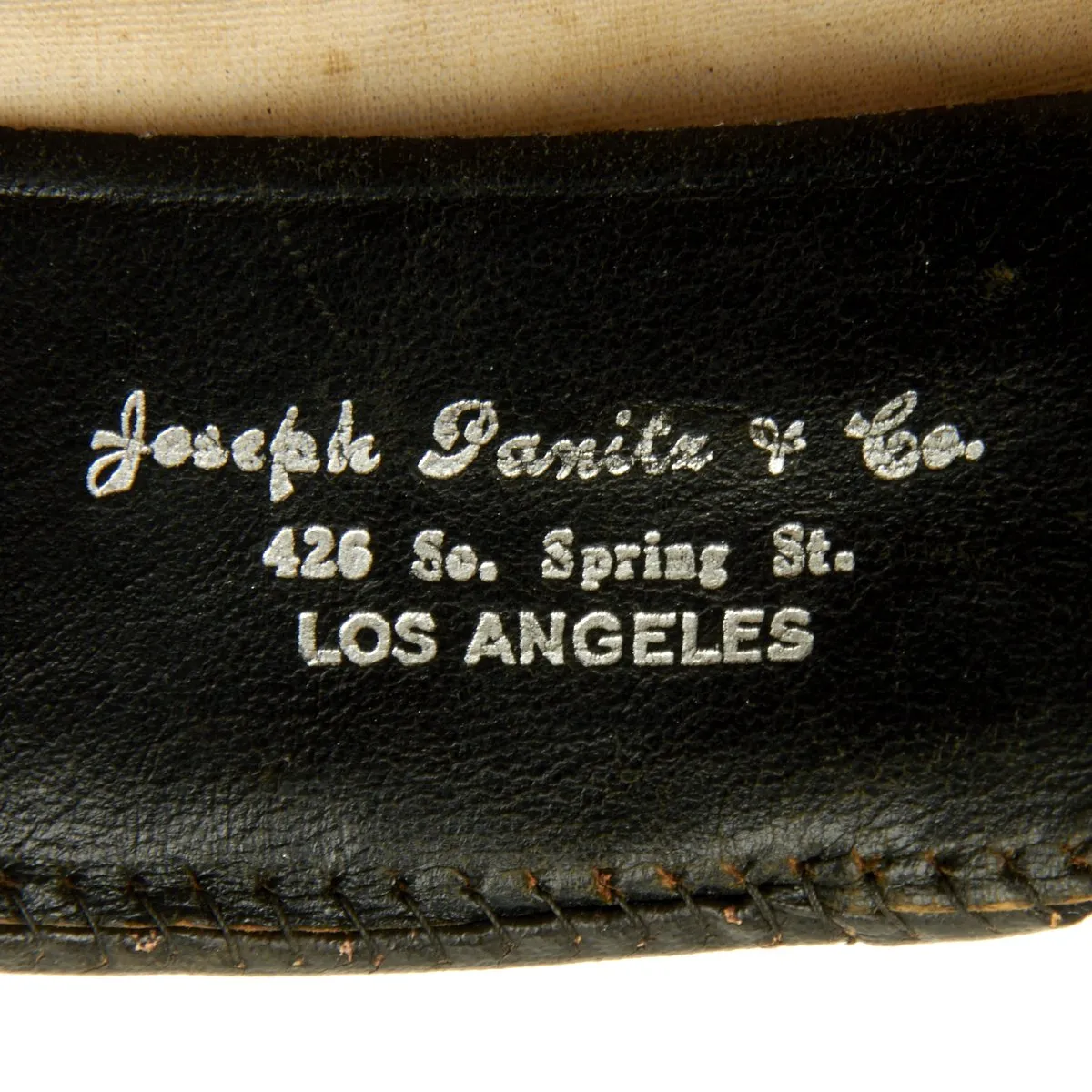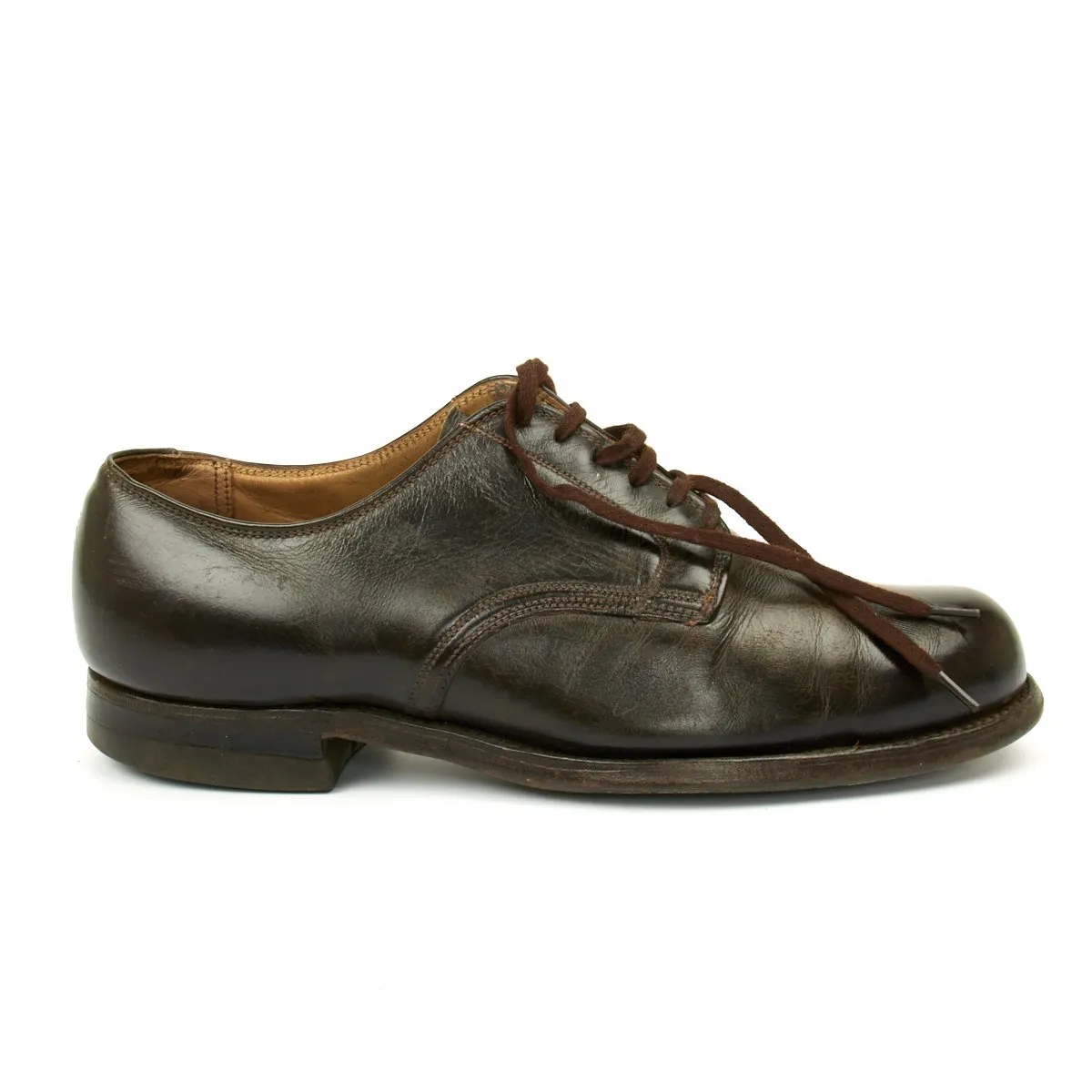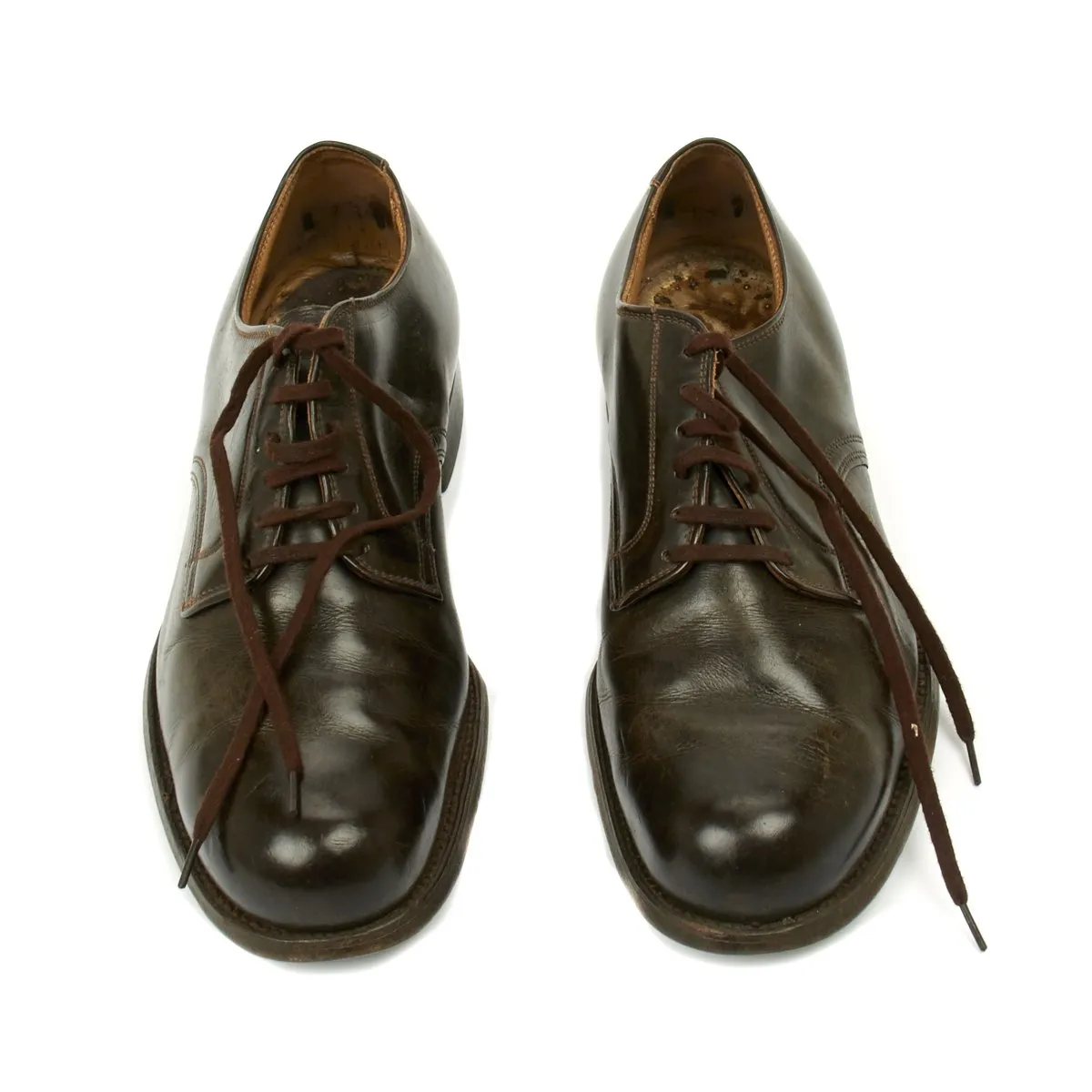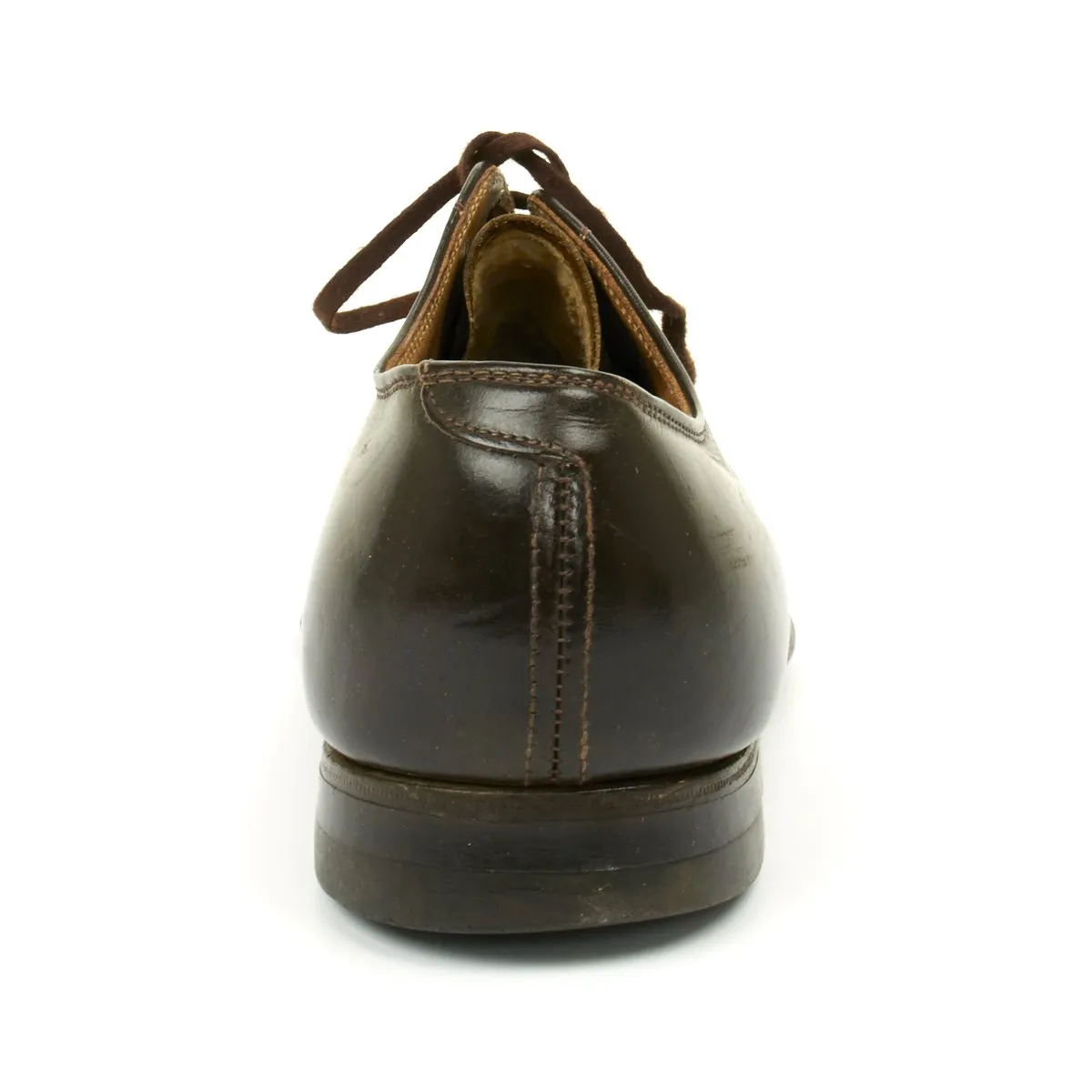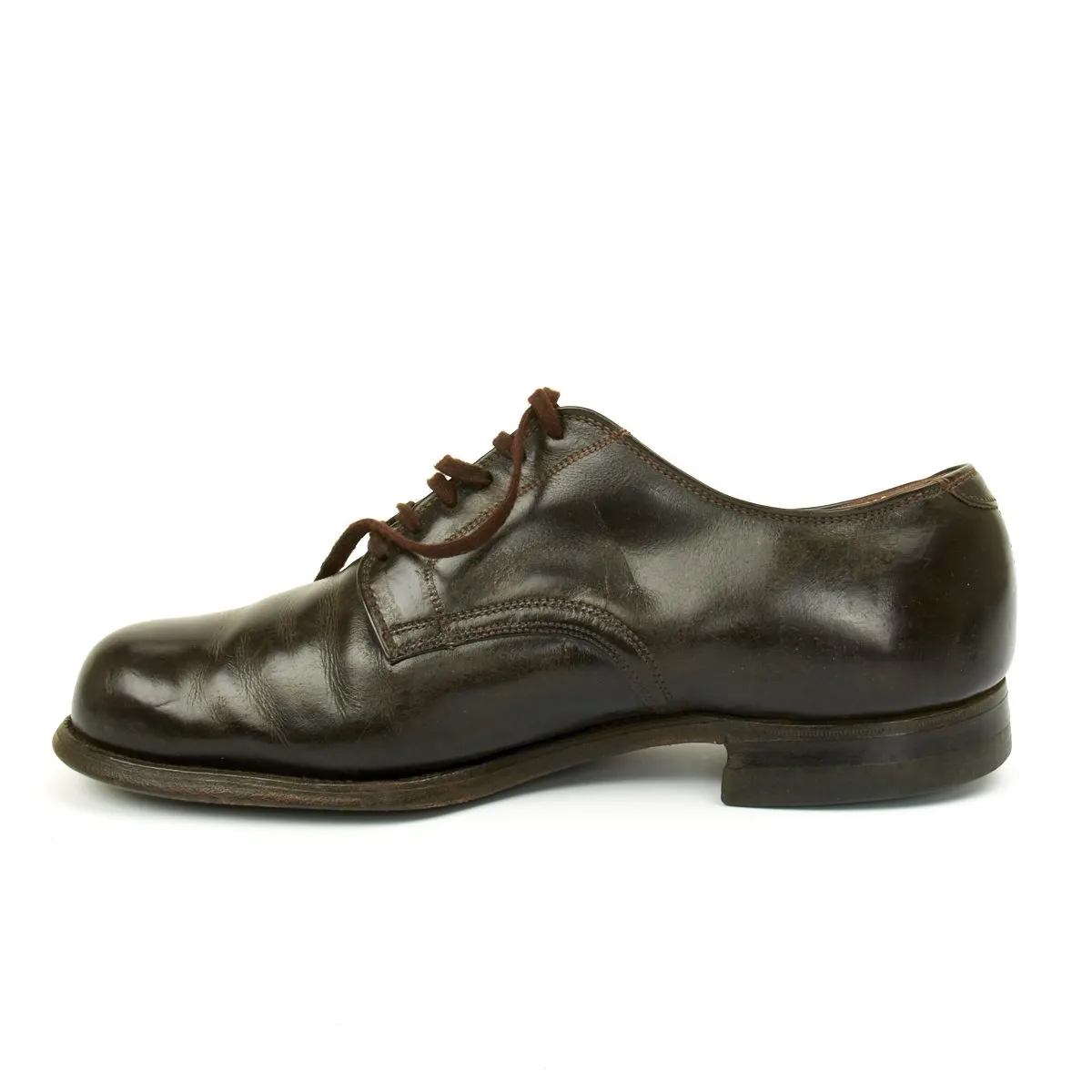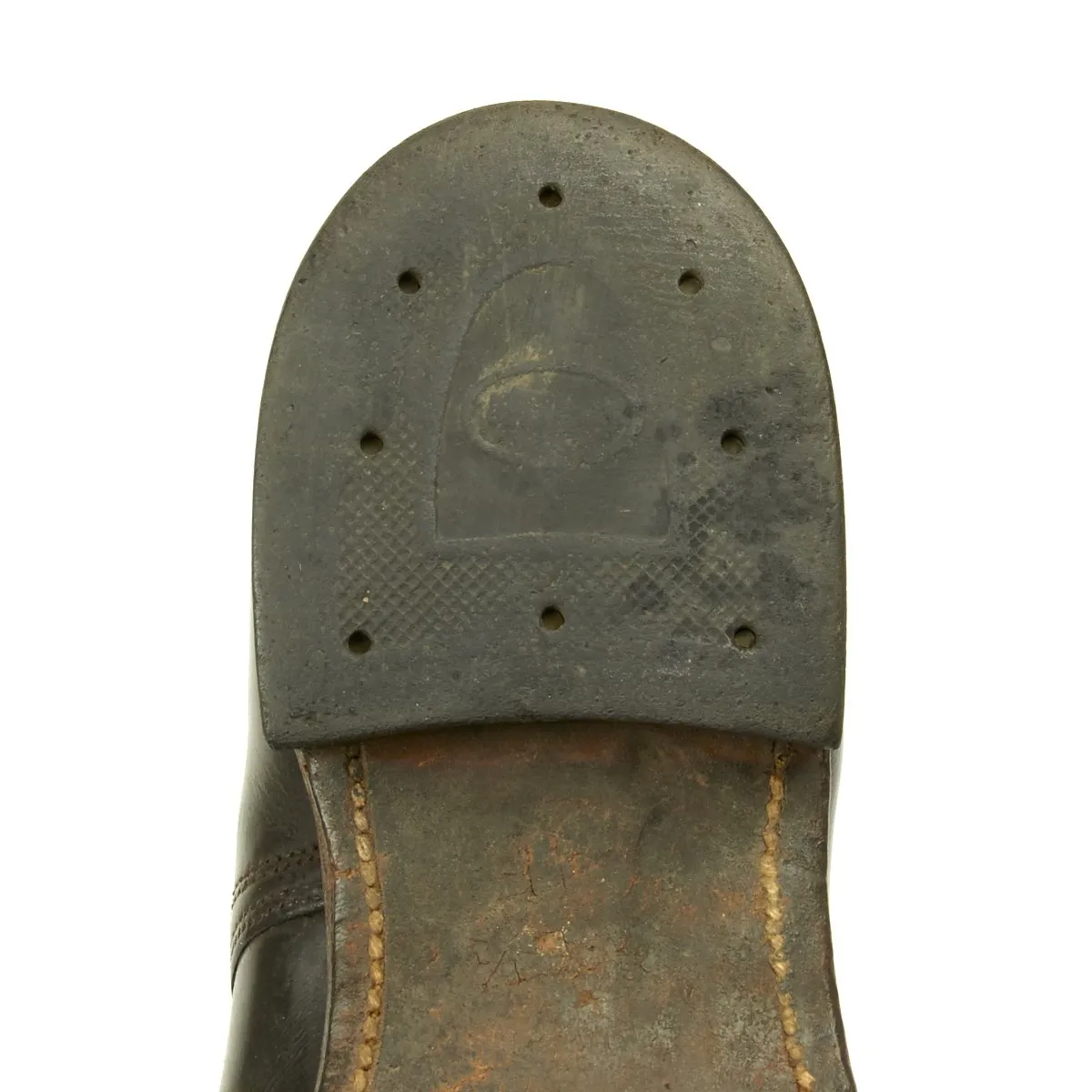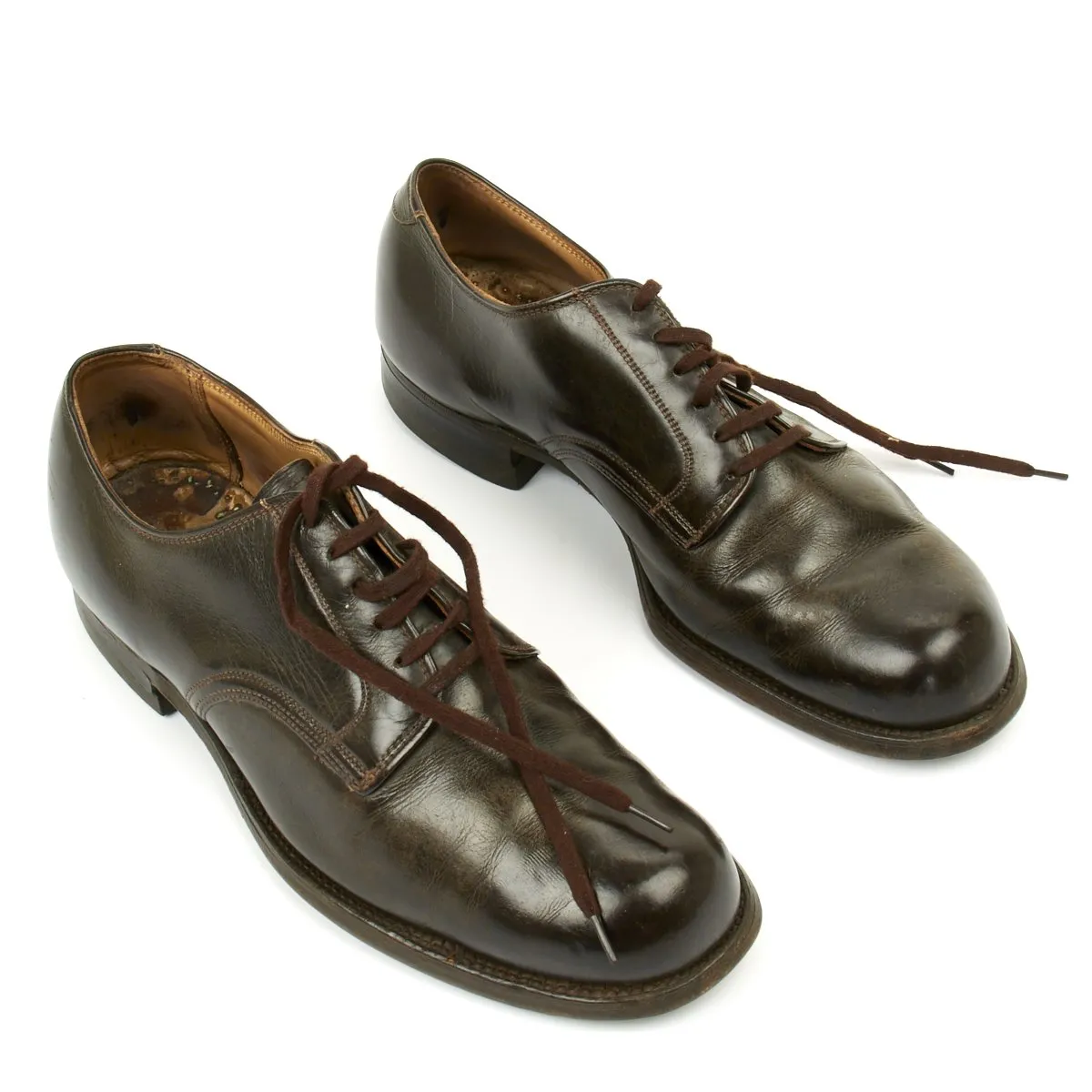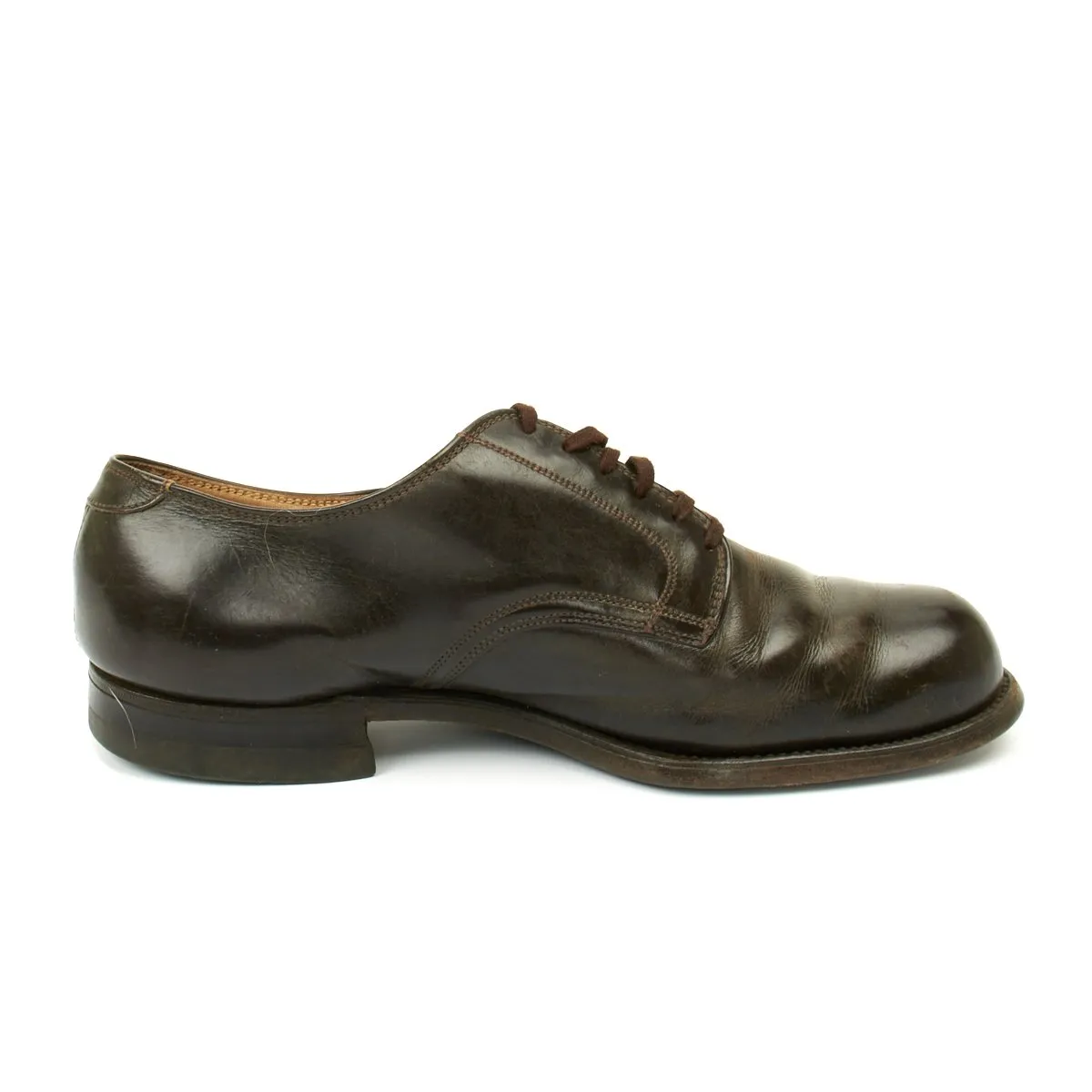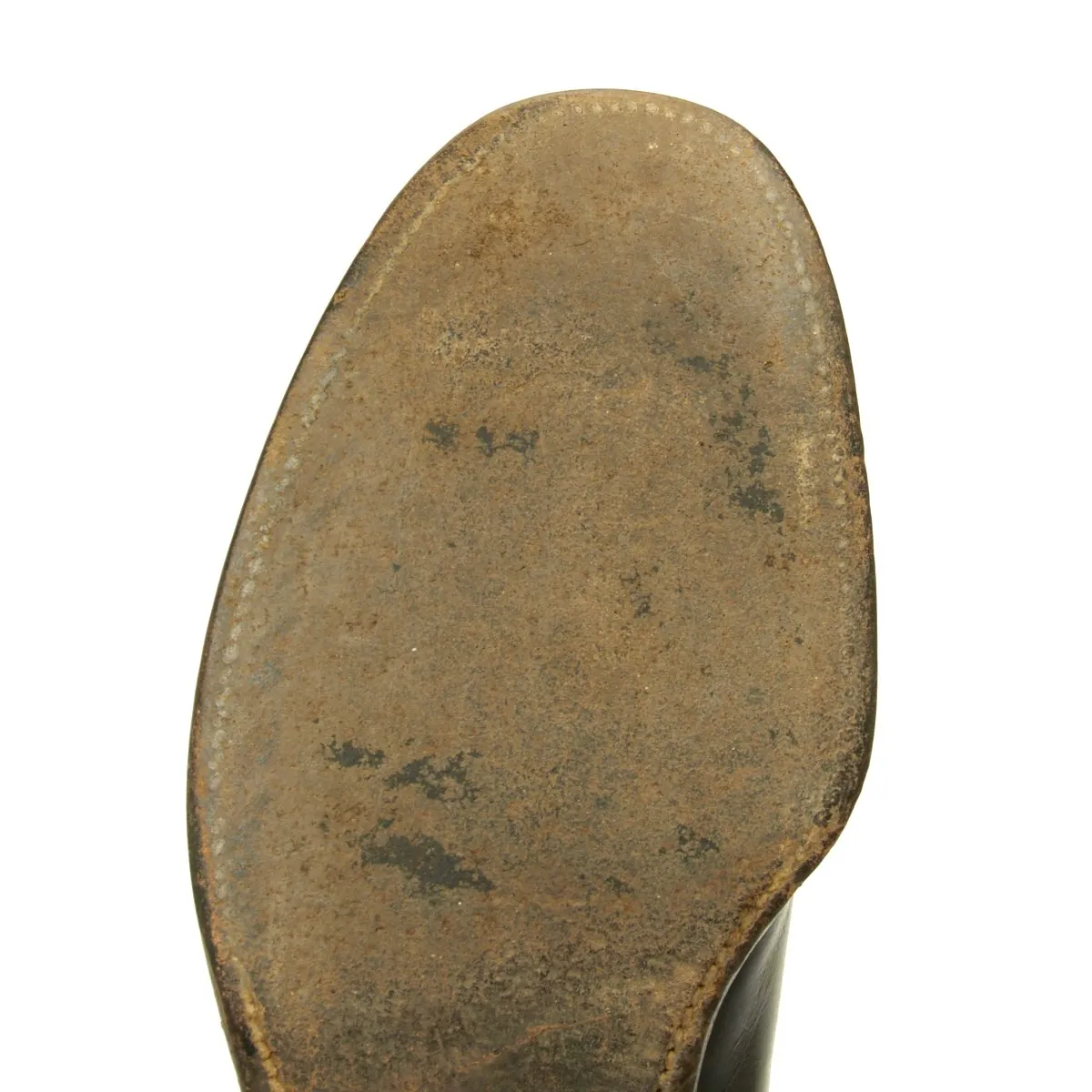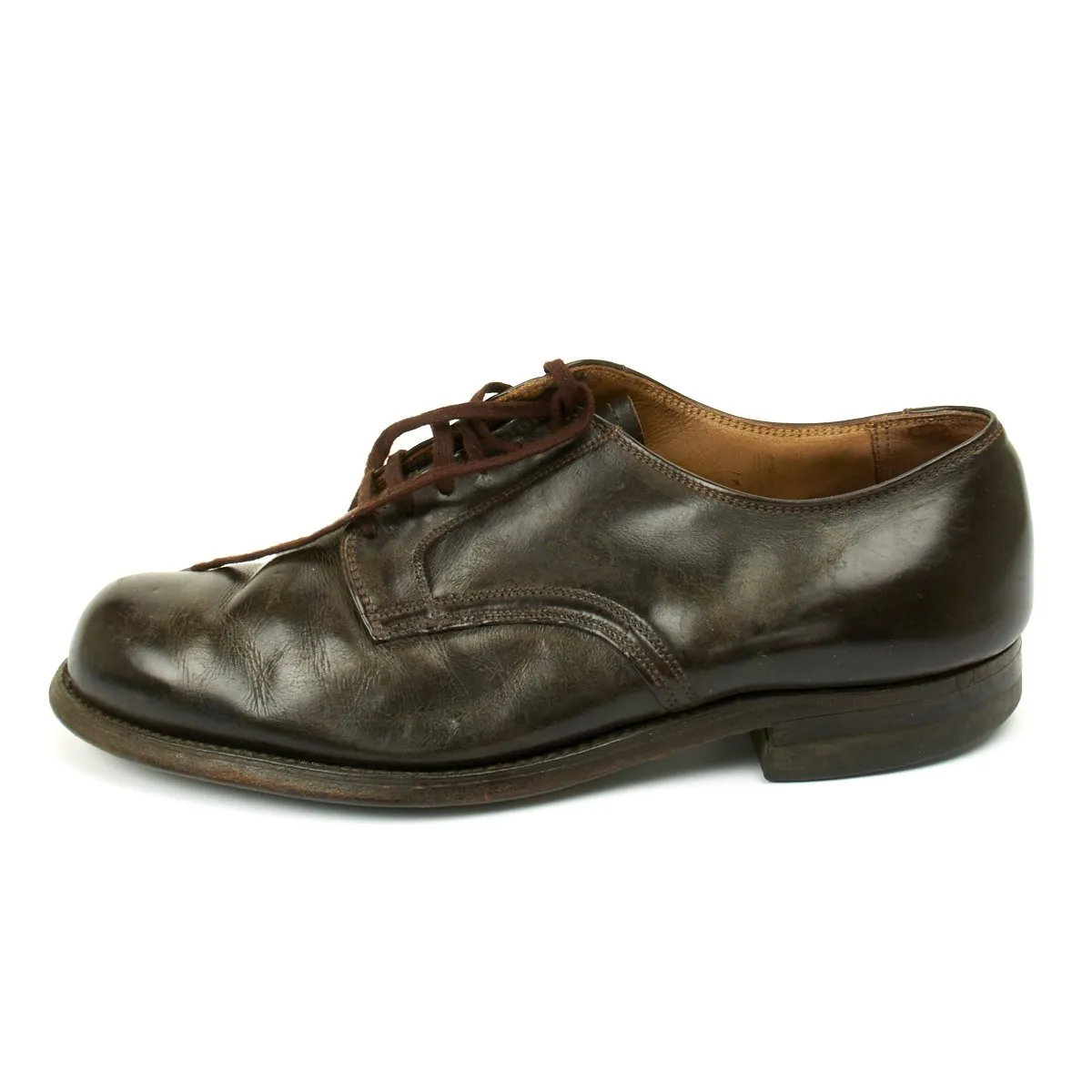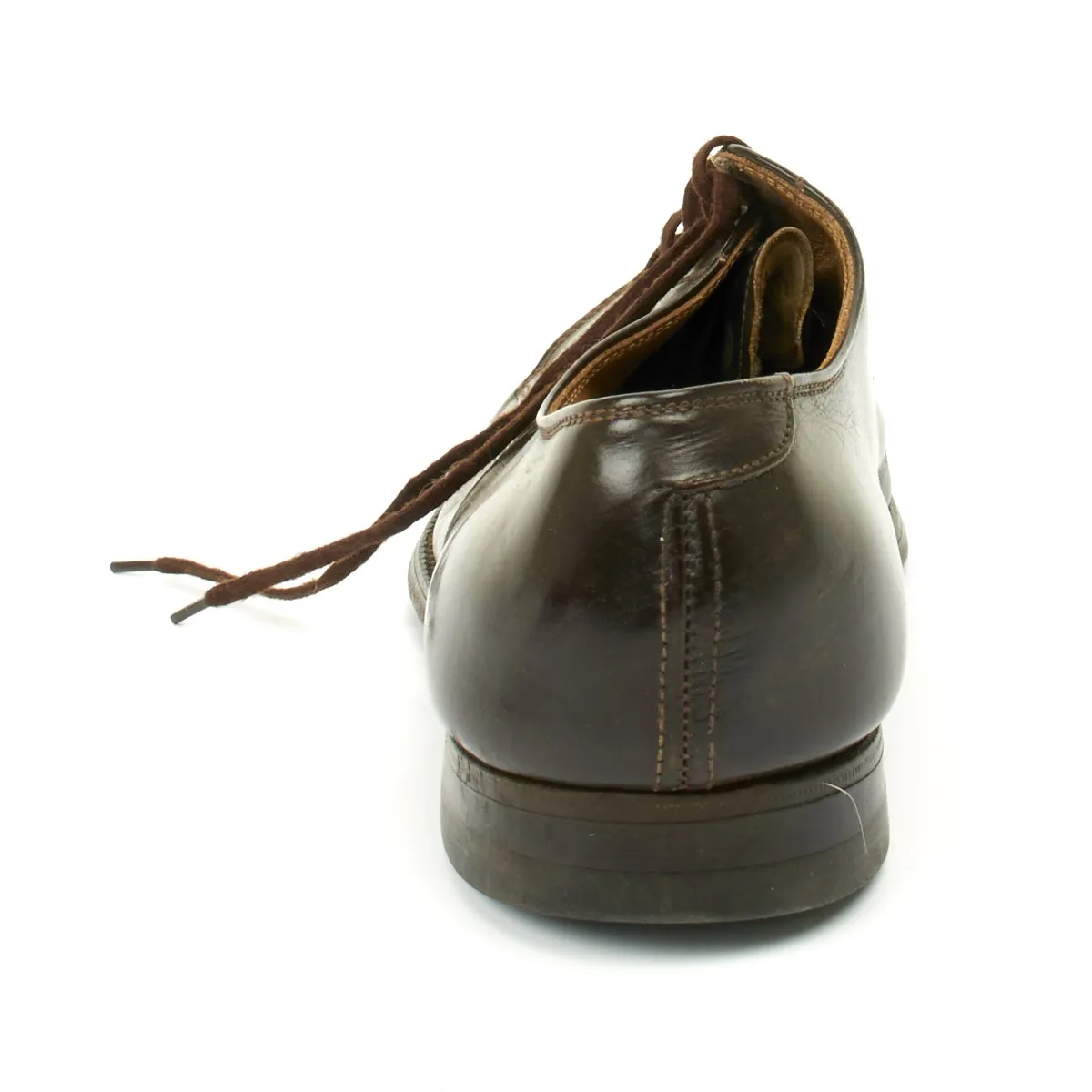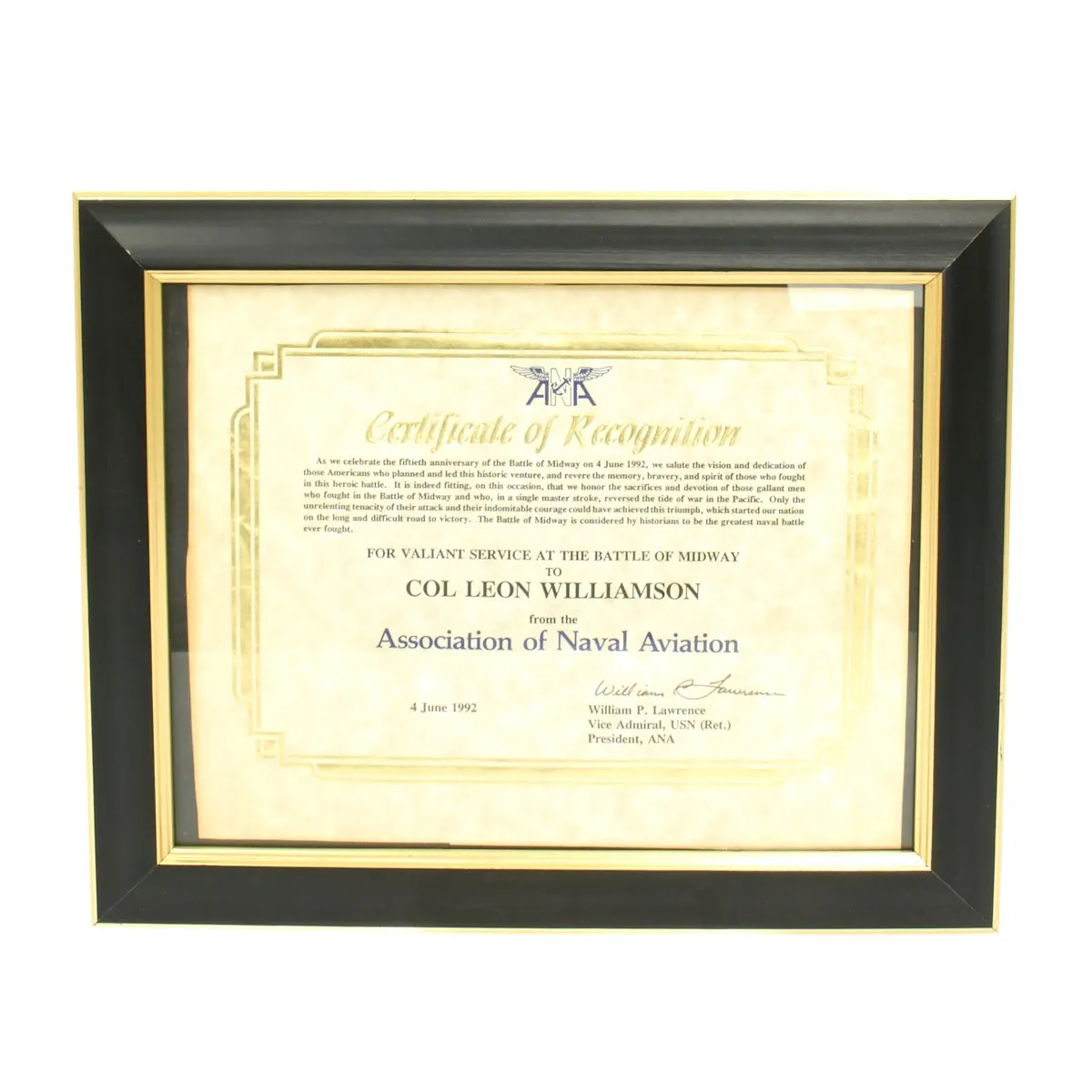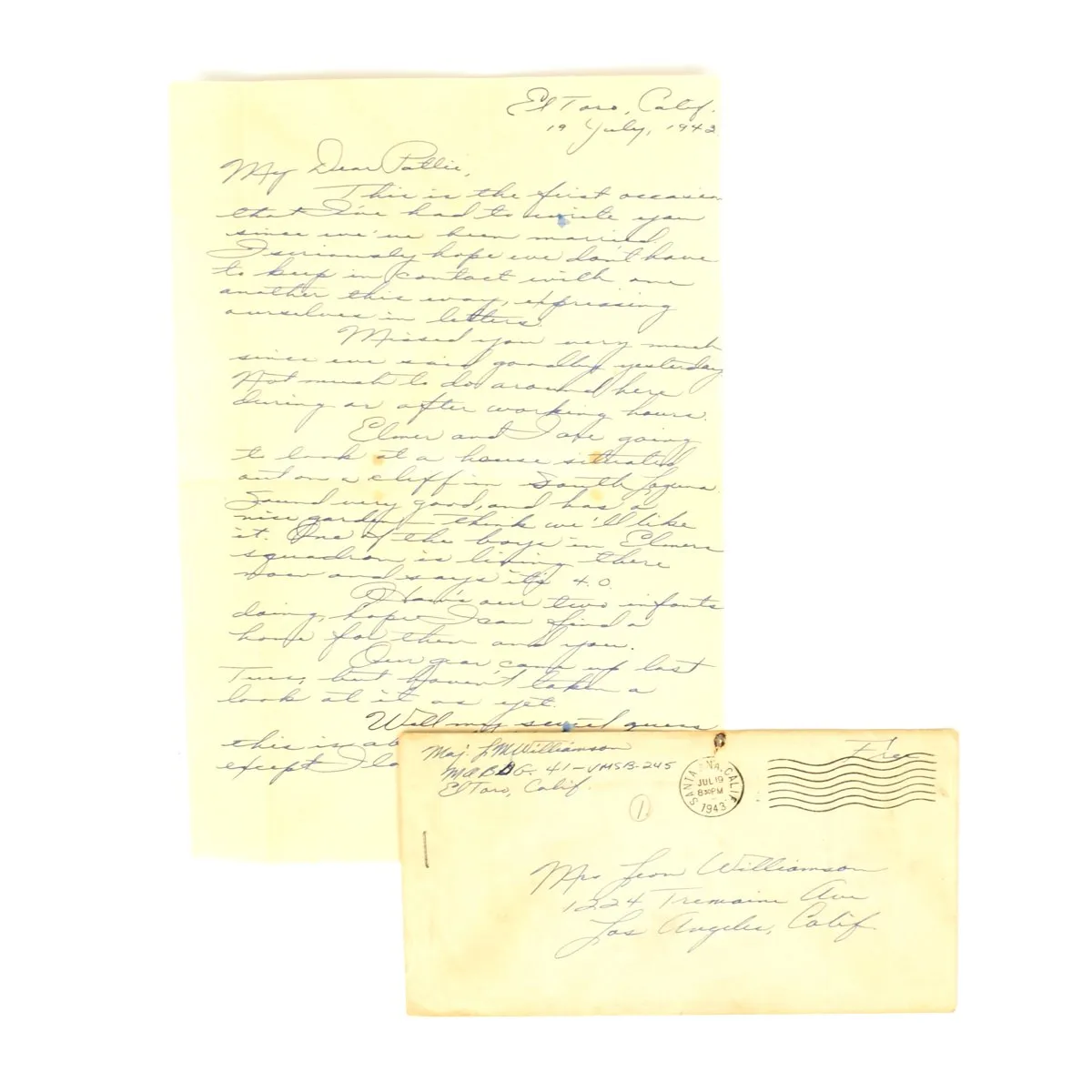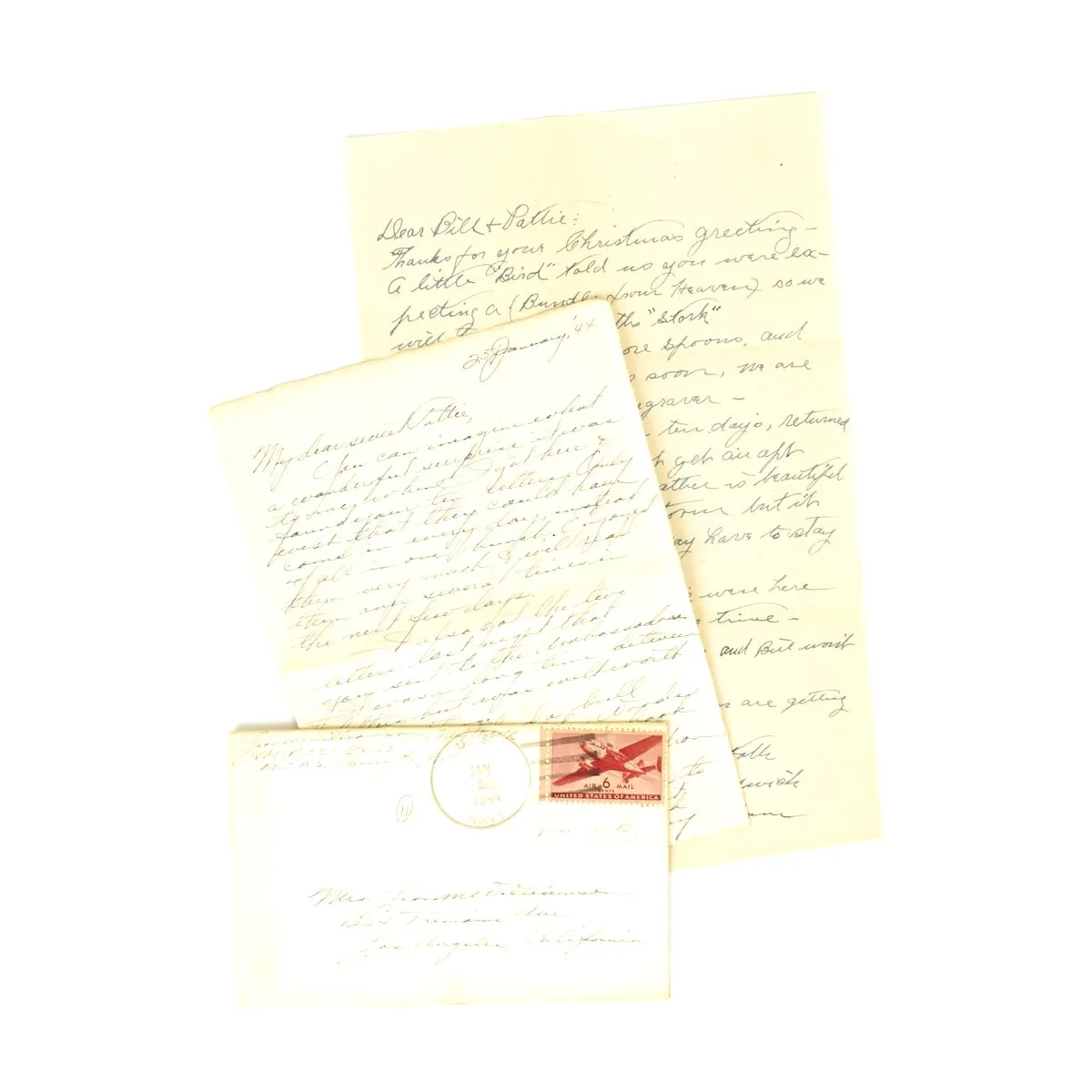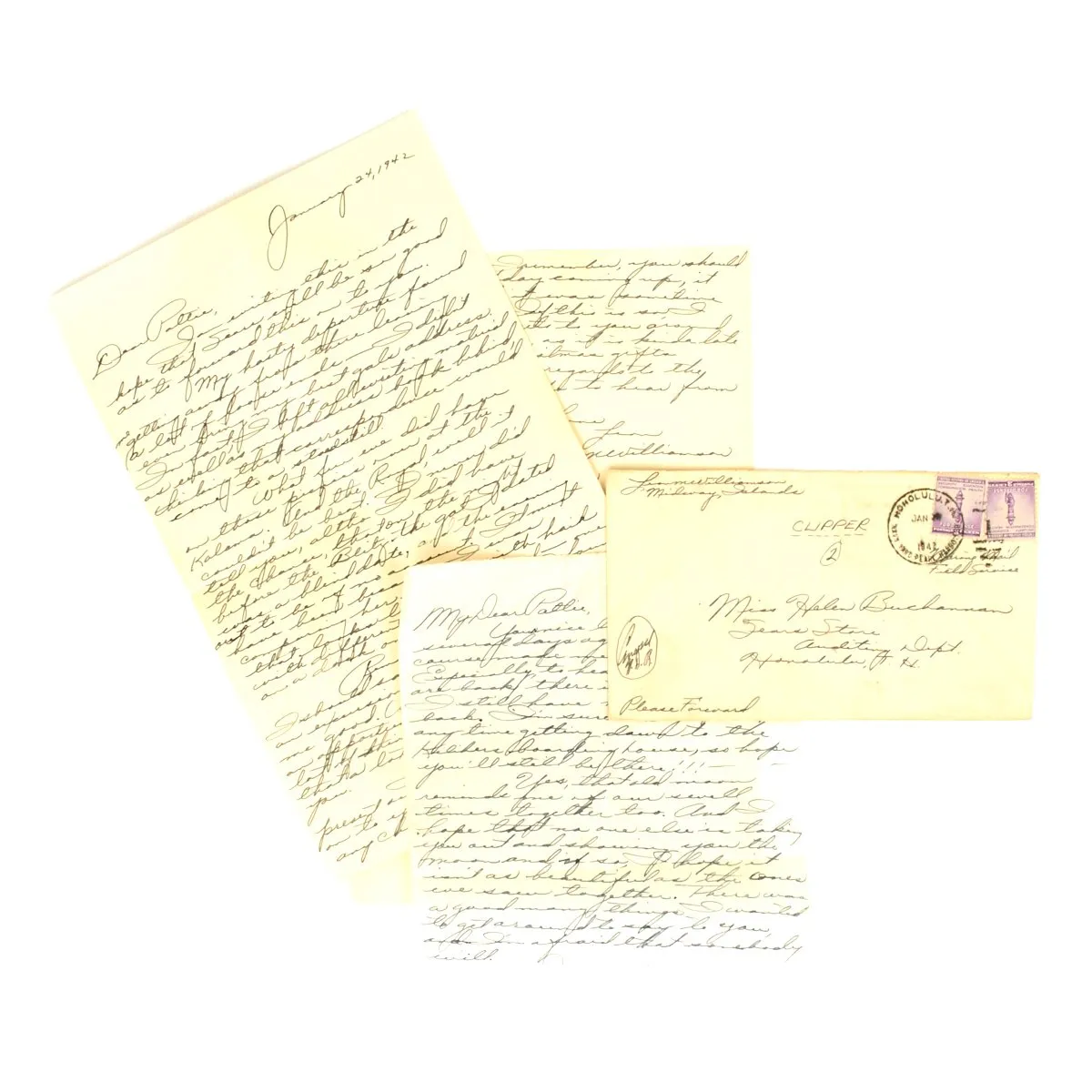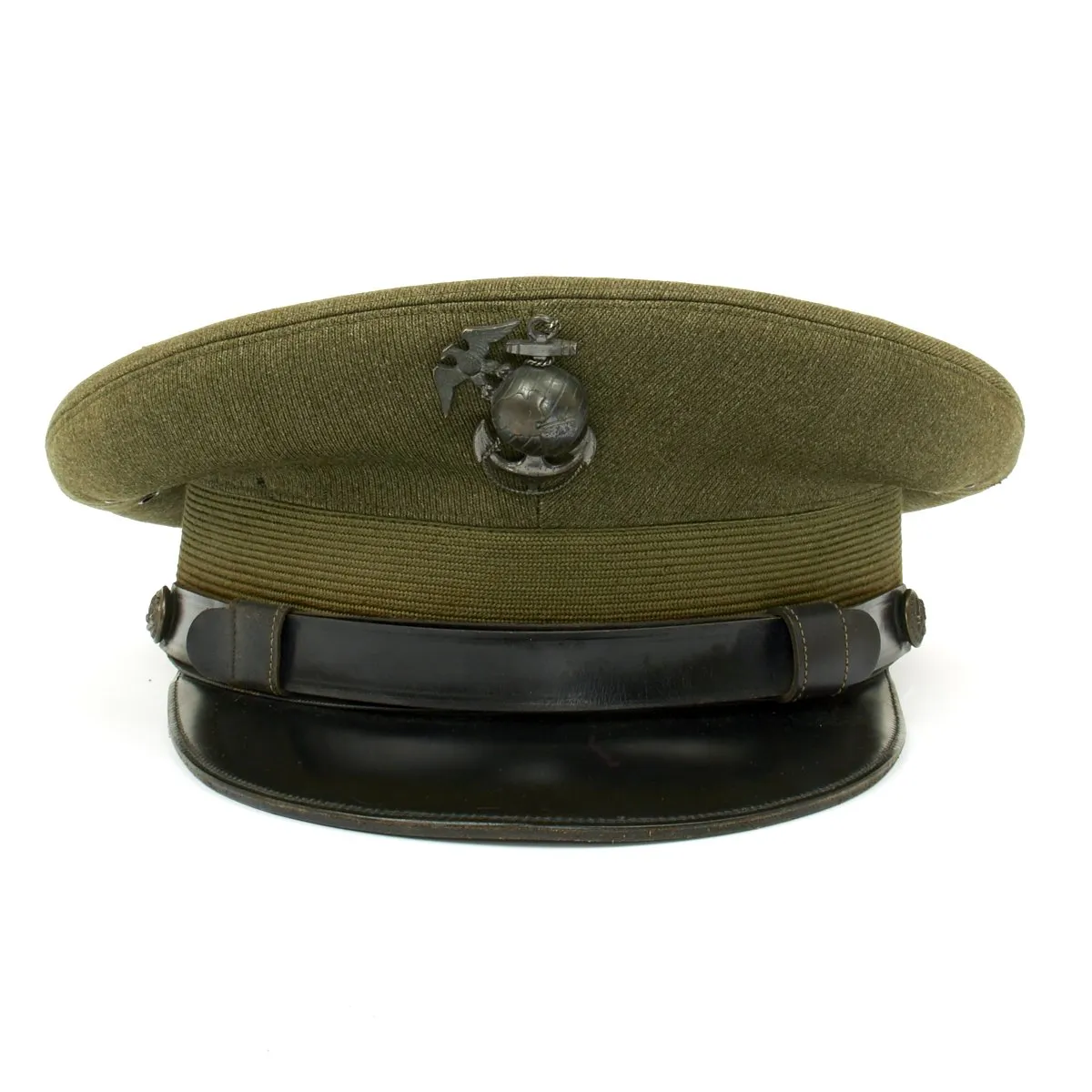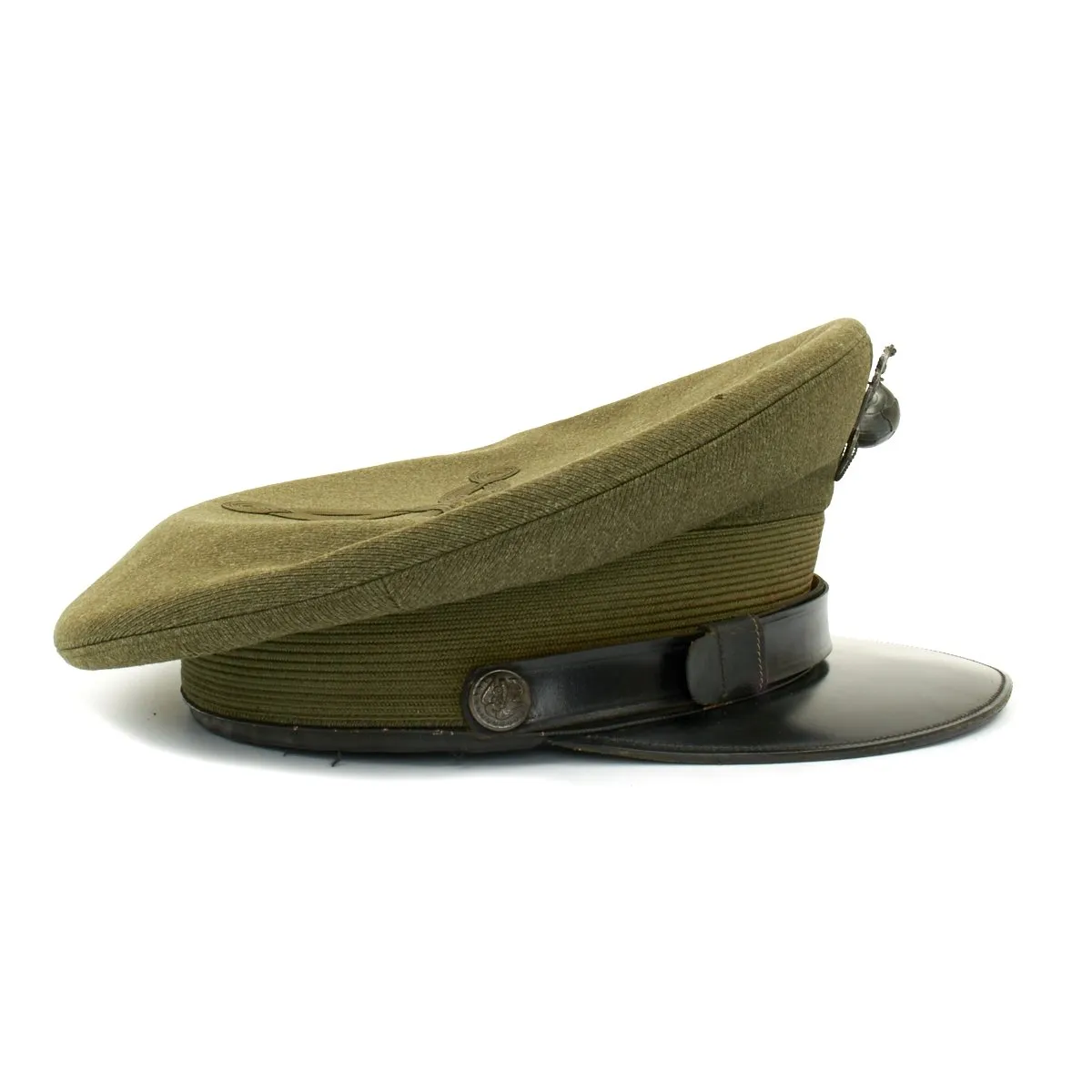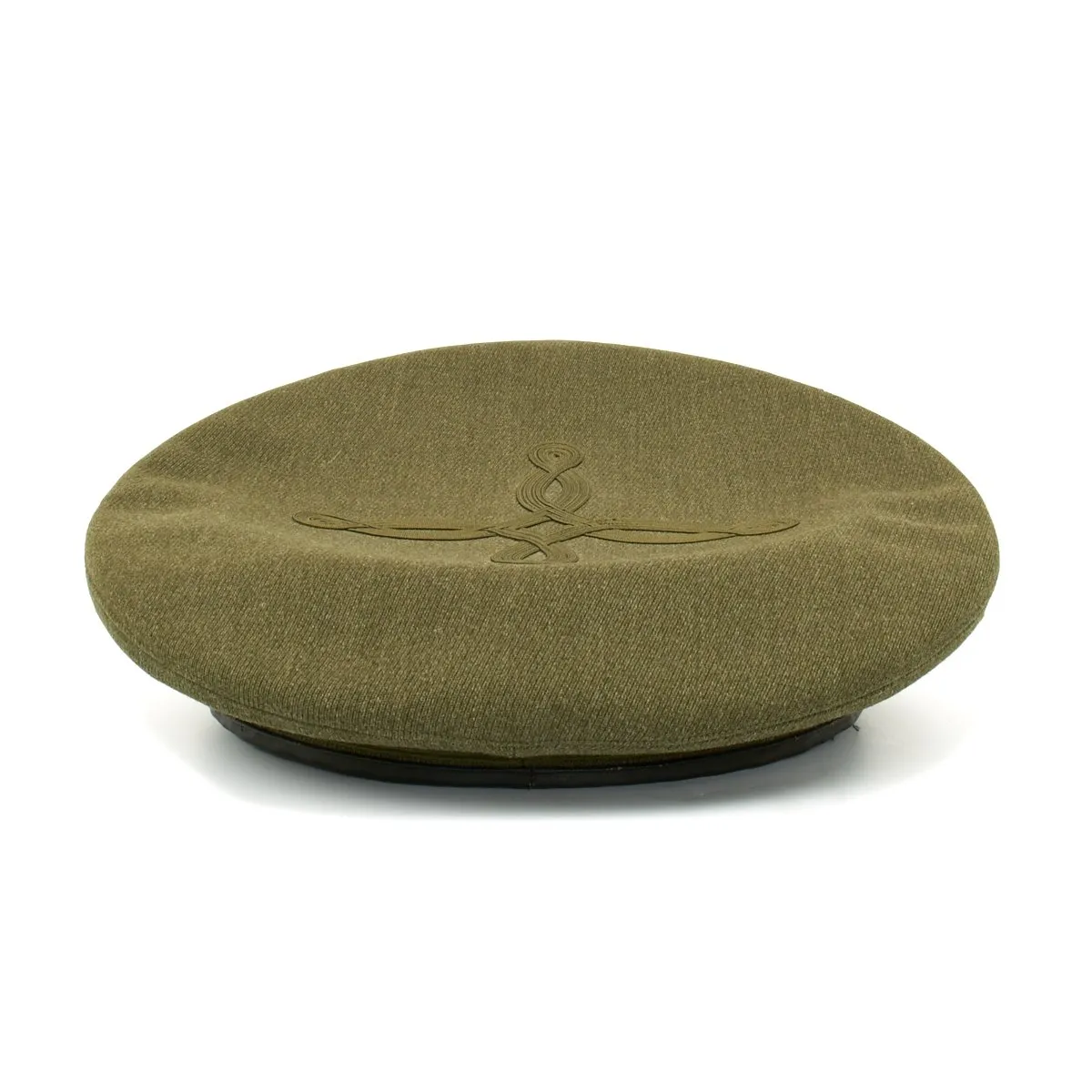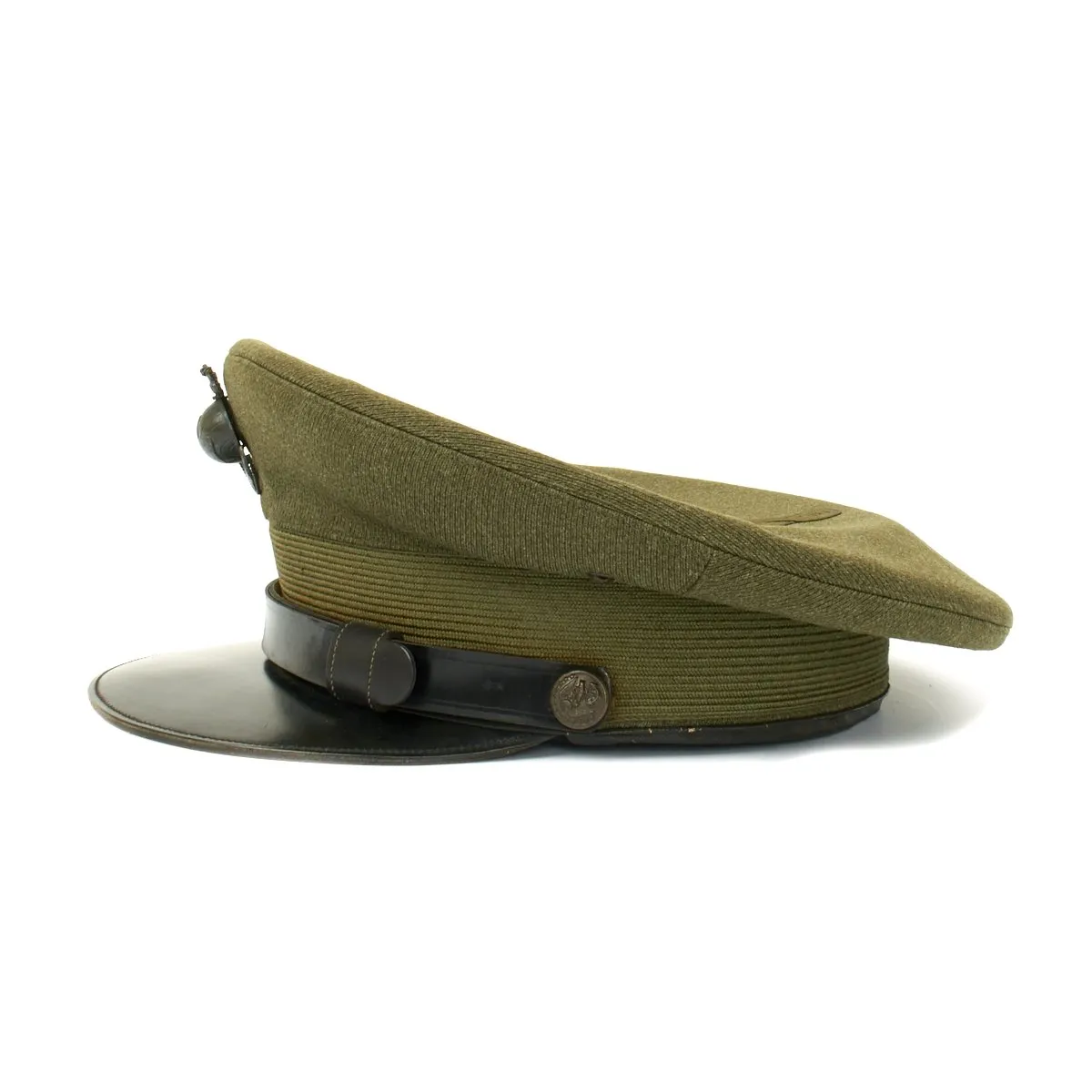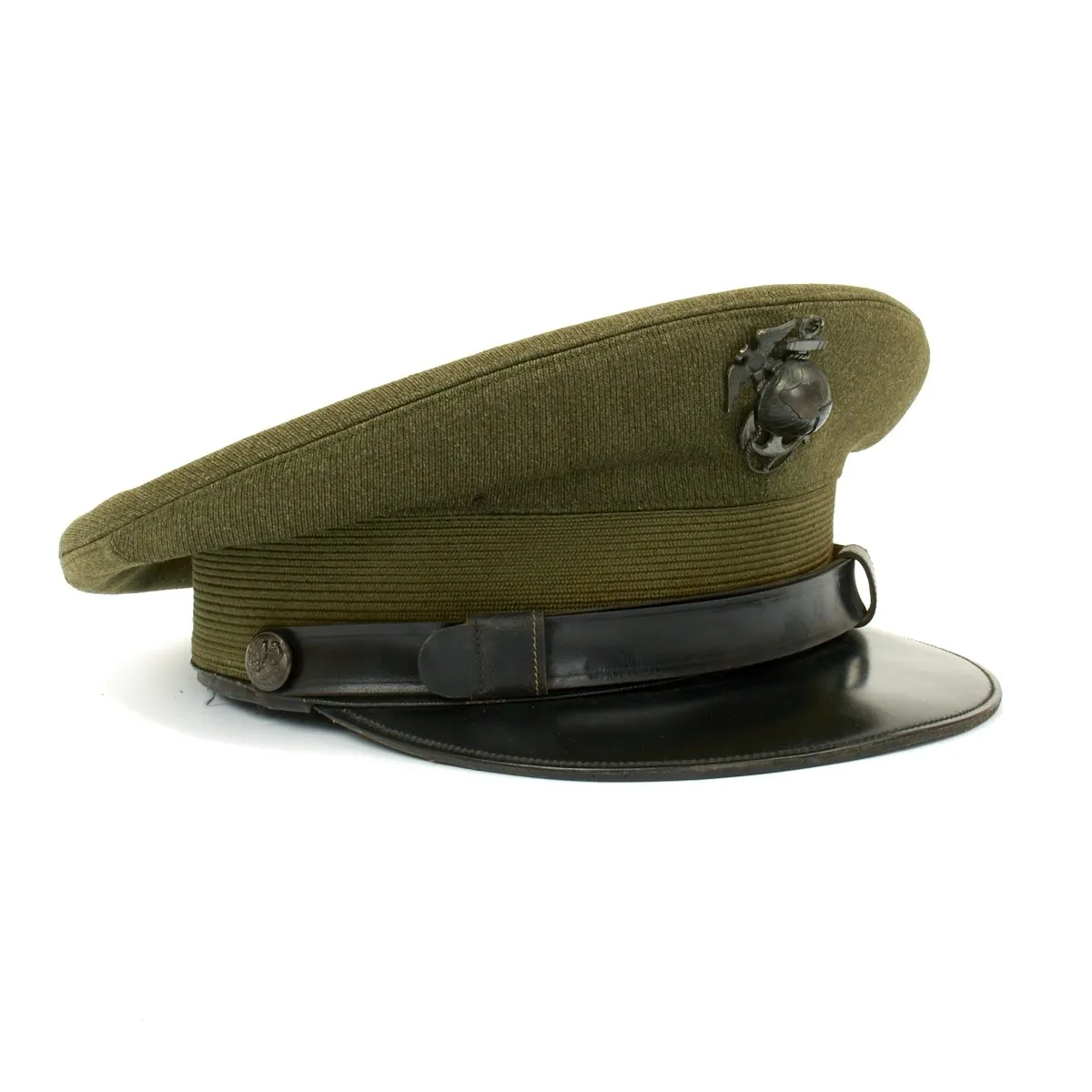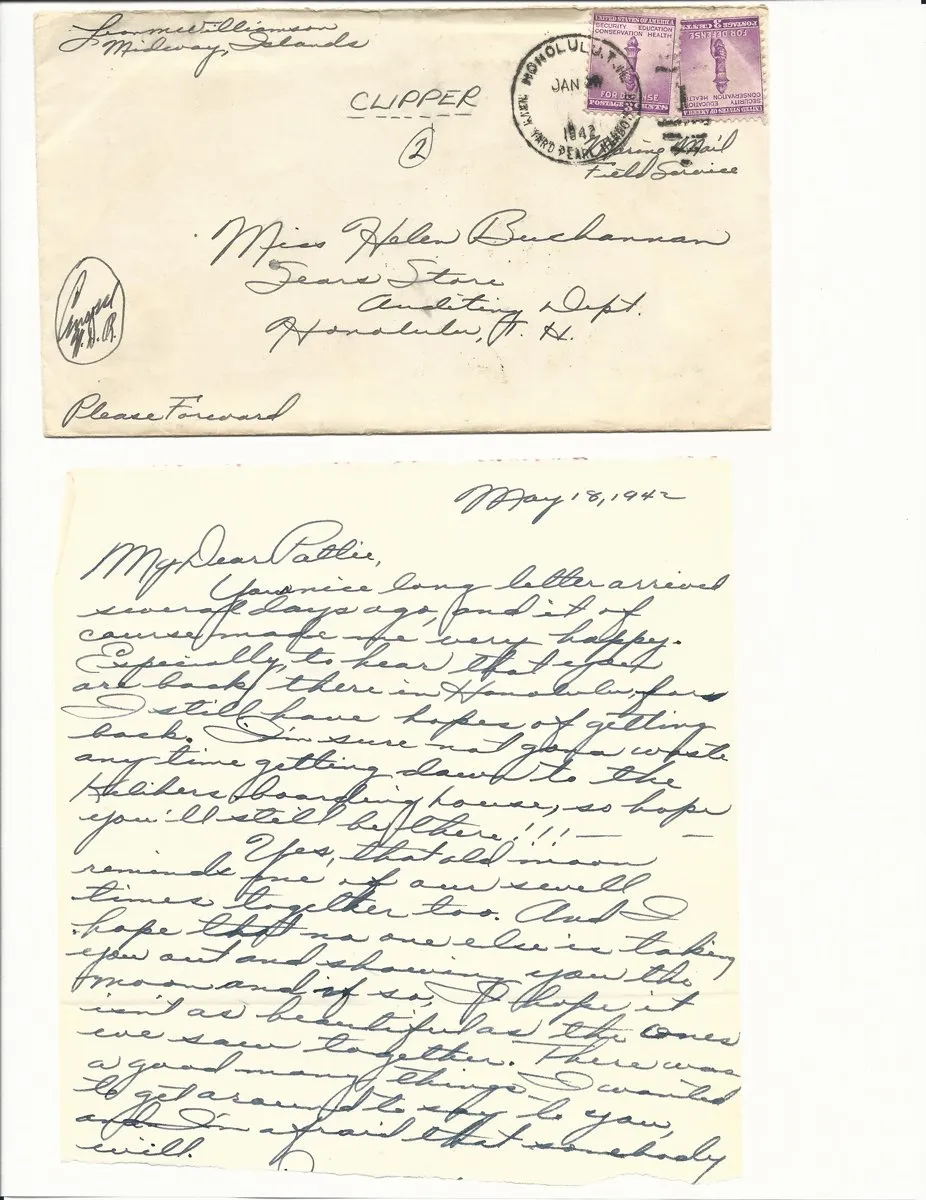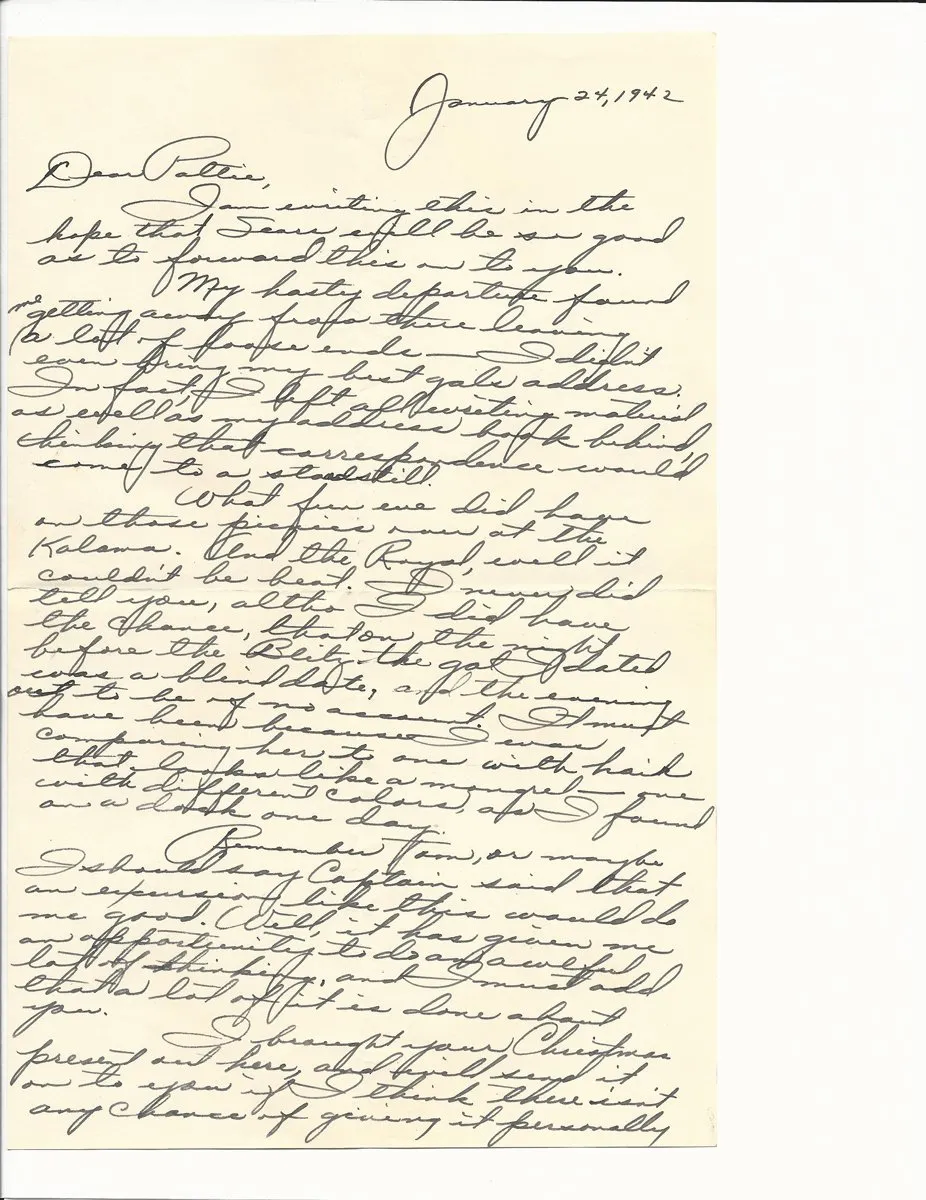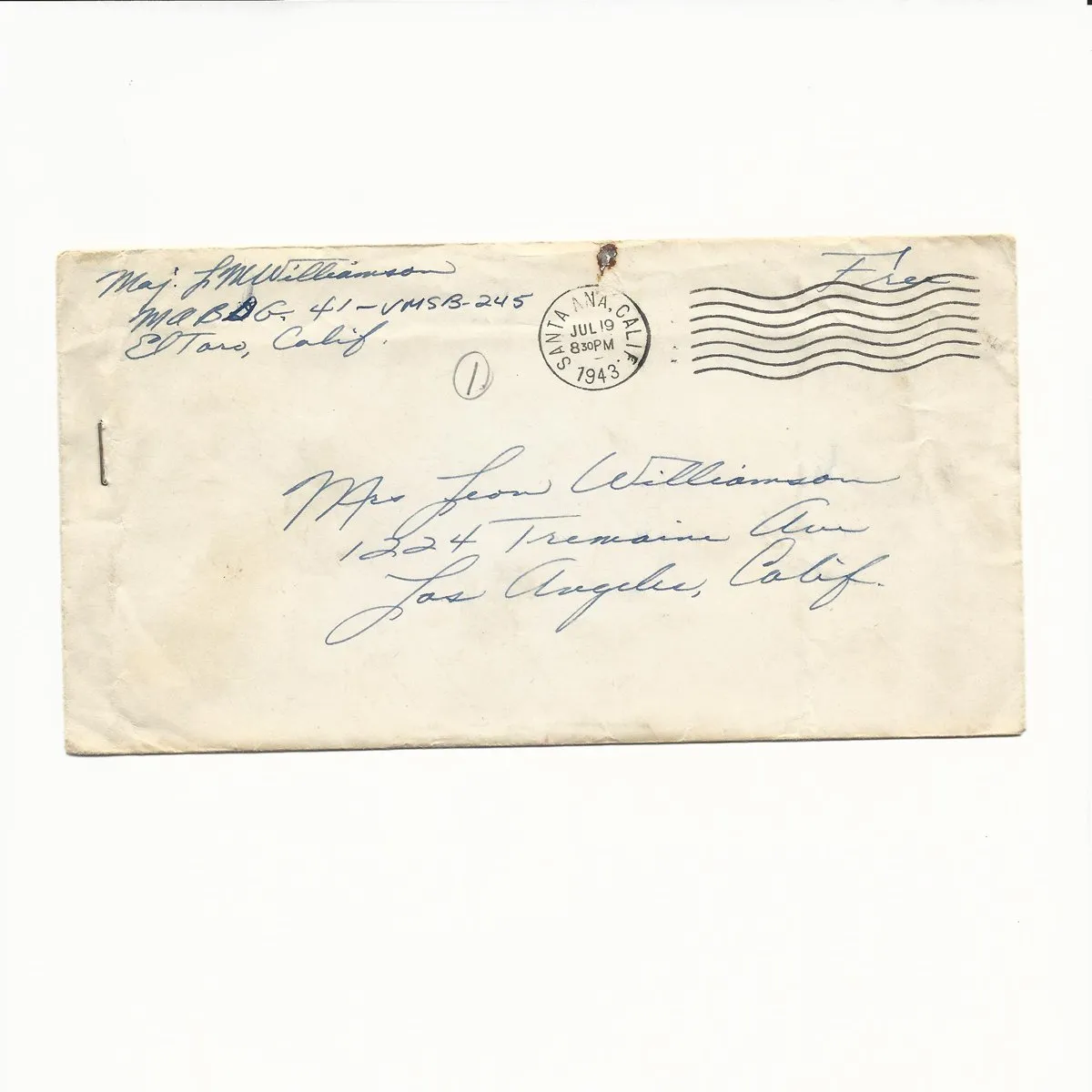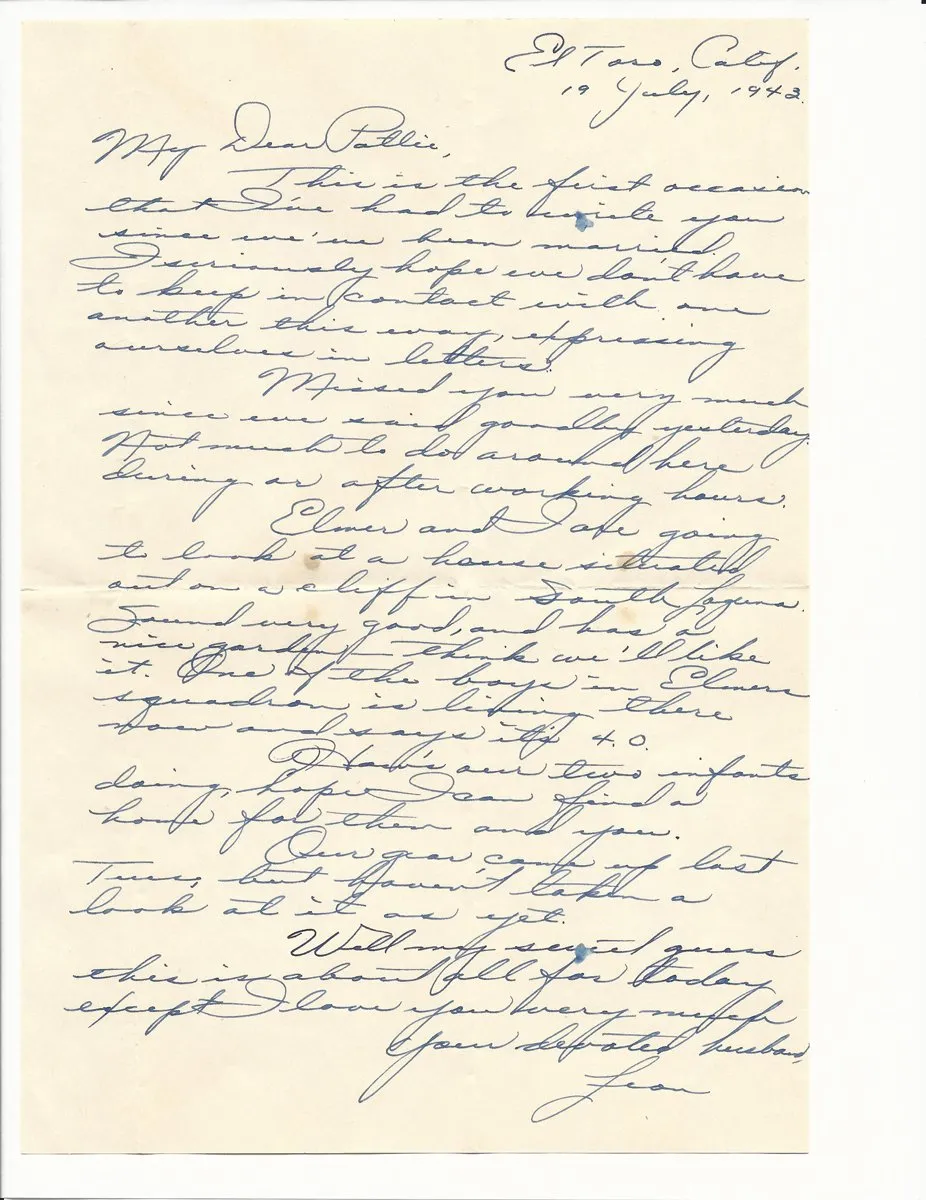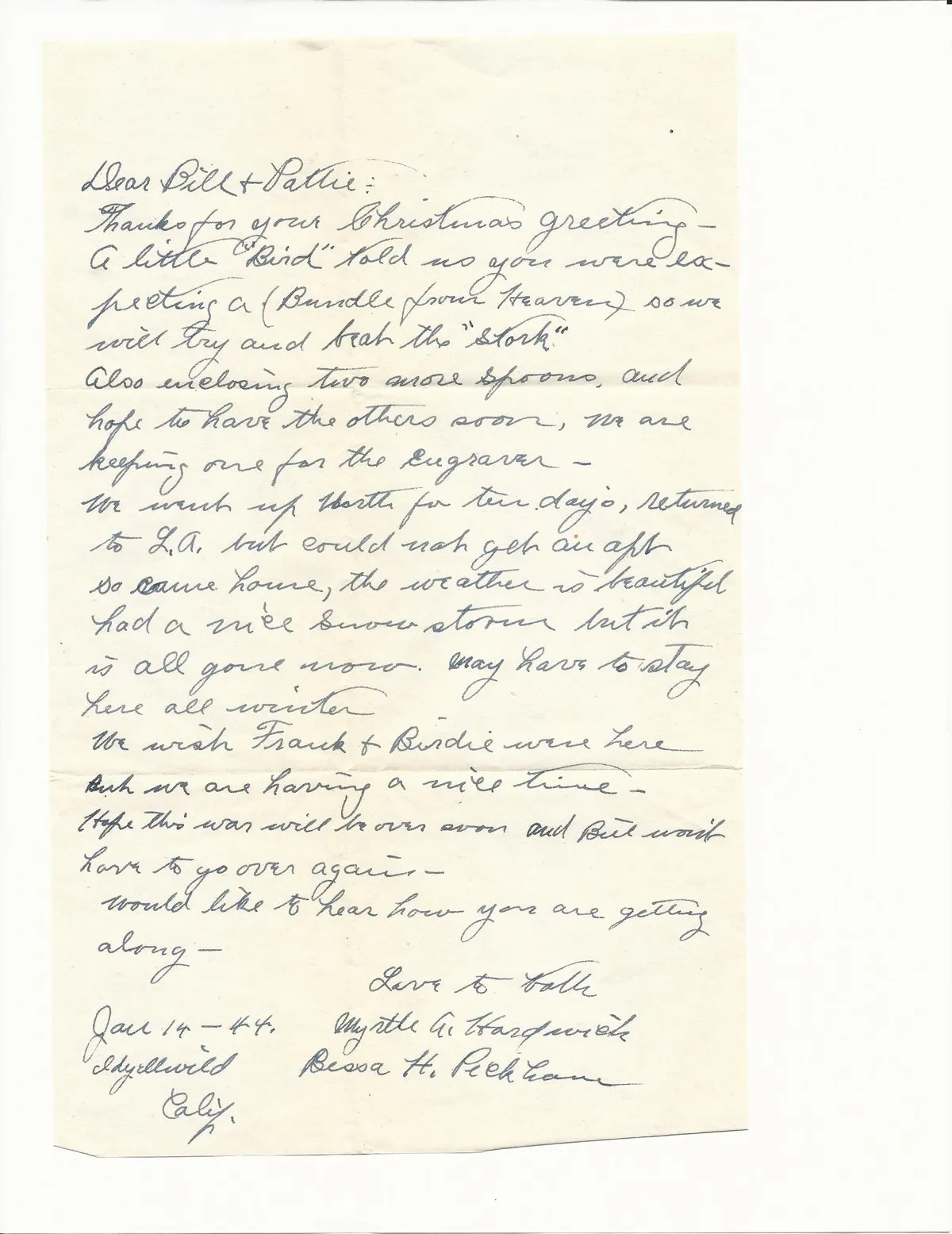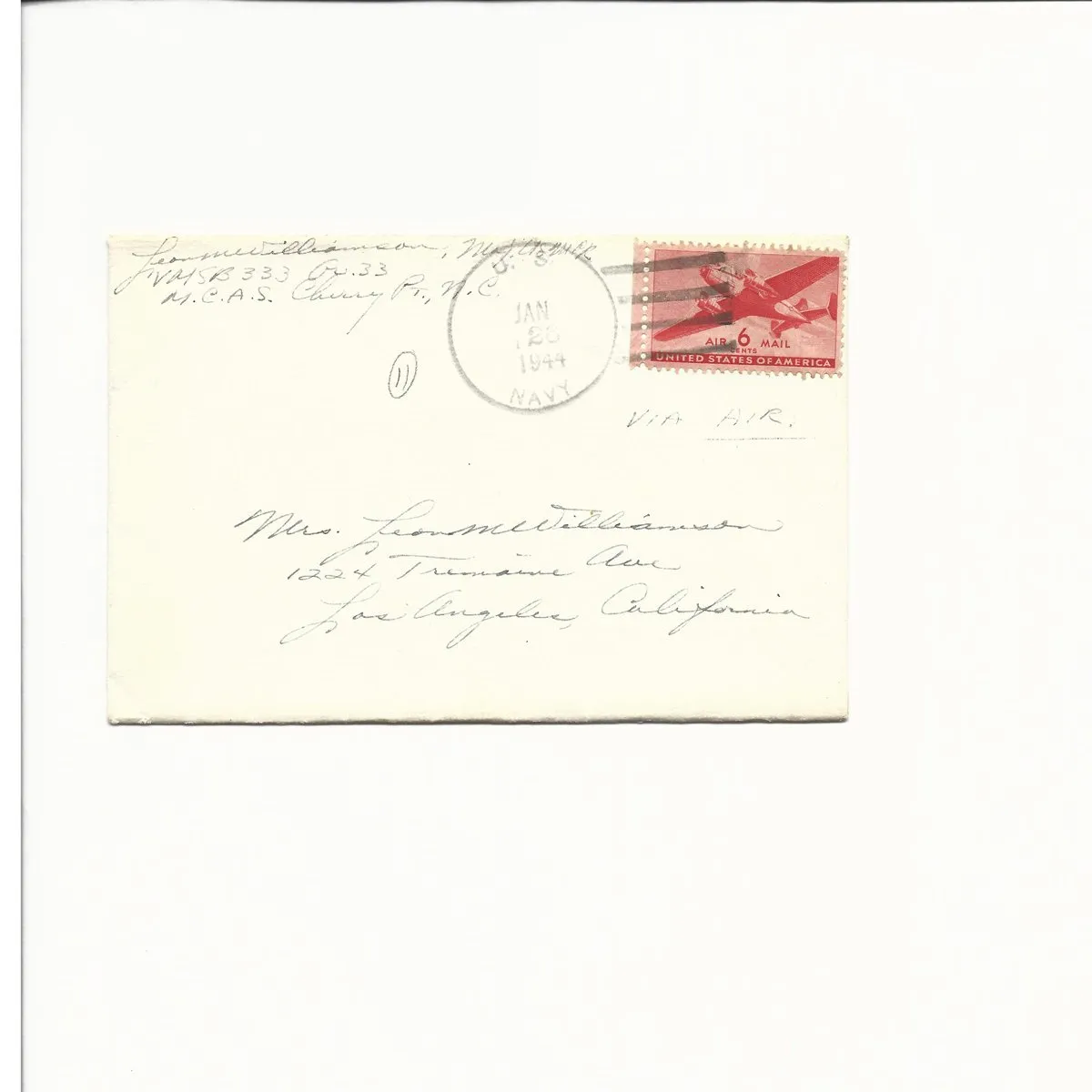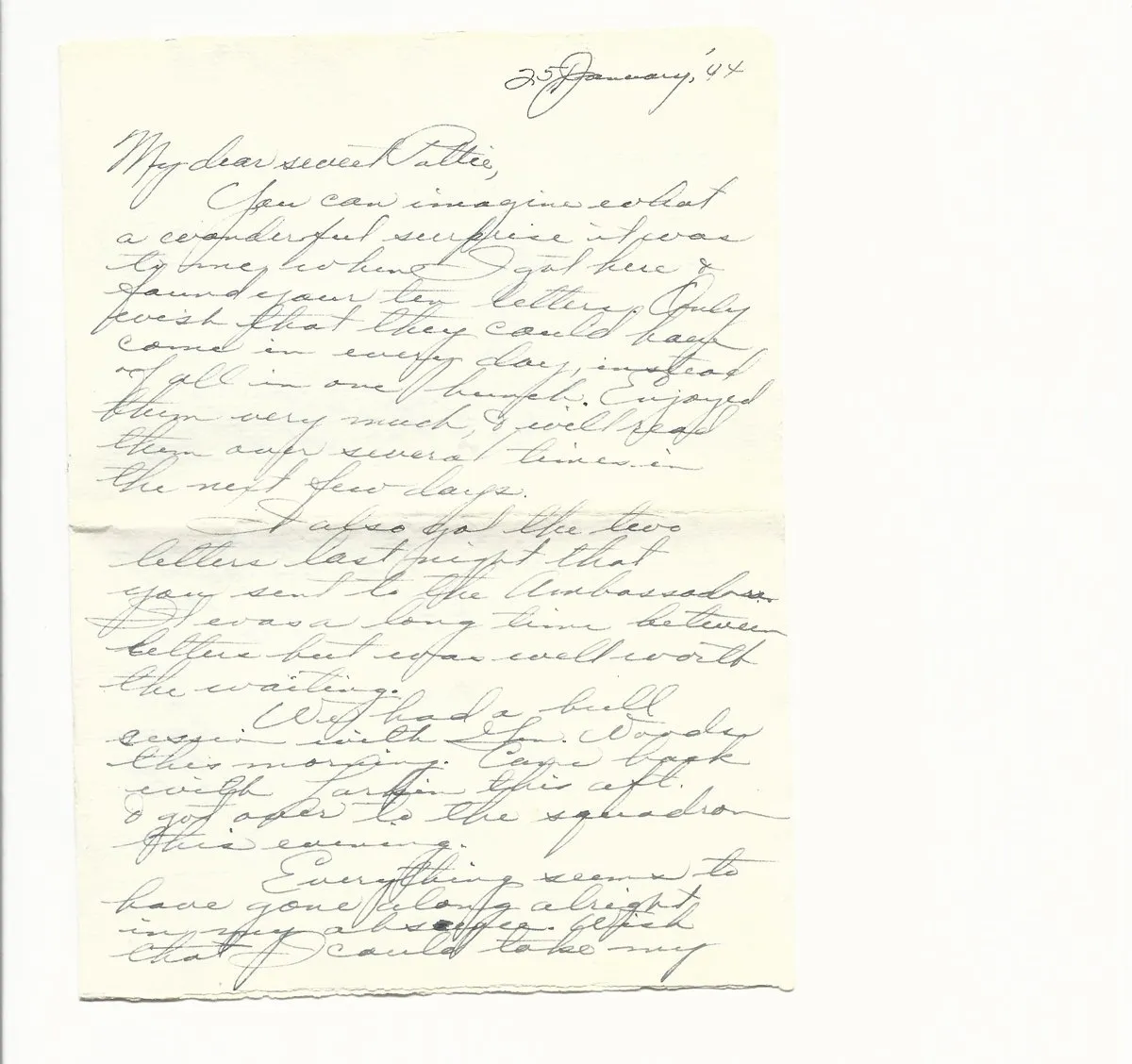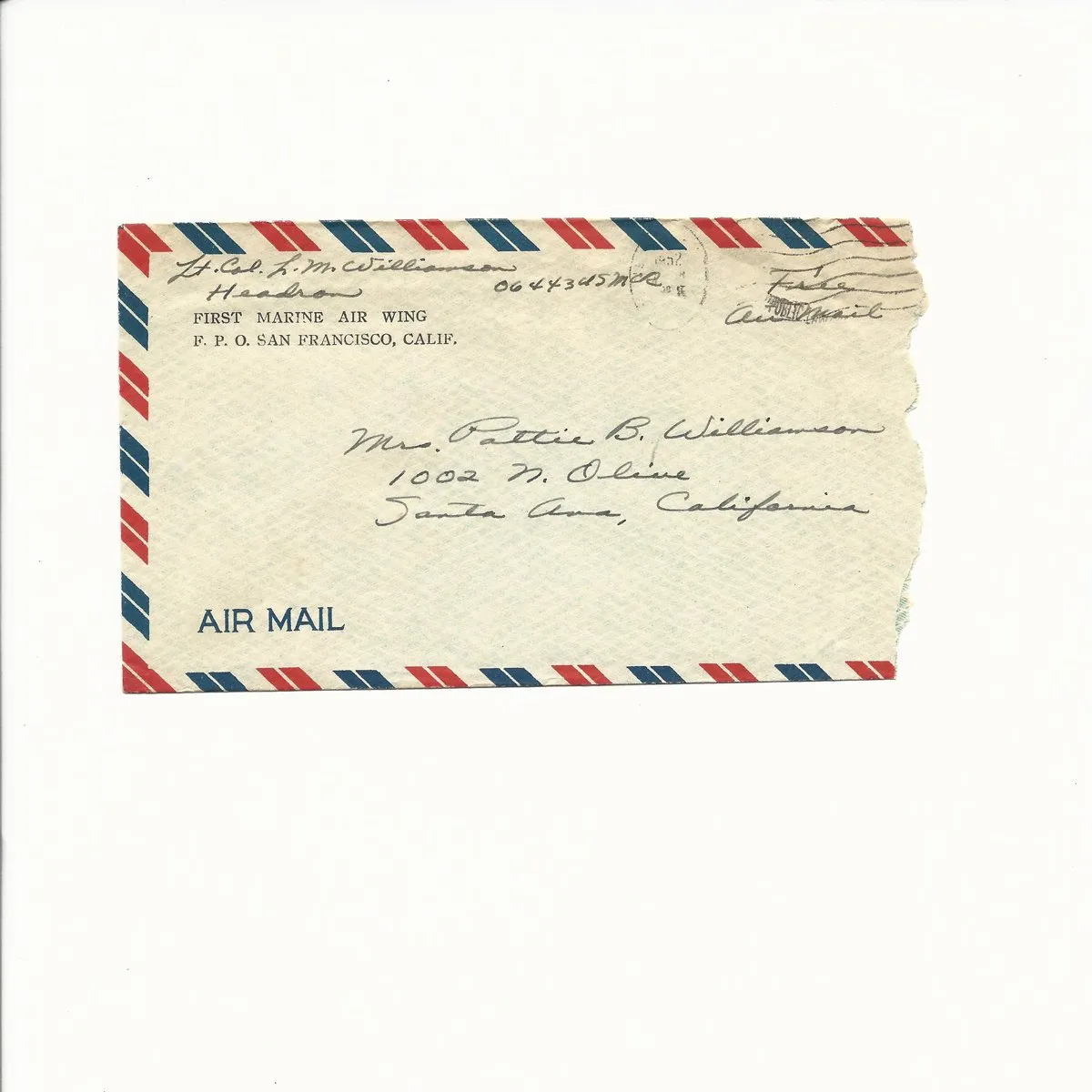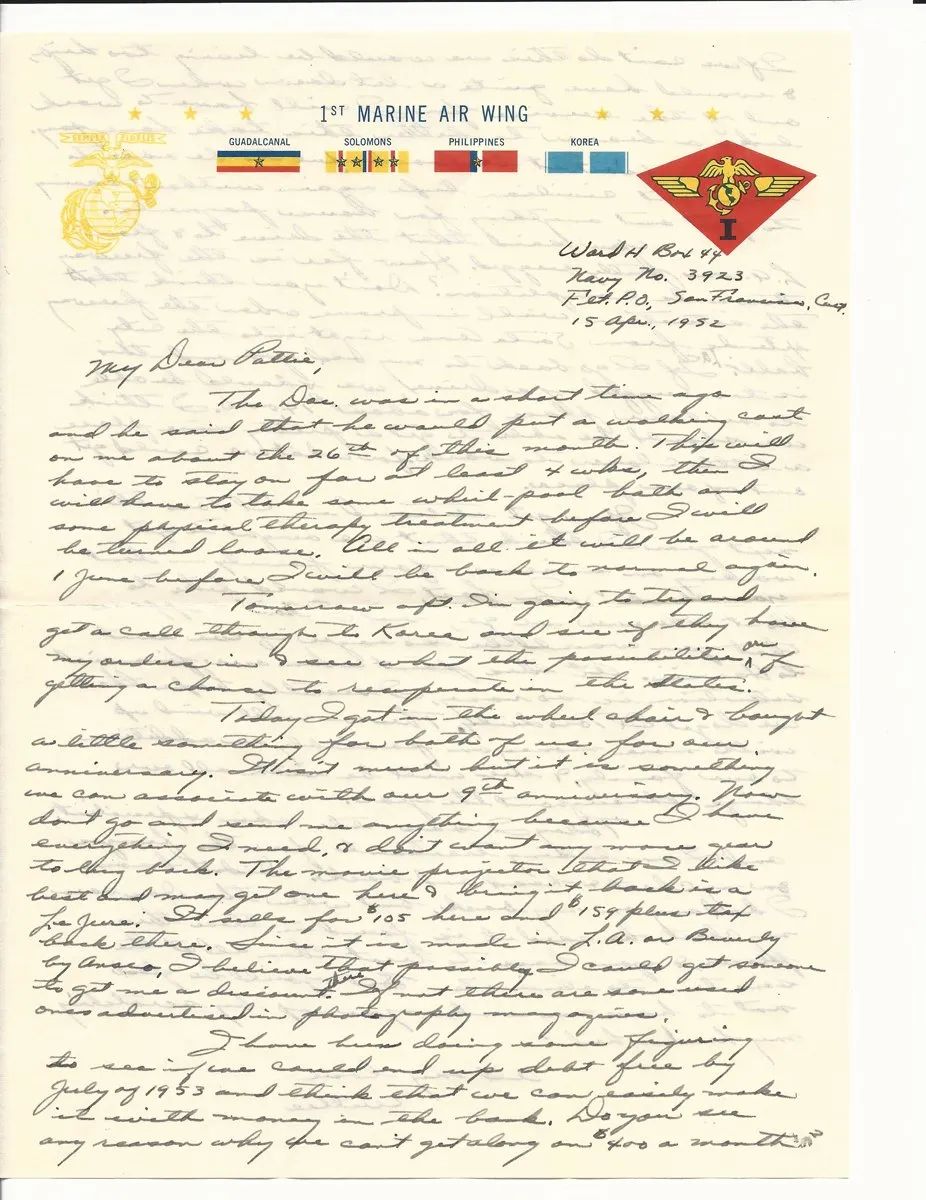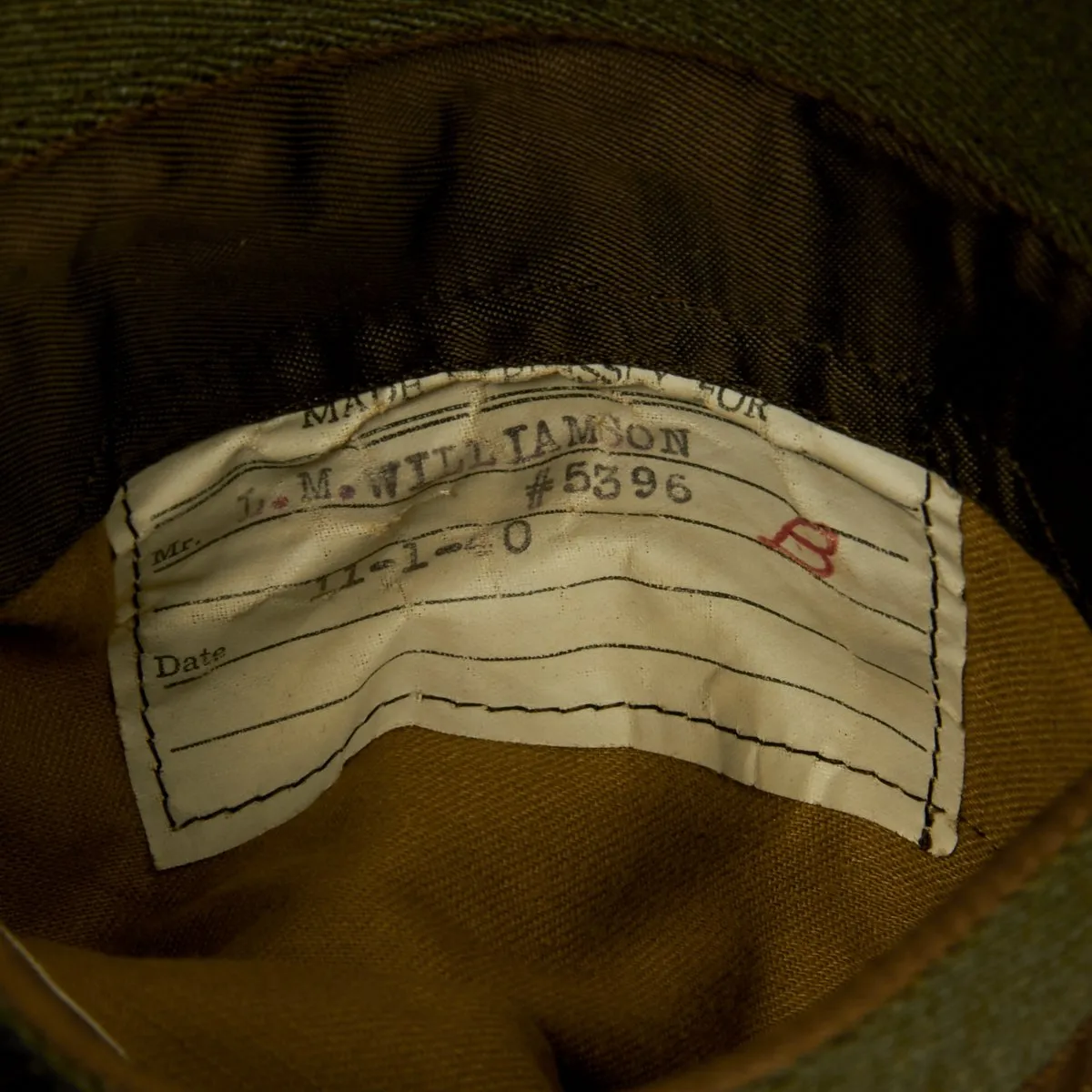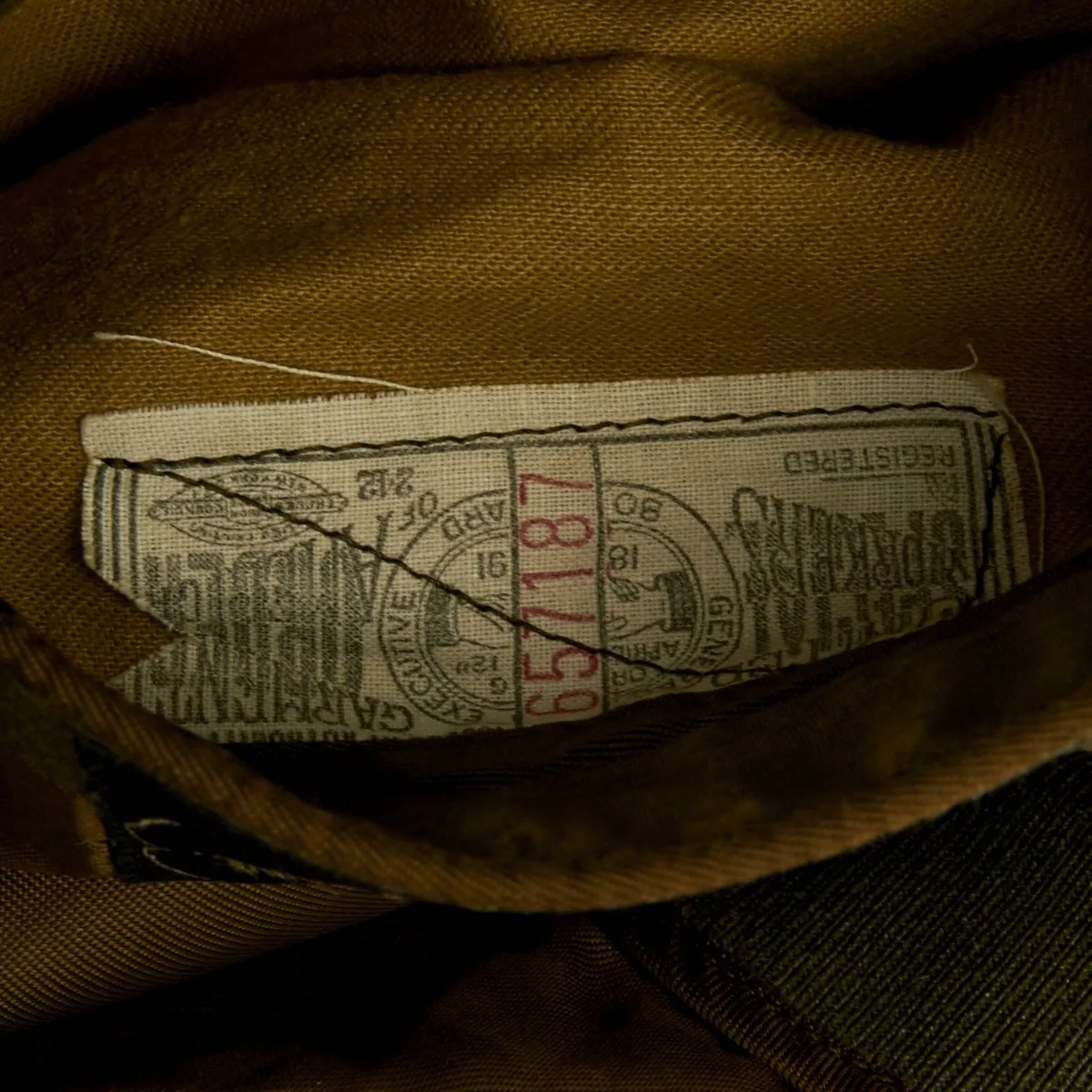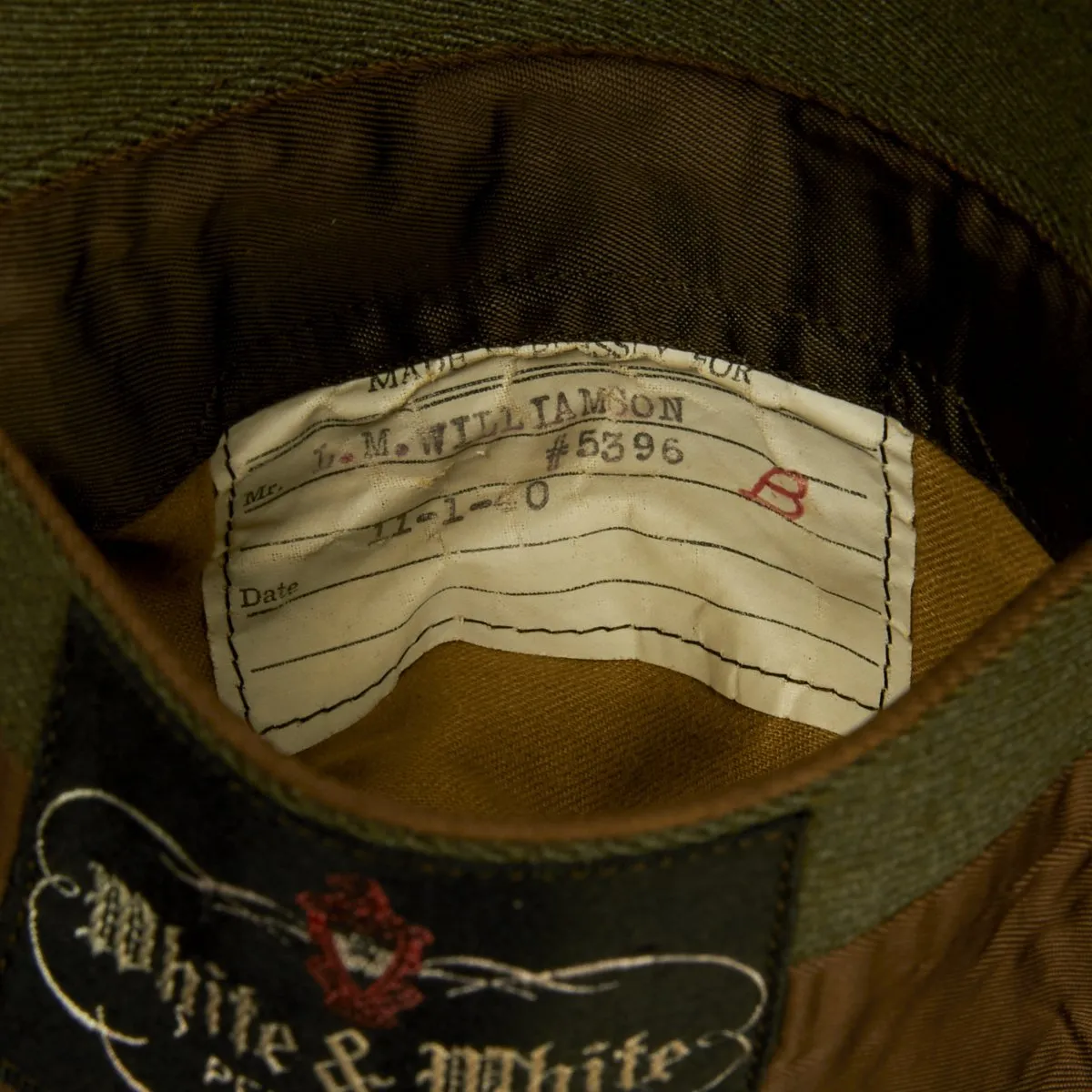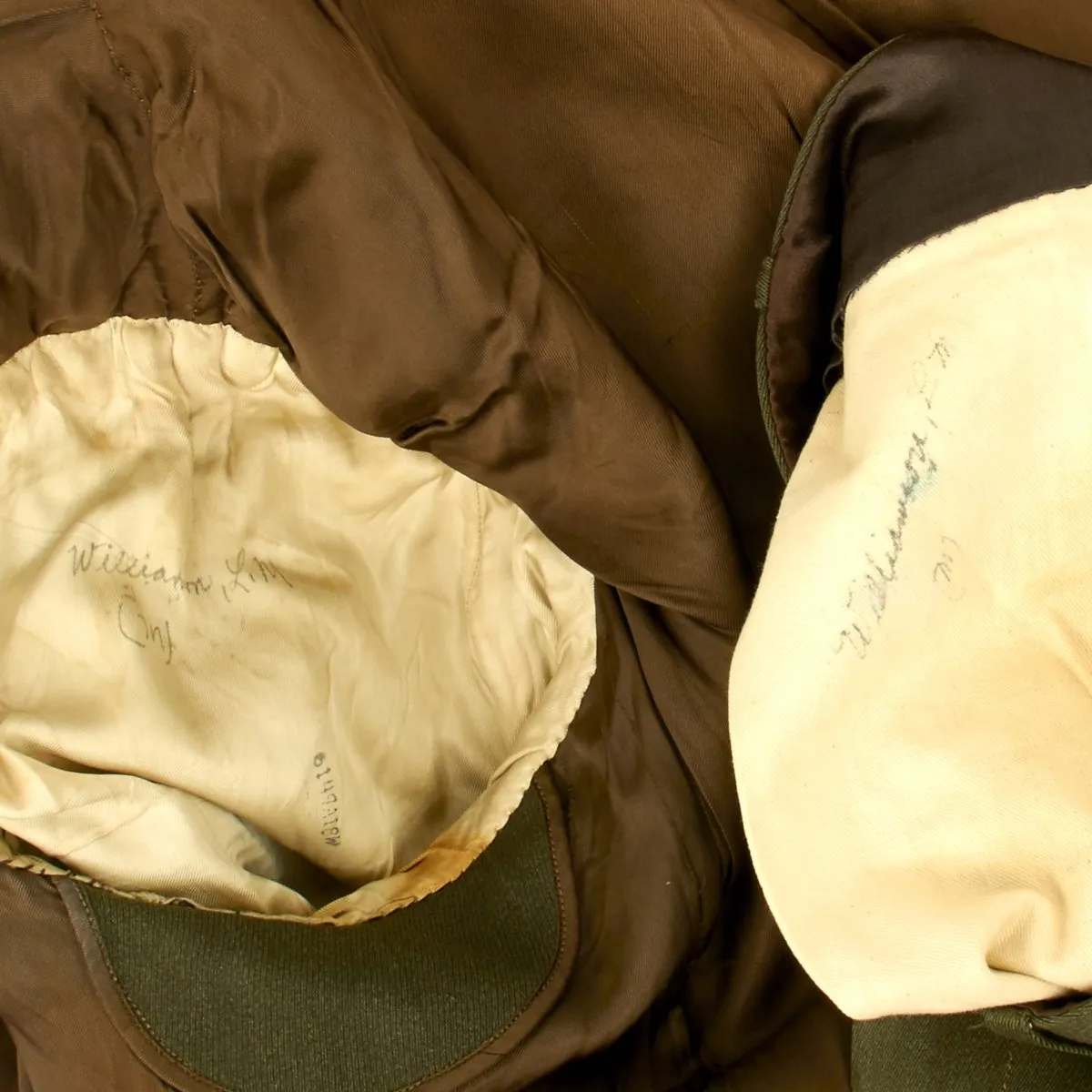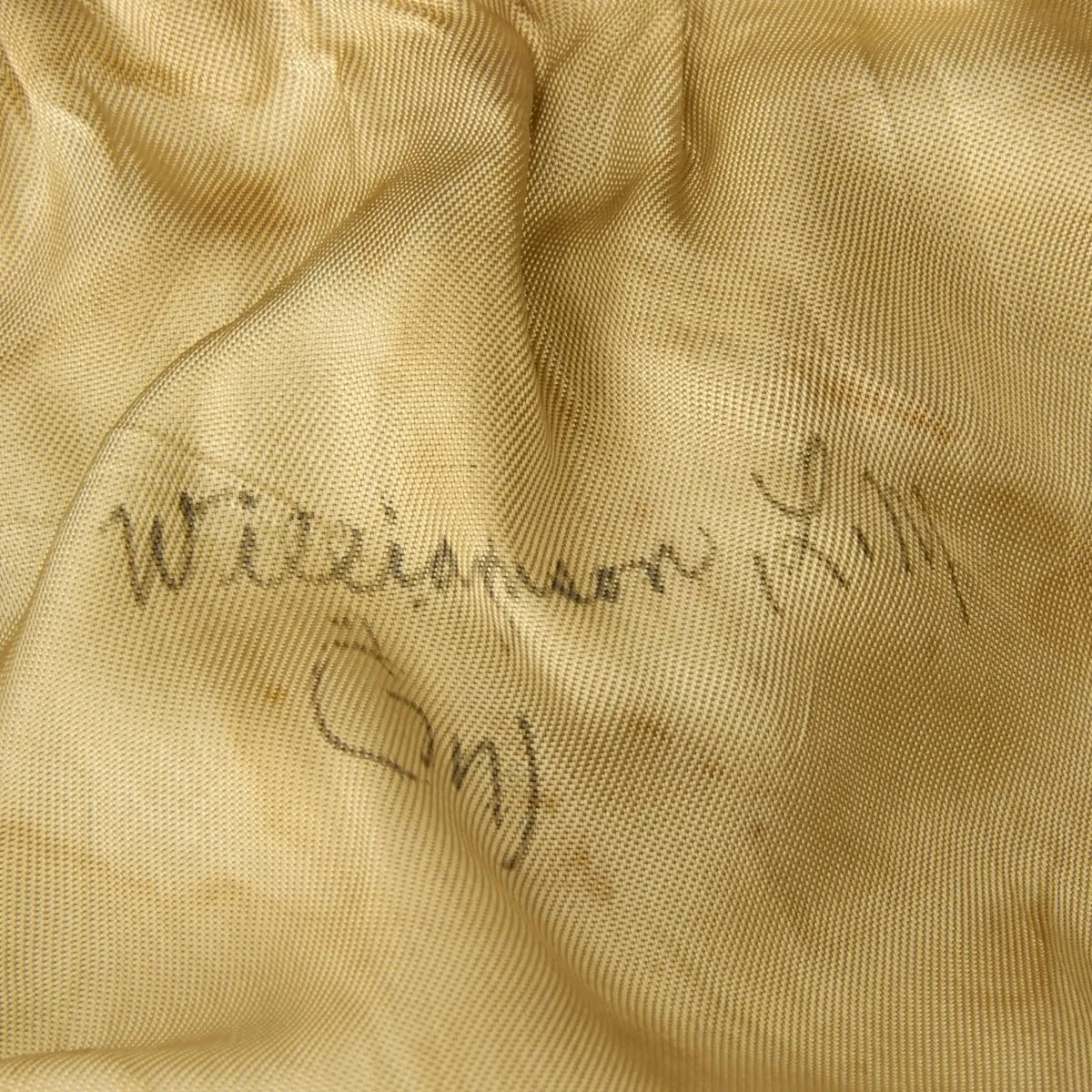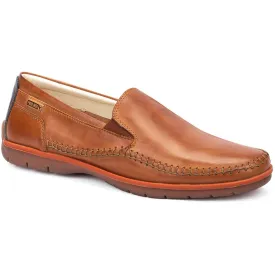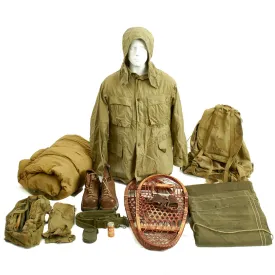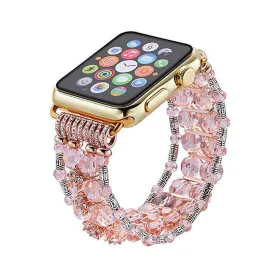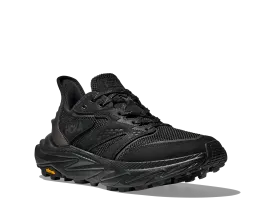Original Item: One-of-a-kind set. Colonel Leon M Williamson, USMC entered the United States Marine Corps in March 1940 and reported for flight training at Pensacola Naval Air Station in April 1940. Earning his wings of gold at Pensacola he was assigned to VMSB-241 later in January 1942. It was with VMSB-241 he would be part of the pivotal Battle of Midway in June 1942.
Williamson was a pilot in the USMC air contingent based on Midway Island and was attached to the renewed VMSB-241 that was commanded by Major Lofton R. Henderson. The men on Midway were told of the approaching Japanese Fleet that was on its way to seize Midway as their advance airbase in the Pacific. Admiral Chester Nimitz had personally inspected the island fortifications in early May and found the fortifications to consist of antiquated World War 1 equipment and weaponry. A rapid build up with newer equipment and weapons ensued over the month of May in expectation of the Japanese invasion, all the time realizing the importance of Midway. Although newer fortifications were established it consisted of mostly antiquated equipment developed during he 1930s. The airplanes were no exception, the aircraft of VMSB-241 consisted of 16 SBD-2 Dauntless and 14 SBDU-3 Vindicator dive bombers. These aircraft developed in the early 1930s would later prove no match for the defending Japanese Zeros defending the Japanese fleet.
VMSB-241 Commander Major Lofton was aware of the strength of the Japanese force when it was sighted by an island patrol on June 3rd. Loft saw defense of the island as a one way trip for those involved and announced that he would be taking off as soon as the fleet was within range and that the other pilots could follow if they wished. All pilots of VMSB-241 took off beginning at 5:50 AM the morning of June 4th and within 20 minutes all of the planes of Loftons command were airborne, then Captain Leon M Williamson was one of those pilots.
Williamson later stated, I was the 2nd Group Leader of the Second Division. Shortly after takeoff I saw the big V formation of the Japanese airplanes approaching Midway and saw their bombs dropping as we were forming up our squadron for the attack. Imagine the uncertainty that those pilots felt as to whether or not there would be a base to return to should they survive their attack on the enemy fleet!
Williamson would fly multiple missions attacking the Japanese Fleet during the Battle of Midway and was reportedly the only surviving SBDU-3 Vindicator dive bomber pilot from the island after the battle. For his actions in this battle Williamson was awarded the NAVY CROSS, pinned on him by Admiral Nimitz later in Hawaii. A copy of the Citation is attached.
Williamson would later serve as the Executive CO and CO of VMSB-233 from August 1942 to March 1943 during the Battle of Guadalcanal operating Henderson Field.
This incredible historic grouping contains the following pieces:
Uniform named in armpit and pants and with a custom label that is also named and November 1st, 1940. Based on that date it is very likely that Williamson had this uniform with him for both Midway and Guadalcanal.
Named Visor cap made by JOSEPH PANITZ & CO. 426 SO. SPRING ST. LOS ANGELES.
Wartime personal letters written by Williamson to his wife dated from 1942 through Korea in 1952.
Certificate of Recognition of Valiant Service at the Battle of Midway.
Complete research documentation from the National Personal Records Center in St. Louis that include formerly classified after action reports from the Battle Of Midway, duty assignments, and muster rolls.
Narrative presentation of the Battle of Midway that contains 36 personal stories of combatants in the battle.
Various wartime pamphlets.
Leather shoes.
Copies of Citations for the Navy Cross and Presidential Unit Citation and much more.
The President of the United States of America takes pleasure in presenting the Navy Cross to Captain Leon M. Williamson (MCSN: 0-6443), United States Marine Corps Reserve, for extraordinary heroism and distinguished service in the line of his profession while serving as a Pilot in Marine Scout-Bombing Squadron TWO HUNDRED FORTY-ONE (VMSB-241), Marine Air Group TWENTY-TWO (MAG-22), Naval Air Station, Midway, during operations of the U.S. Naval and Marine Forces against the invading Japanese Fleet during the Battle of Midway on 4 and 5 June 1942. During the initial attack upon an enemy aircraft carrier, Captain Williamson, in the face of withering fire from Japanese fighter guns and anti-aircraft batteries, dived his plane to the perilously low altitude of four hundred feet before releasing his bomb. Participating in a search and attack mission against a Japanese aircraft carrier on the night of 4 June, he brought his plane back to its base under extremely adverse weather conditions. The following day, after less than four hours' sleep, he took part in an assault which resulted in the severe damaging of an enemy battleship. His cool courage and conscientious devotion to duty were in keeping with the highest traditions of the United States Naval Service.
Captain Leon M. Williamson, United States Marine Corps, was awarded the Distinguished Flying Cross for extraordinary achievement while participating in aerial flight during World War II.
This is an incredible grouping from one of the heros of Midway. The lone surviving pilot of a SBDU-3 Vindicator dive bomber and winner of the Navy Cross as well as the Distinguished Flying Cross. It just doesnt get any more impressive than this!
History of the SB2U Vindicator
One of the first in a new generation of faster monoplanes, Vought-Sikorsky's XSB2U-1 was ordered in October 1934, and first flown in January 1936. The new SB2U-1 served as the Navy's first-line dive bomber prior to the introduction of the Northrop BT-1 and the Douglas SBD. Adequate for the time, 58 SB2U-2s were ordered in 1938, and 58 SB2U-3s in 1940. The SB2U-3s went to the Marine Corps where, already obsolete, they suffered very heavy losses at the Battle of Midway.
One of the first designs to usher in the monoplane era in the Navy, the Vought-Sikorsky SB2U was contracted for in 1934, and first flew in 1936. Deliveries of 52 SB2U-1s began in December 1937, followed by orders for 57 SB2U-2s in January 1938, delivered late in the year. In 1940, 57 SB2U-3 versions of the aircraft, the first to be known by the name Vindicator, were delivered, with most going to the Marine Corps. The -3 models had increased fuel capacity, plus provision for long-range drop tanks, .50-caliber guns fore and aft, and increased armor protection, all of which combined to add weight and reduce performance.
Woefully obsolete by the beginning of World War II and eclipsed by the better performing Northrop BT-1 and its successor, the Douglas SBD Dauntless, the Vindicator saw limited use. The SB2U's only combat was at Midway with Marine Scout Bombing Squadron (VMSB) 241, and resulted in heavy losses. For its performance in combat, Marine pilots called it the "Wind-Indicator." The SB2U's fabric-covered aft fuselage, which tended to tear, and the lack of adequate dive brakes limited the aircraft to shallower dives in the 30 to 45 degree range, increasing its vulnerability to anti-aircraft fire.
The aircraft on display at the National Naval Aviation Museum in Pensacola, Florida is the last known of its kind. It was salvaged from Lake Michigan after crashing during carrier qualifications and was completely restored by Museum staff and volunteers.




